B.O.T.A. Tarot: The Initiates Journey to Enlightenment
Introduction
This work, B.O.T.A. Tarot: The Initiates Journey to Enlightenment is intended primarily as an Initiates companion on their Spiritual Path to Enlightenment. Although the emphasis relates to those meditating on the subtle energies of Light and Sound, it is hoped that anyone following their personal spiritual journey will derive insight into improving their meditation and spiritual life.
The majority of textbooks on the subject deal with tarot from an exoteric viewpoint, looking at ways to predict the future and understand the past. Although Enlightenment has no future and no past, it may be that Tarot can provide us with some of guidance on what is needed to successfully develop the external part of our path and thus facilitate our inner journey.
With reference to the material in this project some definitions are appropriate:
(i) An Initiate is one who has been Initiated into the Light and Sound Energies and therefore meditates on these subtle spiritual vibrations.
(ii) An Adept is someone who has attained Enlightenment through the grace of the Spiritual Hierarchy, and knows their essential nature to be infinite, to know they have never been born and will never die.
(iii) The Path refers to the spiritual journey from Initiation to Enlightenment.
(iv) When the Initiate is referred to as ‘He’, this must be seen as representative of both genders.
The B.O.T.A Tarot and Golden Dawn
A few books on Tarot look deeper into the esoteric meaning behind the cards and relate them to the spiritual path but even these are limited by how far the author has spiritually evolved. Jung for instance relates the major arcana to psychological archetypes whilst others such as Paul Foster Case seem to go much deeper and have tried to produce a detailed account of Tarot occult symbolism, much of which is included here with the annotated images.
Paul Foster Case was a member of the Hermetic Order of the Golden Dawn. Historical texts indicate every member in the Hermetic Order of the Golden Dawn (a late 19th Century Esoteric Society) had to make a personal version of the master Golden Dawn Tarot Deck, thus improving their understanding of the subject.
The Builders of the Adytum Tarot (B.O.T.A.) was the deck created by Case and is a more esoterically detailed version of the Rider Waite Deck. It is this tarot deck that is used in the tarot illustrations throughout this article.
Other members of the order included Pamela Coleman-Smith, William Butler Yeats, Aleister Crowley, Arthur Edward Waite and Paul Foster Case. Three of them went on to publish their own decks and found new traditions namely, Crowley, Waite and Case.
The Smith-Waite deck was first published in 1909 and the B.O.T.A. deck just a few years later. It is mainly these decks that are used to explain and understand the tarot. The image below shows (left to right) Pamela Coleman-Smith, Arthur E. Waite and Paul Foster Case.
The Water Tap and the Flow of Life
Turn on a tap just as much as to let the first drops of water drip out of the spout – a life like this has no flow, no continuity and no  consistency. As the drops of water are pulled straight down by gravity this life is controlled by external influences and has little power and little presence. Turn on the tap a little more – the water flows but its flow is turbulent, a mixture of a variety of little streams spiralling and wriggling their way downwards together with no clarity – a life like this has established continuity but the flow is erratic, there is no overall direction, little consistency and still no directed power.
consistency. As the drops of water are pulled straight down by gravity this life is controlled by external influences and has little power and little presence. Turn on the tap a little more – the water flows but its flow is turbulent, a mixture of a variety of little streams spiralling and wriggling their way downwards together with no clarity – a life like this has established continuity but the flow is erratic, there is no overall direction, little consistency and still no directed power.
Turn on the tap until the water flows out together as one smooth continuous ‘laminar’ flow. A life like this flows smoothly, is seen as clear and unified, it flows with one unified direction and has power and single focus and direction.
Turn on the tap still more until the flow of water again becomes turbulent. A life like this has too much unbalanced internal force and conflict, it loses its power and direction, it loses its clarity and consistency; it has gone past the point of balance.
The tarot cards of the Major Arcana can be seen as The Fool with three sequences of seven cards.Each sequence is one of seven stages of ‘Potential’, ‘Rigidity’, ‘Yielding’, ‘Austerity’, ‘Humility’, ‘Unification’ and ‘Achievement’ designed to bring our life into balance and harmony and therefore enrich both our meditation and daily life.
Therefore, the aim of this project is to let our physical, emotional and mental qualities flow in a laminar (smooth) way rather than through stagnation or turbulence. The transitions of the cards detail this process along with giving practical advice on how we might improve our meditation and Spiritual Journey to Enlightenment.
Major Arcana as Three Sequences of Seven
The Major Arcana has been studied in this work as a process of transition of the first card “The Fool” through three sets of sequences of seven cards:
‘The Physical Sequence’ or interaction with the external physical world (The Magician to The Chariot Cards),
‘The Emotional Sequence’ or facing and coming to terms with internal emotional nature and reactions (Strength to Death Cards), and finally
‘The Mental Sequence’ (The Devil to The World Cards) or facing and coming to terms with our internal mental state.
These three sequences of seven, which is the basis for this tarot workbook, can be summarised below:
We will now discuss these transitions in detail which should empower the reader to be able to look deeply into their own spiritual path and become more self-aware in the process. However, we must begin with the Fool to place the Spiritual Journey on the Light and Sound in context.
The Fool Tarot Card Symbolism
The card shows the Initiate carrying a bag over their shoulder which contains the qualities they need to sort out in their self as well as the tools they need to use on their spiritual path.
The Fool represents the New Initiate and symbolically stands outside the sequence of the other twenty-one cards. Initiation means a ‘beginning’ of the journey of meditation using the Light and Sound. They have not yet acted upon the path before them and engaged the sequences of the major arcana.
The Initiate has not worked on these things within their self yet. Similar to what the essence of the card stands for; they represent just their ‘potential’ and as yet remain undeveloped. The Fool standing at the prepuce is symbolic of the choices before the New Initiate:
(i) Will The Fool (Initiate) follow the spiritual path?
(ii) Will The Fool (Initiate) fall back into the world?
(iii) Will The Fool (Initiate) remain immobile at this start point and neither progress nor return into the world?
These are all outcomes that are demonstrated throughout history and we have to decide which will be our path.
This aphorism summarises the journey of The Fool (Initiate) in their quest for Enlightenment:
The Physical Sequence
This first sequence of Tarot Cards is about our interaction with the world; the seven cards are shown below.
| Potential | Ridgidity | Yeilding | Austerity | Humility | Unification | Achievement |
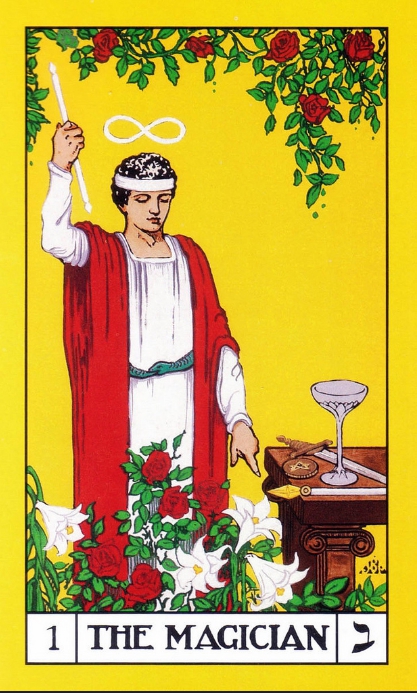 |
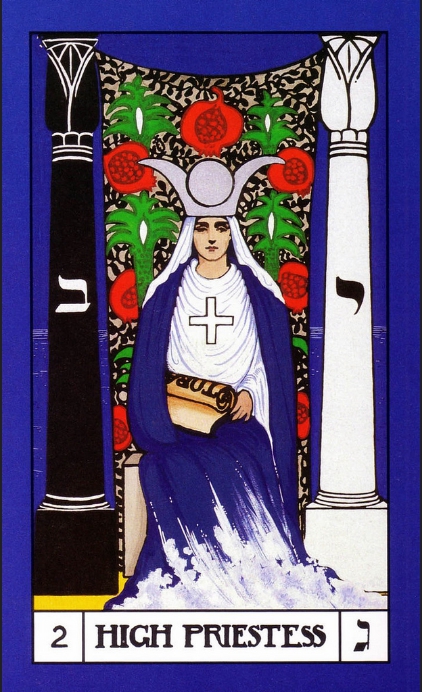 |
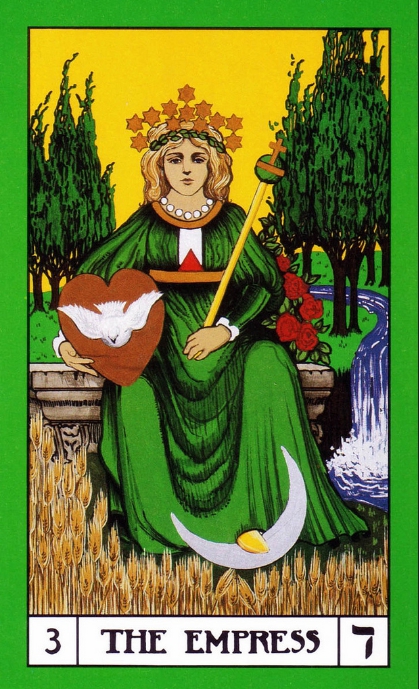 |
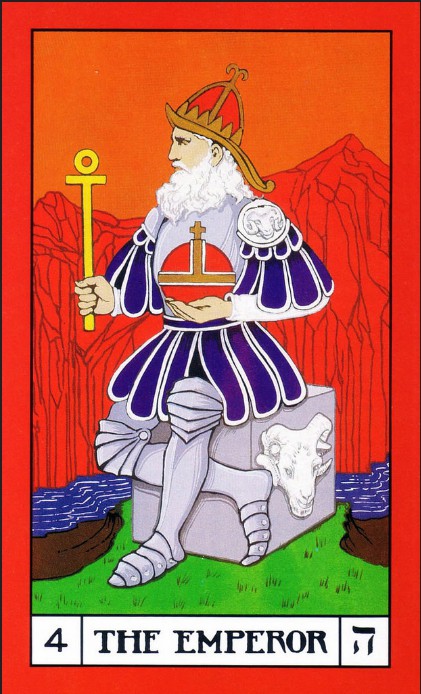 |
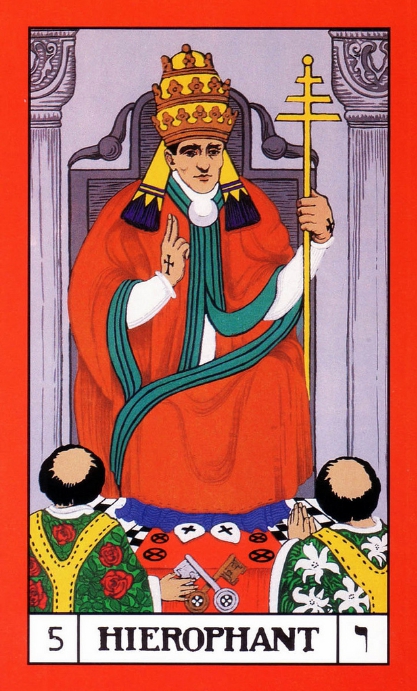 |
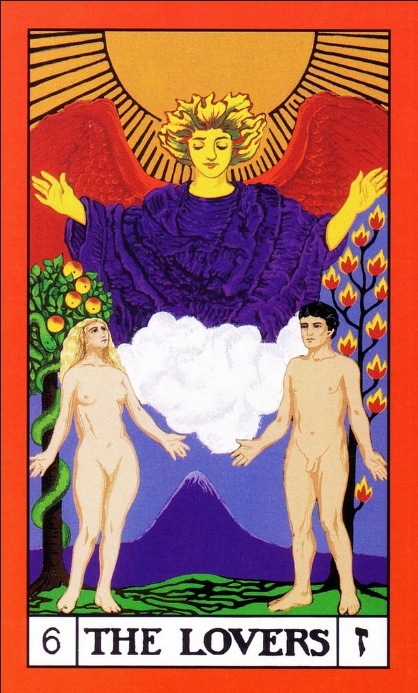 |
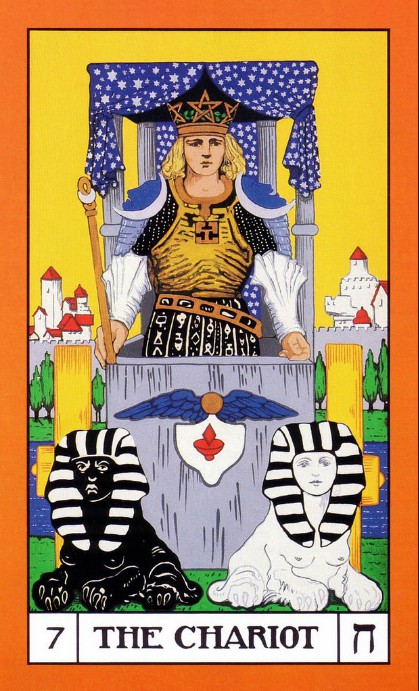 |
Transition 1: The Fool – The Magician
1.1 Summary of this Transition
The Magician represents Potential within the first sequence of the journey.
The first transition in the first sequence for the Initiate to make is between The Fool and The Magician. This transition is that of initial re-engagement between the Initiate on their spiritual path and the external world – there is a new awareness of separation from the external world that has captivated the person up until this point, an opportunity to start again. The transition between these two cards is a move from the first revelation of the Light and Sound in The Fool to some recognition in The Magician of what they need to resolve within themselves, the tasks ahead and what may be required of them to proceed with the journey.
1.2 The Magician Tarot Card Symbolism
Initiation provides the Initiate the first ability to step back from their self, they may recognise what parts of their interaction with the world they have to work through and come to terms with on their spiritual path ahead. Everything is laid out on the table before them for to perceive and perhaps ‘digest’ what is needed of them.
In the card there are white lilies (purity of spiritual purpose) mixed with red roses (passions of the world). By living in the world we are better able to see our attachments and they can show us by reflection what we need to resolve. The infinity sign above the magician’s head symbolises the infinite potential of the person but they do not perceive or recognise it as they have just started on their journey. The wand points upwards and symbolises where they want to go and also the decent of Spirit into matter.
1.3 Relevance to the Initiate
When one is first Initiated it is important to recognise that although Initiation is an incredible change, it is also the start of a journey. Initiation can give insight that has not been possible before, both insights into our selves and into our interaction with the world. The Initiate can see the potential within them of how they might live in the world and also begin to see what may need to be changed. It is important to take time to take stock of what has happened and any realisations that may occur, being kind to ourselves as we adjust to our new viewpoint on life.
1.4 Potential challenges for the Initiate
The transition is all about engagement – does one engage with The Path or remain at the starting point? It can feel like diving into deep water and feeling out of one’s depth. Expectations can be very high and the ‘answer’ to all questions may remain unfulfilled once Initiation has been given. This can also lead to becoming disillusioned or actually giving up on the journey. There are occasions when either the Light or Sound or both are not perceived on Initiation, and it can be a reason for concern or doubt about the journey and one’s ability to undergo the process. New energy flows into the Initiate’s life and they may feel new freedom and yet fear of the unknown.
1.5 Guidance for completing this Transition
After Initiation has been given it can be a time of great joy and yet also sometimes uncertainty as indicated in the previous section. This is where Adepts and other Initiates can be a great source of help and advice on what is a rather subtle but very profound change in the life of the new Initiate. Talk to others about how you are, share your inner thoughts, feelings and experiences rather than keep them bottled-up or circulating in your mind.
It is important to continue the practices that were established before Initiation – meditating regularly, reading spiritual books to aid motivation and attending meetings. Do not try to change too many parts of your life at once, do what you have been doing while you settle into being an Initiate and being committed to the path. Feel the potential of The Magician and its power.
It is very important to apply oneself to one’s meditation and yet also to be detached from expectations, to relax and remove expectation from meditation and just allow the process to happen rather than looking for phenomena. By allowing space to open up in our lives we can actually let the Light and Sound in and work its magic!
Transition 2: The Magician – The High Priestess
2.1 Summary of this Transition
The High Priestess represents Rigidity within the first sequence of the journey.
This transition is that of the defining point of decision and commitment to follow the path to complete the journey. Now the Initiate is contact with Light and Sound, now that meditation on Light and Sound is no longer only an idea, they have to decide to follow The Path and to commit to following it. When ready, the Initiate needs to move beyond discovering potential and commit to making the journey.
2.2 The High Priestess Tarot Card Symbolism
This stage denotes the reaction to the first card or stage. Initiation lifts a person’s level of awareness out of everything they have known before, and gives a new viewpoint of what they face in themselves and on The Path.
Starting to perceive both the magnitude and the depth of the mysteries beyond the twin pillars that is to be worked through, the Initiate may be taken aback. When what is required of the seeker is digested in The Magician and this can sometimes produce doubts as to whether the person has what it takes to follow and complete The Path; if they have the confidence, perseverance, inspiration and willingness to change in order to move forward.
The High Priestess promises to reveal but keeps things hidden. The Scroll she bears in half covered so the secrets of esoteric knowledge need to be sought and not just given. She sits in front of the two pillars which show the gateway to what lies behind the veil of pomegranates which are said to represent the ancient mysteries.
It is at this stage the Initiate may glimpse what can be realised on the path, but that they must learn to walk the path, it will not be revealed to them without sincere effort. Now the Initiate must decide to return to the indecision and lack of commitment of The Fool and try to deny the realisation of the potential seen in The Magician or to move forward through the twin pillars. It is a focal point of rigidity because the flow of the process stops in order to be redirected hopefully forwards and not back.
2.3 Relevance to the Initiate
No matter how well someone may have prepared themselves for Initiation, they cannot have known the magnitude of the event nor comprehended the depth and size of the journey upon which they have embarked. Initiation cannot be understood by the mind because it provides a link beyond the mind. It can therefore be an awakening not just in a spiritual sense but also to the person’s individuality. Before Initiation the seeker may have known physical, emotional, mental and possible intuitive energies, now there is a new influx of spiritual energy which can potentially transform all of what the person has known before. To pass between the two pillars of duality and follow the path is to pass through the ring-pass-not that has been opened up by Initiation.
Ring Cosmos = Masculine principle.
Ring Chaos = Feminine principle.
Ring Pass Not = the limiting, shielding force.
Before Initiation, we may have had a sense of self that was based entirely on our role in the world and how we interacted with others and it may have seemed that our role was who we were. This is in effect our first ring pass not, or the ‘shield’ limiting our spiritual awareness of our greater SELF.
Just like moving through the masculine and feminine pillars & veil of illusion behind the High Priestess, we must move beyond the veil of our personal ring pass not (limitations of consciousness) to find an expanded awareness through our meditation.
2.4 Potential challenges for the Initiate
This transition is all about commitment. Will the Initiate decide to pass through the two pillars/aspects of duality to seek to know and become that what lies hidden within, or will they be overcome with the magnitude of the task?
The Initiate may feel overwhelmed by the tasks now more clearly seen and may want to walk away from The Path and any imbalances, qualities and conflicts they now see need to be resolved.
Some specific examples could include difficulty getting to spiritual meetings, problems with meditation; fears about teaching or spreading the path or health issues that may interfere with meditation. The new viewpoint given by Initiation may allow the person to become more aware of their interaction with others and the world and it may be hard to accept what they start to discover.
2.5 Guidance for completing this Transition
Once again, Adepts and other Initiates can be a great source of help and can advise on how to manage your reactions to the subtle but very profound change in your life. Continue to talk to others about how you are, share your inner thoughts, feelings and experiences, especially with those that may have had similar experiences so the process does not seem overwhelming and can be managed more easily.
It is important to continue regular meditation, reading spiritual books, attending meetings. Accept that this is a huge change in your life and take time to come to terms with it – again do not try to change too many parts of your life at once, do what you have been doing while you settle into being committed to the path. Feel the magnitude of the transition and also that you have been given the right to access what lies within. Remember what brought you to The Path, what motivated you, and where you want it to lead.
If we discover or perceive conflicts with the world and parts of ourselves that we do not like, then remember that our personality and the way we interact with others is not the true self we can discover in meditation and that these external aspects can be accepted & modified along the way.
Transition 3: The High Priestess – The Empress
3.1 Summary of this Transition
The Empress represents Yielding within the first sequence of the journey.
This transition is that of applying oneself to the practice of meditation or to resolving any situation. The Initiate has learnt from meditation or the situation and is now ready and able to apply their self with insight and wisdom to respond rather than react. As well as being detached and aware, application and effort are required to move forward and to do so in a balanced and healthy way.
3.2 The Empress Tarot Card Symbolism
This stage denotes how to move on from the second card or stage. This card represents an attitude and process that is very fundamental to the spiritual path. The picture tells a story of yielding. The Empress is Yinness. She sits amongst the fertile and receptive earth.
In the I-Ching, the Earth Trigram is represented by three yin lines, again emphasising the receptivity of the card:
The Empress also brings forth Life as she has an unborn child to bring forth into the world.
This ‘yielding’ principle is one of the keys to successful meditation on the Light and Sound. The Initiate has to be prepared to give up and dissolve their attachments and identity and allow a greater space to be recognised inside. Perhaps one of the reasons we do not recognise our natural expanded state is that we are too busy filling up the space with our attachments in the world and in our relation to the Light and Sound. Yielding allows us to almost be “meditated upon” by the Light and Sound.
It is very important to note that this card occurs before The Emperor or Austerity in the process. The Initiate must apply themselves to their meditation but this must be done by surrendering to the Light and Sound. The discipline of The Emperor required to actually meditate regularly is necessary but therefore secondary to the attitude that the Initiate takes into their meditation; hours spent ‘meditating’ where the Initiate tries to be in control of the process are unlikely to produce much progress.
This transition is that of giving in to the inner power of the Light and Sound. Progress is made by trusting the commitment and devotion to The Path that was made at The High Priestess as well as trusting the Light and Sound. This principle also applies to interactions in the world, where the Initiate needs to be open to and learn from situations before reacting.
3.3 Relevance to the Initiate
Following the spiritual path is a process of surrendering during meditation and to the external teachings of the Path, learning to digest and take on board insight that comes in meditation or through guidance from, and interaction with, Adepts and other Initiates. The further the Initiate progresses along the path, the more flexible (and yet firm) they will become (rather than rigid) – no longer being attached and limited by any one particular set of beliefs or attitudes but open to and learning from all that is around. The Initiate must to continue to accept that those who have gone before can provide great help. Initiates can break through attachments by first of all accepting that the attachment exists i.e. where they are with it, before applying themselves to releasing themselves from it – trying to change something without acknowledging that it exists and seeing it for what it is will rarely be successful. The answer to a question lies within the question and we must be prepared to give in to what it is asking us, rather than demand the answer; just as the meaning of a Zen koan is realised when the mind gives up trying to understand it.
3.4 Potential challenges for the Initiate
This transition is about giving in to the process rather than trying to understand or control it.
If this transition from accepting what is required of us (The High Priestess) to being able to give in or yield (The Empress) to the Light and Sound is not made, the journey will either end at this point or will become a somewhat difficult undertaking. Practising austerity through many hours of meditation on its own does not always produce the intended results.
If there is no fundamental receptiveness that has been fostered on the inside to the Light and Sound, outer discipline on its own rarely makes up the shortfall and meditation practice can become frustrating (although it may be that longer meditates are what is required to produce the necessary realisations in order to ‘give in’).
Other difficulties may be that the individual reacts against realisations from their meditation, the external teachings from The Path, or from personality clashes with other Initiates. The Empress shows that being “yin” in the face of conflict disables the potential power of the conflict in the same way that a kung fu master would move alongside and away from an attack and then use the power of the attack against the attacker.
There can also be a danger of yielding too much, letting go of all discipline and self-control – this stage is about letting self-control develop from insight and growing self-awareness; it is about developing a new kind of control based on wisdom rather than effort and not about losing all control.
3.5 Guidance for completing this Transition
The transition is much easier to make if the Initiate always remembers to be humble and to focus on what they really need. Humility allows us to be and work from where we really are in our development, to know how much or how little we know, and to always be open to new learning and insight. Focusing on what we really need allows us to avoid fighting unnecessary battles and conflicts over what are often the demands of our ego.
It is very important to cultivate an attitude of “beginner’s mind” – being able to look at any new realisation or situation completely fresh and new, without prejudice, without fear, without desire or expectation. This is yielding to what is presented, letting events or the situation imprint themselves on us so that we can see into or through them, so that we can respond with insight rather than react with defensiveness, but without losing our principles and self-discipline. Giving up on the needs of our small, individual selves can set us free to expand into a greater sense of self and greater awareness.
In the process of yielding, it can be useful to observe our reactions to events, situations and other people because this can give insight into our attachments. If an event or other person prompts a strong reaction, fear or desire to control, then we are being provided with a great opportunity to learn about ourselves. Observe carefully and ask, “What is it is in myself that is triggered off to give such a strong reaction?” leading to “What is it that I need to resolve?” But do not demand the answer, trust that it will come when you are ready.
Trust is very important in yielding, trusting in the Light and Sound, trusting in Adepts and Initiates, trusting in your own individual process, and trusting in The Path.
It is good to seek feedback from Adepts and Initiates, to learn from them and to check out our interactions and behaviour so that we continue to follow the principles of The Spiritual Path whilst finding out what those principles actually mean.
Transition 4: The Empress – The Emperor
4.1 Summary of this Transition
The Emperor symbolises Austerity, as mentioned in the previous section.
This transition is that of applying oneself to the practice of meditation or to resolving any situation. The Initiate has learnt from meditation or the situation and is now ready and able to apply themselves with insight and wisdom to respond rather than react. As well as being detached and aware, application and effort are required to move forward and to do so in a balanced and healthy way.
4.2 The Emperor Tarot Card Symbolism
Gone is the flowing nature of The Empress and her surrounds and these are replaced by a rather barren looking landscape with lines and edges surrounding The Emperor. He stands for Yangness and is most effective in applying the insight which has been realised in the previous stages.
This transition is therefore concerned with application which is supported by an understanding of what is required of the Initiate and a developing of the ability to surrender to the Light and Sound.
These two cards are a good example of the interplay of yin and yang. It is rare that an Initiate can surrender to the Light and Sound so early and often has to foster discipline in The Emperor stage in order to go back to The Empress to realise the nature of giving in to meditation. This is perhaps a dynamic process, with the yin and yang elements happening at the same time.
The Yin/Yang symbol is shown below:
By surrendering or yielding to the Light and Sound we create an expansion of the white (yin) dot which lightens the darkness of the Yang half and brings us ever expanding Light. By fostering Yangness, the black dot of (yang) grows and blots out the light! Therefore, surrender is the key, but the Initiate then needs to be able to apply themselves thereafter.
4.3 Relevance to the Initiate
The Initiate needs to do their meditation. Groups meetings are very helpful. They need to keep the company of other spiritual beings – Adepts and Initiates. They need to read spiritual books, study and philosophise. They need to see their limitations and attachments and to use their meditation and work their way through and out of them. They need to see unconscious habitual behaviour and replace it with conscious patterns of living. There are matters to be weighed up and decisions to be made about how we spend our time, about the activities we do, about our interests, about our lifestyle. There is work to be done.
Once attachments have been realised, recognised and accepted the Initiate must applying their self to breaking them as much as possible. The answer to a question may be found within the question if we are prepared to work at what it is asking us. The meaning of a Zen koan is realised after the mind tries to understand it.
4.4 Potential challenges for the Initiate
This transition is about applying oneself to the process as well as learning from the process.
Difficulties may be in not actually doing enough meditation, being tempted or distracted away from it, or having too many other activities and stresses that get in the way or interrupt our concentration when we actually sit to meditate.
Difficulty may also occur if an Initiate is isolated and does not have the support of Adepts and other Initiates to act as guides and sounding boards to monitor how much progress is being made or what direction this is taking.
The Emperor is as much about balance as application. Difficulties at this stage may also be in having an unbalanced approach to The Path i.e. trying to do too much too soon, taking on too many challenges too early.
4.5 Guidance for completing this Transition
The transition is much easier to make if the Initiate uses the insight and wisdom provided by the previous stage of The Empress to make the right decisions and choices.
Unconscious habits, where the Initiate is not actually either aware of in control of what they are doing, are most easily transformed with insight and creation of new conscious habits. The Initiate should structure their use of time to allow them to meditate regularly and often at a similar time at the start and end of the day. This creation of a conscious pattern actually teaches the mind to expect and follow a consciously chosen defined routine. But it must remain a conscious choice and not in itself become a habit and thus lose its power. The chosen structure to a day or week must be one of living a balanced life and not to have too many activities and stresses that get in the way of meditation or interrupt our concentration when we actually sit to meditate.
It is important to have the support of Adepts and other Initiates to act as guides and sounding boards to monitor how much progress is being made or what direction this is taking.
Maintain motivation through meditation itself, through spending time with Adepts and other Initiates, and through reading spiritual books.
Do not try to do too much too soon, or take on too many challenges too early – establish a conscious pattern of sound meditation and regular quality contact with Adepts and Initiates and then be open to learning and exploration of other ways of helping with The Path. Remember that after Initiation you are a spiritual baby!
Transition 5: The Emperor – The Hierophant
5.1 Summary of this Transition
The Hierophant symbolises Humility in the first sequence of Major Arcana Tarot cards.
This transition is that of bringing yielding and application together in a state of humility; accepting and being what we are, what we know and what we do not yet know. This stage is surrendering our detachment and application so that they may later become one.
5.2 The Hierophant Tarot Card Symbolism
Humility deepens the acceptance of the journey acquired through The Empress and is combined with the right application of The Emperor. The figures are tuned away from the viewer as they are presented and surrendered together to the higher power. There is a natural flow between yin and yang, between yielding and austerity – yet the task is to discover (or to become) the Tao, the balance point in and between the two. Humility is the process which brings the two together, seeing each for what it is and seeing that we are both and yet neither of them.
The two figures of Yin and Yang approach The Hierophant. These two figures represent The Empress and The Emperor bowed before a greater figure, the two streams of yielding and application are brought together. This greater figure can be in the form our spiritual teacher on earth, or the Spiritual Hierarchy themselves:
5.3 Relevance to the Initiate
It is important to recognise that as part of offering oneself up to God through humility involves the acceptance of oneself fully. The Initiate probably has a greater awareness of creation than The Buddha and this should not be hidden away. Does the brave knight tremble before the Queen, or does he bow down with humility with full acceptance of his skills? If Enlightenment is a full acceptance of everything, this stage is another key step along the path and being able to show humility towards the Spiritual Hierarchy and the Light and Sound, with a full acceptance of who we are.
The Initiate can give in to the Light and Sound inside meditation and the lessons from interaction with the world. The Initiate can also apply their self to their meditation and living the external life they want. These two processes are brought together and surrendered to the process so that they may be unified in the next stage. This stage is therefore about simply meditating, simply living life, simply applying oneself – letting the processes work their magic, surrendering expectations of achievement and progress, trusting that the processes will work, learning to let them flow without continually working hard to do them, learning to let them happen, learning to let life balance itself. This stage is completed through humility, really seeing and accepting what and where we are at any and every moment and not pretending to be anything else.
5.4 Potential challenges for the Initiate
This transition is about balancing the processes of the previous two cards. It is about balancing detachment and application. Difficulties at this point are about favouring one aspect, one opposite more than the other or oscillating between one and the other. The Initiate may have become too yielding (too yin) or too austere (too yang) or may alternate between periods of yielding and austerity, periods of yin and yang.
The Initiate may be particularly attached to one aspect or one view of their self or of their life. Some part of self or life may be valued more than others. This is like presenting just one side of one’s self to The Hierophant and trying to keep other parts hidden whereas to make this transition everything has to be surrendered and let go of (in order to be returned to us in a balanced way). In particular we may try to appear more positive and enthusiastic than we really are – positivity and enthusiasm are essential to following The Path and yet they only help if they are genuine and come from within.
There may be aspects of ourselves and our lives that we do not like, that we hide or deny. Yet denial requires energy – it will continue to put energy into those qualities. It is better to accept it, to love it and then to let it transform; to firstly yield to it and then apply ourselves to that transformation.
5.5 Guidance for completing this Transition
The transition is about accepting the swing of the pendulum between yin and yang, between yielding and austerity, between opposites. It is about really being there in the expansive flow of detachment, and also really being there in the point of application – feeling the opposites, seeing one from the viewpoint of the other, slowly seeing that we are neither of them and bringing them together. This stage is a process of bringing together all parts of our external sense of self and interactions with the world, learning not to value one more than any other, so that they can be unified in the next stage.
It is important to review all aspects of our self and of our lives, to see where we are attached. This attachment can start to be broken by looking to see the opposite of any aspect of our self or our life, to see that we are not just one kind of person and do not have to live just one way or another; but can begin to be or live any way that we choose. Experiment with living life in ways that are different than what is “normal” to us, while still remaining true to the principles of our Spiritual Path.
Become self-aware, use feedback from Adepts and Initiates, and learn from our interactions with the world to see where our attachments and limitations lie; discover which aspects or views of ourselves we are attached to or which we value more than others. Learn to discover and present all aspects of ourselves to the world and to our Spiritual Path; do this first with Adepts and Initiates who will be supportive of your learning and acceptance of yourself and your life. Learn to become open, honest and real in everything that you are and that you do.
Start to recognise and face up to the aspects of ourselves and our lives that we do not like, see why we avoid or deny them, learn to accept them, to love them and then transform them into whatever we want them to be.
It can also be difficult to honest with ourselves. It is possible to unconsciously live with a particular view of our self or of our life, to believe that we are a particular kind of person or live a particular kind of life – this is attachment to an illusion. Humility is required to learn what we are and let go of our attachment to it.
Transition 6: The Hierophant – The Lovers
6.1 Summary of this Transition
The Lovers symbolises Unification in the first sequence of Major Arcana Tarot cards.
The transition at this stage is demonstrates a change in direction of the two figures in the cards above with respect to the’ higher guidance’. In The Hierophant they look toward the higher power, bowed and in a state of reverence, whilst in The Lovers, they all look out in the same direction, and are alongside the Spiritual Hierarchy. With this integration and looking out into the world comes the potential to teach and be a guide for others. There is no longer the same separation between them and their higher guide and they are in a position become a conduit for spiritual teachings, the two opposites have been aligned and unified to let inner energy flow out.
This transition is that of using inner guidance to align, balance and unify opposites so that conflict reduces or ends. Turbulent flow becomes smooth (water tap analogy). Energy is no longer only absorbed from the external world and others but can now flow back into the world in a beneficial way. Yin and Yang have been brought together and can be offered back in appropriate measure as required.
6.2 The Lovers Tarot Card Symbolism
Yin and Yang have come together under the guidance of the higher power.
6.3 Relevance to the Initiate
The Initiate needs to let their inner power flow out into the world; inner growth can happen more quickly if realisations are expressed and used to change behaviour. We can become pathways for the flow of energy and thus allow more energy to flow into our own lives.
The Initiate has a lot to offer the world by having an inner spiritual connection that lies outside of the world. Yet our offerings must come from that inner spirituality and from compassion, wisdom and self-knowledge, and not from personality, worldly status or need for reward. We learn to love others for what they are and can be, rather than what we can get from them. Our personal resources are surrendered, harmonised and balanced – so that not only do our needs not get in the way of knowing what others need, but also so that we can give to others what they do need rather than what we think they need.
6.4 Potential challenges for the Initiate
This transition is about turning the flow of harmonised energy back into the world. Difficulties may be in getting the balance correct between what we take from the world and what we give back, or in becoming too involved this exchange of energy to the detriment of our own internal progress – as much as spending all of our time and energy in trying to spread Spirituality and not actually having any concentration or time for meditation!
The opposite difficulty may be in continually taking and learning from the world and others, but not giving anything back in return – an imbalance in interaction with others that may eventually lead to rejection or isolation.
Another difficulty is being either too selective or too limited in what we give to others.
6.5 Guidance for completing this Transition
The Initiate aims to not only achieve balance in their self and how they live in the world, but also to achieve balance in what they take and give to the world and to others. Learning to live and give selflessly is wonderful for breaking attachments and breaking down small identities; and at the same time The Spiritual Path is not about giving out too much so that the Initiate cannot practically look after their own self nor have the time or energy for meditation.
Look to find a balance in what you need and what you give. Get feedback from Adepts and other Initiates on how you live your life.
Do you take too much or do you give too much?
Do you only take in some parts of The Path?
Do you only show or give out certain of your qualities, abilities, resources?
Do you take from certain people or situations and not others?
Do you give out to only certain people or situations and not others?
Do you give freely or do you expect something in return?
Are you unable to take what you need?
The Light and Sound give freely to everyone
and expect nothing in return.
Transition 7: The Lovers – The Chariot
7.1 Summary of this Transition
The Chariot is the final stage in the first sequence and represents Achievement.
This transition is the achievement of and the end of the first sequence of Major Arcana Tarot cards; achievement of attaining balance and control of life and harmony in interactions with the external world and with others.
7.2 The Chariot Tarot Card Symbolism
The person in the Chariot has a control over their life’s direction yet a control that does not require continual “hands-on” contact and effort.
Opposites and potentially opposing forces flow together in balance and harmony with the charioteer having to direct them. The goal of this first sequence of the Tarot cards is therefore to have mastery and control of our interaction with the external physical world without having to continually direct it and thus come into conflict with it. This is the also one of the goals of the Initiate; life should flow naturally without huge amounts of conflict or effort.
The Initiate can stay in the moment without having to continually address problems in their contact with the world and with others. This is the life of the sage as described in the book Tao Te Ching by Lao Tzu, where he states that “life runs along old ruts”. It is a state of balance, and yet a continually moving balance.
The pendulum of life no longer swings violently between opposites but moves slightly with the flow of life around a central balance point. Activities are performed and decisions made easily and naturally with insight. If all of the proceeding transitions have been made, life has far more chance of running smoothly, naturally and intuitively than before. Life effectively runs itself and is the product of working through key areas necessary for spiritual growth.
7.3 Relevance to the Initiate
It is much easier to follow the inner process our Spiritual Path if we are not continually distracted or moved by external events and interactions with others. If we can balance ourselves relative to the outer world, it will no longer have as much influence and control over us; indeed we will naturally and almost effortlessly have an indirect control over life in that it will flow almost without us noticing it. Free from these distractions and continual drain on our energies we can focus on our meditation and on development of our personal qualities and resources to better follow The Path and to help it spread.
If we have stepped out of the conflict of life then conflicts in the lives of others around us can be neutralised as they come into contact with us. For once, others will have someone who can naturally respond to them rather than react by getting involved in their conflict, their turbulence and their drama.
If we live in the flow of life then we become a shining natural example of how life can be lived as a spiritual being, naturally attracting others to us as a moth is attracted to a flame with a curiosity and desire to find the same for themselves.
7.4 Potential challenges for the Initiate
This transition is about accepting the new balance and flow of life. It may be difficult to let go of the drama and excitement of having to continually sort out problems or solve crises in our interactions with the world and our personal lives, difficult to find enjoyment in living a simple and yet effective and satisfying way of life, difficult to find happiness by focussing on every moment rather than looking forward to future events or reflecting on past achievements.
The Initiate may want to get back involved in the trouble and trials of a complicated life again – the attractions of the world and our senses may fool us into believing once again that we can be more satisfied by pursuing excitement and external stimulation.
The Initiate may want to have direct “hands-on” control, to want to have a great sense of influencing or directing events rather than let life flow – this is attachment to a small sense of self, attachment to an identity that depends for its existence on ever-changing and turbulent events.
On the other hand, the Initiate may become too passive in their interactions with the world and others, losing their presence and natural place in life.
The Initiate may even become too detached from everyday life and thus unable to apply their self, and no longer learn from interactions with the world and others.
7.5 Guidance for completing this Transition
Making this transition is about being able to stay in or close to a point of balance. Remember that The Path is all about finding that which is still and unchanging and avoid filling up our time with a wide range of sensation, feeling and excitement. What is to be discovered inside meditation makes the external world pale into insignificance. Remember that a mind that is often stirred into high energy states will take a long time to settle.
Learn to see the great variety that still exists in the moment-to-moment changes of even a simple life. Pay attention to and become aware of the way that our mind continually moves even when presented with little or no external change. Discover the more subtle variations in our emotional and mental states that can happen with very little input from the external world or others. This is like Buddhist “watchfulness”, seeing the continual shift in our feelings and thoughts.
Remember the pain that inevitably goes with pleasure in the external world and do not be seduced by empty promises of fulfilment in only external experience, do not fall into the trap of a small identity that needs to be reinforced by conflicts, indeed may rely upon overcoming and becoming “better” than others – this is a way of pursuing division and separation and will not help lead towards unity. Learn that control comes through acceptance, seeing our place and role in any interaction and remembering or realising what we truly want and then responding and acting with insight.
Remember that life is a process of interaction, of flowing with change to achieve what we want rather than give in completely to external pressures and thus giving up our power in the world.
The external world and people in particular, can be very good teachers of where our attachments and fears lie, and can provide wonderful opportunities for growth into new awareness of the limits of our small self and behaviour that helps us break out of those limits – do not become disengaged with the world and others around you.
This completes the first sequence of Tarot Cards. Interaction with the external world and with others should now flow easily in balance and leave the Initiate freer to focus on their Inner Path and also to start on balancing their personality.
_________________________
The “Emotional” Sequence
This second sequence of Tarot Cards is about our personal or emotional world – our personality; the seven cards are shown below.
| Potential | Rigidity | Yeilding | Austerity | Humility | Unification | Achievement |
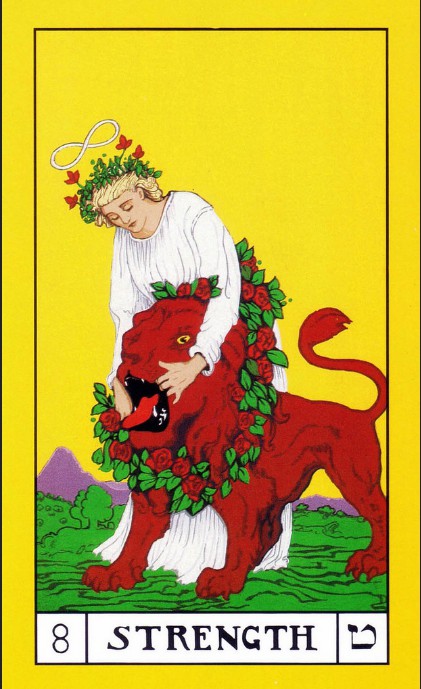 |
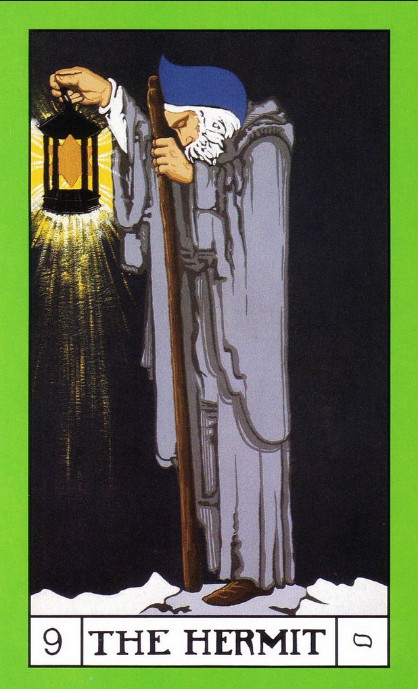 |
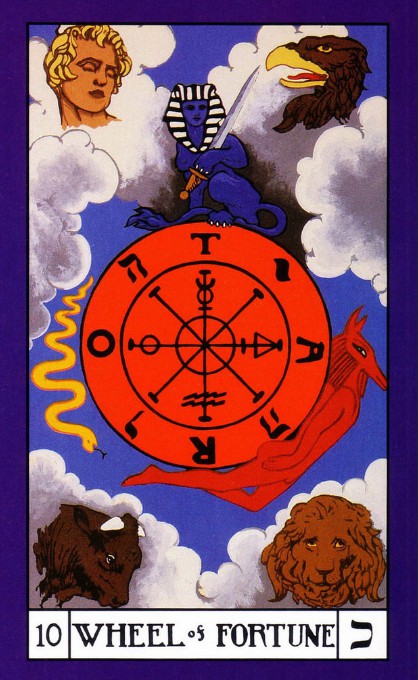 |
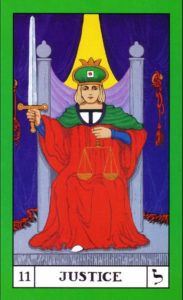 |
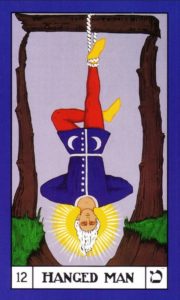 |
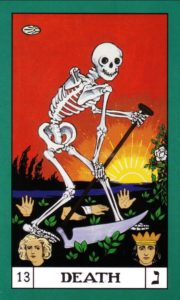 |
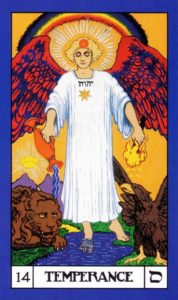 |
The first transition in the second sequence is between The Fool and Strength.
Transition 8 : The Fool – Strength
8.1 Summary of this Transition
The Strength card represents Potential within the second sequence of the journey, and our potential range of emotions and personality.
This transition is that of initial re-engagement between the Initiate on The Path and their internal world of emotion – there is a new awareness of separation from the emotions and personality that have captivated them up until this point; an opportunity to start again. The transition between these two cards is a move from the first revelation in The Fool to some recognition in Strength of what they need to resolve, tasks ahead and what may be required to proceed with the journey.
8.2 The Strength Tarot Card Symbolism
This card exhibits a range of emotions from the powerful animal instincts symbolised by the lion to the much subtler, calmer emotions and qualities represented by the female.
There is a harmony between the two, with our animal instincts being tamed by the higher aspect of ourselves. Again the infinity symbol is present above the person’s head showing the infinite potential of The Path of Light and Sound but they still do not perceive or recognise it fully.
8.3 Relevance to the Initiate
As well as providing an opportunity to change the way we interact with the external world, Initiation provides an opportunity to change how we feel and how we relate to our emotions, how we see ourselves as a person, how we interact with others on the level of personality.
Initiation can also be the start of an emotional journey, in that it can again give insight that has not been possible before. The Initiate can see the potential within themselves of how they are as a person, how they feel about the world, about their interaction with others and about their own self, and also begin to see what may need to be changed. It is important to take time to take stock of what has happened and any realisations that may occur, being kind to ourselves as we adjust to our new viewpoint on our emotional and personal life.
8.4 Potential challenges for the Initiate
The transition is all about engagement; does one engage with The Path or remain at the starting point on an emotional and personal level? There can be powerful feelings at the start of our spiritual journey, possibly feeling overwhelmed or feeling that our expectations have not been met in the way we wanted.
The Path is very simple, almost too simple for us at times when what we are used to or expect is complexity. It can feel like diving into deep water and feeling out of one’s depth. New emotional energy flows into the Initiate’s life. You may feel new freedom and yet have fear of the unknown.
8.5 Guidance for completing this Transition
Adepts and other Initiates can again be a great source of help and advice on what is a rather subtle but very profound change in the emotional life of the new Initiate. Talk to others about your inner feelings rather than keep them bottled-up.
It is important to be kind to oneself, not trying to be either completely understanding or denying feelings but learning through this sequence of stages just to let them be.
It is again very important to apply oneself to one’s meditation and also to acknowledge and yet be detached from the feelings that may arise, to relax and remove expectation from meditation and just allow the process to happen rather than looking to feel any particular way in or after meditation. By allowing emotional space we can actually let the Light and Sound work their magic!
Transition 9 : Strength – The Hermit
9.1 Summary of this Transition
The Hermit represents Rigidity in the second emotional or personal sequence.
The transition is coming to recognition of what qualities our emotional and personal nature is made up of, and accepting ourselves. Before this acceptance happens, there may be a period of denial or reaction to this process. This transition is that of the defining point of emotional commitment to let The Path flow into and define our personal selves.
Now the Initiate is in contact with Light and Sound, now that meditation on these subtle energies is no longer only an idea, they have to form a bridge between their Outer and Inner Path. When ready, the Initiate needs to move beyond discovering personality traits and emotional potential and commit to transforming them.
9.2 The Hermit Tarot Card Symbolism
This is an isolated figure and can be the result of not letting our emotions flow and be as they are, an attempt to hang on to the old way we saw our personality.
The monk that sits in the cave denying the world and his emotions is akin to The Hermit. There is no colour in the card representing the lack of colour (emotional expression) in the life of The Hermit. He looks down as if denying the world around him.
He does have a guiding light and a stick that spans almost the length of his body, potentially connecting heaven and earth, his higher and lower nature. The way forward is to look into the Light and fully accept what is there within our emotional and personal nature without denial. This is a focal point of rigidity because the flow of the process again stops in order to be hopefully acknowledged and accepted and not denied or blocked.
9.3 Relevance to the Initiate
Before Initiation, the Initiate may have had a sense of their self that was based entirely on how they felt about others and their own self. It may have seemed to them that their personality and their emotions were who they were. After Initiation there may be a desire to withdraw into ourselves to try to re-establish who we feel we are.
It is possible to follow The Path on a spiritual level in inner meditation and to follow it in the external world with teaching and other weekly spiritual activities. But if we are to internalise and really become The Path we need to build a connection between our outer world of activity and inner world of meditation & this involves two processes transforming both our personality and our mind. To avoid doing this with our personality is to become like The Hermit, practising a spiritual life while trying to maintain a rigid control over ourselves and actually denying the flow of that life.
9.4 Potential challenges for the Initiate
This transition is all about openness and trust – will the Initiate try to stay the same person they were? Will they hold on to the feelings and qualities that defined them? Will they change how they act in the world but not change as a person? Or will they allow the power of their meditation and interaction with others on The Path to transform those qualities and personality into one which is more about openness, integrity and serving others?
The Initiate may feel overwhelmed by new insights into their self as a person. There may be growing awareness of who we are, aspects that we like and dislike, aspects we show to others almost as a mask and aspects we hide away like a shadow. Meditation can throw light into all the corners of our personality and we may not like all of what we see.
The Path provides great opportunities to meet a very wide range of people, to be challenged by the teachings to look more closely at ourselves than we have done before – it may seem overwhelming and we feel the desire to withdraw and hide away like The Hermit, either by deciding to physically remove ourselves from the world or by deciding to not share our thoughts and feelings. This transition point shows the rigidity and lack of progress that can result from that kind of decision.
In contrast we may get too caught up in too much emotion and trying to improve our personality, focusing too much on this level.
Also, there can sometimes be a fear of feelings, a fear of taking risks, a fear of having others honestly see as us we truly are – this fear can feel worse than the feelings, worse than the risk, worse than being honest.
9.5 Guidance for completing this Transition
To try to resist the flow of life and the transforming power of The Path is like trying to hold back a river; the pressure builds up and can eventually overflow or erupt. It is better to not deny or resist feelings that we have, but to see them for what they are and accept their reality. Feelings are neither “right” nor “wrong”, they are just feelings & judging or suppressing them is actually putting more energy into them and can create a rejection or backlog.
Remember that feelings are not intention and not behaviour but are like reactions to the flow between intention and behaviour. Rejecting, suppressing or denying feelings can lead to them being subconsciously released by acting them out in behaviour without us knowing, leading to confrontational or violent interactions with others that we do not intend and that surprise us.
For example, if anger is “saved-up” like a book of emotional saving stamps then a minor irritation (“the straw that broke the camel’s back”) may trigger off a release of pent-up rage; the trigger seems like a trivial incident but finally completes and “cashes-in” the whole large book of emotional anger stamps!
As you get to know your personality better, remember that it is just a vehicle for your true self – a vehicle that can be serviced, upgraded and transformed. How we are today is not how we have to be tomorrow. We can be detached from our current limitations and apply ourselves to breaking out of them rather than holding on to them in the rigid way of The Hermit.
Recognise that fear is coming up against the edge of our comfort zone, our limitations and that if we truly want to grow and break through limitation then we need to be brave enough to try. It takes courage to feel the fear and still act whereas finding it easy to act does not require courage.
Transition 10 : The Hermit – Wheel of Fortune
10.1 Summary of this Transition
The Wheel of Fortune represents Yielding, the next stage which is acceptance of our emotions and letting them flow. We can allow them to be like the movement of the unimpeded wheel.
This transition is therefore about recognition that denial of our emotions is not helpful and in order to be free of emotional ties we must first accept them and let them flow. Obstructing the flow causes more turbulence than learning to manage and direct it.
Perhaps the aim is to be at the centre of the wheel, not denying change but being detached from the outcome.
10.2 Wheel of Fortune Tarot Card Symbolism
The wheel is always moving/changing, similar to our emotional nature. In that way they are not suppressed but accepted for what they are.
The skill in making this transition is to be able to let our feelings flow, learning to recognise and perhaps name them, to express them at the appropriate time and yet not to become lost in them or carried away by them. Any other attempt to ‘control’ emotion may lead to either suppression or over-involvement that will have other negative turbulent effects in our lives, either at that time or later when the suppressed energy is released.
10.3 Relevance to the Initiate
All of us have emotions and a personality. Whether they are seen as a way of connecting to people, environments or situations or seen as a backlog of unexpressed mental energy, they are a reality and cannot and should not be denied. We are all very likely to react emotionally to any event in our lives, and to react in ways that have been learnt or ‘conditioned’, and thus often out of conscious awareness. To be able to change our subconscious reaction into a conscious response, and to learn about ourselves in the process, we need to be able to work with our emotions. The best way to do this is to see them for what they are, accept them and then (and only then) from that point of acceptance start to express and release feelings more directly and more immediately.
We come to The Path of Light and Sound with a particular personality which may have many great strengths and resources, and which may also have many weaknesses and limitations. The influx of spiritual energy and the willingness to learn what is needed to follow The Path, provide great opportunities to learn about and then release ourselves from, at least some of the limitations and attachments of our current personality.
We may be able to relate well to particular kinds of people and thus be able to learn from them and teach them about The Path. However, there may be a wider range of people from whom we could learn and who want to learn about The Path from us. Learning to break free from our set ways of interacting with others can allow us to interact well with more people from more walks of life and thus learn from everyone and be a better ambassador for The Path. The wise person can learn from anyone, the fool learns from no-one.
10.4 Potential challenges for the Initiate
There may be particular aspects of our personality or personalities of others that stop us from being able to relate to them, to learn from them, and to teach them. We can be like a dirty mirror where the limitations of personality obscure the Light that can be reflected from inside & we fail to see and to reflect that Light. We can be like jagged spiky objects; we bump and grind against other people and subconsciously keep them at a distance or push them away. There may be particular individuals on The Path who we cannot get on with at all because their personality or their way of expression conflicts with ours. Or we simply might just not be aware at all of the effect that we have on others.
The largest difficulty may be being too attached to our personality, thinking what we are is a particular set of behaviour, feelings and thoughts, wanting to stay attached and thus rigid in that personality and not use The Path to find our true Self.
10.5 Guidance for completing this Transition
Very young children demonstrate the power and immediacy of emotion – anger explodes out and yet is over and forgotten in a moment, sadness is a sudden rush of tears that is soon forgotten, fear is a sudden reaction that can also be soon overcome. As adults we can learn to be like them by learning to express our feelings directly and immediately, but not through behaviour as children often do, but in words – say how we feel without blaming others and the feeling is released. This requires an ability to be honest and open with ourselves and with others, if we can do it then we will live much simpler and effective lives without the leftover ‘baggage’ or turbulence of resentment or other stored-up feelings.
Young children can indeed be very open and honest about their feelings and ask when they do not understand. As adults we can learn to be like them, to risk sharing what is going on inside us and be open to learning by asking for comment and feedback from others.
If there is a particular individual or group of people on The Path who you cannot get along with, look to see specifically what it is in them that you dislike and then look to see what it is in yourself that reacts so strongly against that aspect of them. Often what we cannot accept in other people is what we cannot accept in ourselves.
Learn to polish our personality to be a clean mirror by first of all learning to see where and what that dirt is and why we hold on to it. Choose to show the aspects of personality like compassion that help reflect your insight and your learning. Learn where we detect resistance against other people to find out how to be able to modify any aspect of our personality that keeps people away.
Remember to always look beyond personality to see the potential of spirituality in everyone.
Remember also that any fulfilment that can be found in emotion or personality is short-lived and a poor comparison to what can be found in meditation on the Light and Sound and finding our true Self.
Transition 11 : Wheel of Fortune – Justice
11.1 Summary of this Transition
Justice represents Austerity in the second Tarot Card sequence.
The Justice Card implies action resulting from the awareness gained from the Wheel of Fortune.
This transition is that of applying wisdom and insight into the flow of emotion and personality; to decide how we consciously want to feel and be as a person. The Initiate has learnt from the expression and flow of emotion, from letting their personality show, and is now ready and able to apply themselves to make conscious choices of how to be and how to live. As well as being detached and aware, application and effort are required to move forward and to do so in a balanced and healthy way.
11.2 The Justice Tarot Card Symbolism
A judgement is being made over a situation and that judgement is informed through experience. The figure in the card has authority and is seen balancing outcomes/ events in the left hand and passing judgement (symbolically by the sword) in the right hand. This transition therefore describes the changes we can make to ourselves once we accept our emotions and personality as a valid part of our life experience. With this acceptance comes the opportunity of getting some insight into their nature which is not possible through denial, suppression or avoidance. Once we have this insight we can then stand back and perhaps change our attitude towards them or change the way we react to situations and become more able to make conscious informed decisions and respond to them instead.
11.3 Relevance to the Initiate
The decisions that we made early on in life about how to act, what to feel, who to be – these may have been very useful at the time in order to survive, to feel loved, to conform, to perform as required by others. Yet these decisions may no longer be appropriate in adult life nor as an Initiate on The Spiritual Path; we do not need to hold onto these decisions from the past.
Initiation gives an opportunity to break free from these outdated patterns of acting, feelings and being. In order to be able to carry the state of Enlightenment and to teach others we may need to change how we feel about ourselves, about others, about the world, about life. Justice is the process by which we can make the transformation of our feelings and personality.
11.4 Potential challenges for the Initiate
It can be difficult to let go of and change our feelings and personality when they may have been who we thought we were, when they may have served us well for many years.
An Initiate may try to become their idealised version of a person, without really getting to know themselves & who they currently are as a person i.e. trying to do this stage without or before completing the previous stage of observing and learning about their emotions and personality.
They may try to be ultra-positive, to create a mask that denies their negative or shadow side when they actually need to integrate the two sides into a whole in the next stage/card. We need to feel the flow of our life and re-direct it rather than dam it up and try to suddenly force it in new directions.
An Initiate may try to change too much too soon, and to be too severe, to be too austere without insight because that seems an easy way to be. This takes the Initiate back to rigidity of The Hermit rather than on to the unification of The Hanged Man.
We may realise that we are very attached to our personality, deny that it does not need to change or be too scared to experiment with new ways of being.
11.5 Guidance for completing this Transition
Use the insight you have learnt in the previous stage to really know what you are like, to know your motivations and desires. See the underling currents in your life before trying to change the direction of its flow.
Make sure that you have the support of Adepts and other Initiates as you try to make changes. Tell others what you are considering/trying to do so that they are not completely surprised by a new you, check out their thoughts and potential reactions.
Maintain your basis of self in meditation in order to give yourself a clear viewpoint of what is happening and a point of reference that will remain constant.
Put yourself into new situations and interact with a wider variety of people, try doing activities you have not done before, push your boundaries and sense of who are while still holding on to the principles of The Path.
Remember to again always look beyond personality to see the potential of spirituality in everyone.
Continue to remember that any fulfilment that can be found in new emotion or personality is short-lived and a poor comparison to what can be found in Meditation on the Light and Sound and finding our true Self.
Transition 12 : Justice – The Hanged Man
12.1 Summary of this Transition
The Hanged Man represents Humility in the second Tarot Card sequence.
This transition shows the humility required to move towards unification of the flow and management of emotion and personality; these are recognised, accepted and redirected (i.e. sacrificed) to a higher cause. We are able to see and give up our attachment to our feelings and personality and thus escape at least some of their limitations.
This transition takes place by balancing the processes attained through the previous two stages & there is an element of sacrifice here. We are surrendering our attachment to our emotions and our personality. In doing so our life can be turned upside down but not in a negative way. Freeing ourselves of the turmoil our emotions and personality can give us a feeling of inner emotional peace we may have not had until then. So what may appear as a sacrifice from the outside is really a freedom.
12.2 The Hanged Man Tarot Card Symbolism
Although the person is suspended from the tree, his expression is not sullen and there is illumination around their head suggesting insight and awareness.
12.3 Relevance to the Initiate
As indicated in previous sections, emotions and personality can get in the way of spiritual development by trapping us in a reactive, conditioned way of feeling and being without conscious awareness & we can still think of ourselves as being our personality.
That personality will more and more be surrendered to expressing the spirituality that lies inside as we begin to recognise ourselves as spiritual beings and not mere personality. That personality will become more neutral in order to engage with and teach as wide a variety of others’ personalities as possible; actions usually speak louder than words.
Our personality will still remain individual and still ‘ours’ and it will become a vehicle for, and reflection of, what lies inside; able to “bring down” and express inner illumination to the world of feeling and personality as is shown by The Hanged Man.
12.4 Potential challenges for the Initiate
The main difficulty in this transition is to balance the flow of emotion and personality with an awareness and possible conscious re-direction of what we feel and who we believe ourselves to be as a person. We do not want to just completely follow our desires or to spend too long dwelling on the strengths and weaknesses of our personality. Nor do we want to become too narrow in what we choose to do or how we come across to others.
We do not want to be falsely positive or to dwell in negativity. What we want is integration and alignment of what we want in this world and our relationships with others with what is most helpful for the spiritual development of ourselves and of others. Making this integration and getting this balance may not always be easy.
12.5 Guidance for completing this Transition
The integration of positive and negative feelings and aspects of personality can be achieved by first getting to know them and then making conscious choices; do not rush to change what is not known. Any change from old, outdated, subconscious habits of being and expression may take some time to be replaced by consciously repeated positive habits.
Remember to stay focussed on the overall goal of being happy in ourselves as well as being able to demonstrate and express wisdom and inner realisation. We need to be our genuine selves to be able to sit and meditate and also to come across naturally to others. We also need to be able to leave behind what we have outgrown (like the old skin left behind by a snake as it grows).
Begin to trust that you are not losing your ‘self’ but learning to find your ‘Self’ in meditation and with a much more secure basis! Use a growing sense of a stiller inner Self in meditation as the basis of what you are. Be detached to see what is present and apply yourself to what you see needs to be changed.
Transition 13 : The Hanged Man – Death
13.1 Summary of this Transition
The Death card represents Unification in the second sequence.
This transition is one of unifying emotion, unifying our personality by dying to it; they no longer hold importance or control over us. We can leave them as they are without fearing what they are or needing to maintain or direct them.
13.2 The Death Tarot Card Symbolism
This is the card that is feared in most readings if it is taken at face value.
Subconsciously, most people fear death in some way as it means change and change is something that is often resisted, especially if it means a re-evaluation in how we see ourselves. All people in the card, all of status based on role or personality are given up, whether they are king or pauper. This change involves the unification of opposites or conflicts.
In this context Death means dying to our emotions and personality. It is the outcome of the surrender achieved in The Hanged Man and is a transition to a new more contented self. Our old habits that we have formed in our earlier years die away as they lose their grip. This can be likened to becoming child-like again as symbolised in the card. The child does not fear change as the others do. However, we have the experience of life which the child has not gained and so we are the adult, free of some of life’s emotional tangles we have got caught up in along the way.
13.3 Relevance to the Initiate
Our personality has been surrendered to expressing the spirituality that lies inside. It has become neutral in that we do not limit what lies inside nor limit who we can relate to. We have let go of our sense of ‘self’ as personality; it has ‘died’ because we have transcended it to find a higher, deeper sense of self in meditation.
13.4 Potential challenges for the Initiate
A balanced personality with free flow of emotions can be very powerful and thus very seductive. Unifying positive and negative feelings and aspects of our personality can give a release of emotional energy that can seem like a great freedom and a contrast to how we have been before.
We are no longer trapped into a reactive way of being but can now respond consciously, naturally and spontaneously. We may not wish to let go of this sense of free, expressive self. We may wish to establish this as our new sense of self, and yet it is still a sense of self, however powerful, based on and in personality. It will change, it will not last.
13.5 Guidance for completing this Transition
Remember that your overall goal is to be free of all limitations of matter, personality and mind. Enjoy, but do not be satisfied with, the short-term, limited freedoms found by escaping from old ways of being a person in the world into new ways of being a person in the world.
Transition 14 : Death – Temperance
14.1 Summary of this Transition
Temperance represents Achievement in the second sequence.
There is a natural flow of energy from intention to behaviour; there is not build-up or backlog of emotional energy. Our personality, while still individual, has become a channel for higher energies. This final transition is therefore again about re-engagement with the world of emotion and personality and doing so in way that no longer creates and maintains a limited sense of self other than that of as a vehicle of higher power.
14.2 Temperance Tarot Card Symbolism
Temperance is essentially a bridging card. The figure shown bridges the gap between land and water.
The Angel brings energy down from higher to lower in a smooth effortless way. Since becoming The Hanged Man and sacrificing our personality in Death to the process of emotional maturity, passing through a pendulum of emotions, the result is a more balanced individual. There is softness about the Temperance Card in which everything is in harmony and things flow. This is a result of the work done in the previous stages.
14.3 Relevance to the Initiate
The Initiate has resolved old emotional conflicts. They have changed subconscious reactive ways of feeling, being and interacting with others into conscious management. They have integrated the old and the new into a humble sense of self and then given up even that sense of self. The task is now to not just become completely neutral and disengaged but to become an actual channel to higher energy and wisdom rather than an obstruction or filter.
14.4 Potential challenges for the Initiate
Harmonising and becoming free of emotion and personality is a worthwhile achievement, and yet it can also be put to great use in letting insight and wisdom flow through us.
Rather than remain completely detached, the aim is to re-engage with the world but the danger remains of becoming trapped again into the swirl of emotion or a sense of being a personality.
14.5 Guidance for completing this Transition
Remember that we experience and learn more if we let insight and wisdom flow through us rather than not engage at all or try to hold on to what we have experienced or learnt. No matter how big the container, it will still quickly fill up if it tries to hold onto the flow of energy or life.
Making this transition is again about being able to stay in or close to a point of balance. Remember that your spiritual path is all about finding that which is still and unchanging.
Remember that emotions that are often stirred into high energy states will take a long time to settle. Pay attention to and become aware of the way that our emotions continually move even when presented with little or no external change.
Remember the pain that inevitably goes with pleasure in any interaction with the external world and do not be seduced by empty promises of fulfilment in only external experience. Do not fall into the trap of a small emotional identity or personality that needs to be reinforced by conflict.
Remember again that life is a process of interaction, of flowing with change to achieve what we want rather than giving in completely to external pressures and thus giving up our power in the world. Do not disengage from the world of emotion and personality and its potential for teaching us, for expressing our inner realisations and making them concrete in our lives.
Find Temperance in all that we do and become.
This completes the second sequence of Tarot Cards. Interaction with the world of emotion and personality should now flow easily in balance and leave the Initiate freer to focus on their inner path and also to start on balancing their mind.
The “Mental” Sequence
This third sequence of Tarot Cards is about our identity and attachments or mental world; the seven cards are shown below.
| Potential | Rigidity | Yielding | Austerity | Humility | Unification | Achievement |
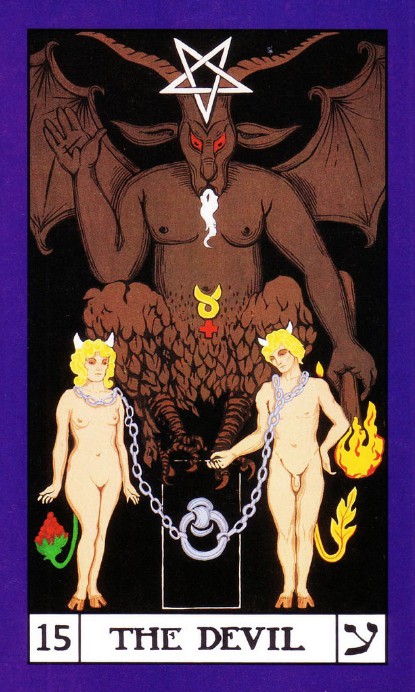 |
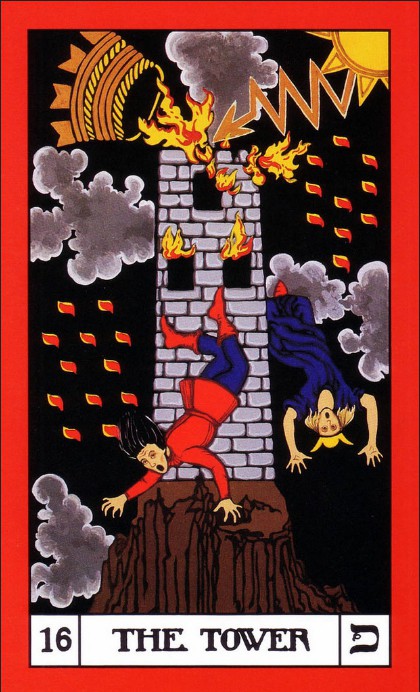 |
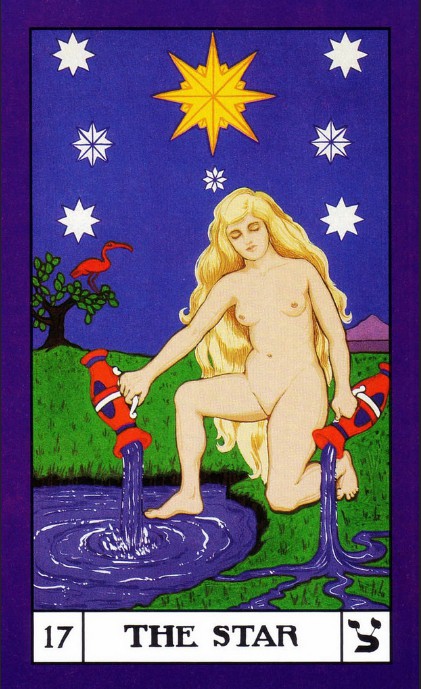 |
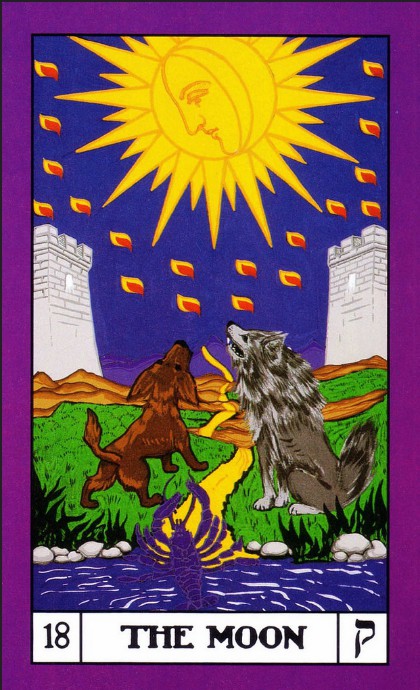 |
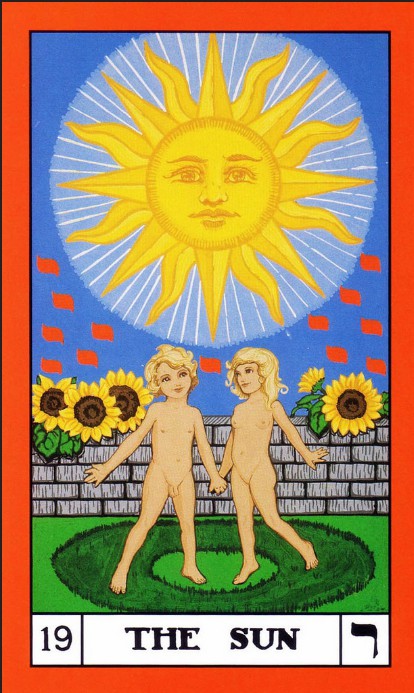 |
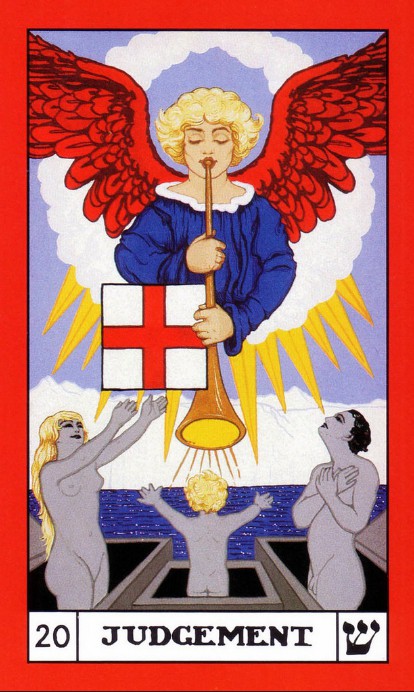 |
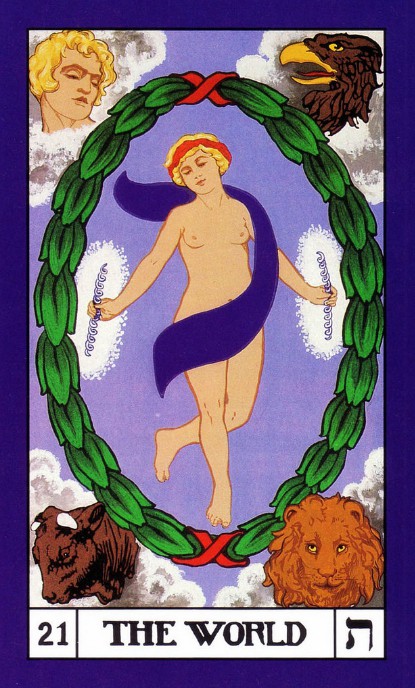 |
Transition 15 : The Fool – The Devil
15.1 Summary of this Transition
The first transition in the third sequence is between The Fool and The Devil.
The Devil represents Potential in the “mental” and final sequence the Major Arcana.
This transition is that of initial re-engagement between the Initiate on The Path and their internal mental world of thought and identity. There is again a new awareness of separation from the thoughts and identity that have captivated the Initiate up until this point; an opportunity to start again. The transition between these two cards is a move from the first revelation in The Fool to some recognition in The Devil of what they need to resolve, the tasks ahead and what may be required of them to proceed with the journey.
15.2 The Devil Tarot Card Symbolism
This potential in this card is usually tied up in attachment, so the card is often considered as representing the attachments that we have in our thoughts, beliefs and attitudes. This potential or attachment makes up our sense of self i.e. what we believe ourselves to be, either consciously or subconsciously.
The Devil has a downward-pointing pentagram above its head compared to the infinity sign above the Magician and Strength cards in the same column, indicating how the mind dominates our sense of self. The background is dark which may indicate the darkness of the mind which does not perceive the Light of the higher self. The burning torch, the only light in the card, also points downwards in contrast to The Magician’s upward-pointing wand.
Spelt in reverse, “Devil” forms the word lived. Lived spelt backwards can therefore imply living in the past, not simply ‘being’ in our natural state i.e. Enlightenment. The mind simply cannot just be.
The figures in the card are chained and therefore imprisoned in their present sense of identity but the chains surrounding them can be lifted off, showing that the ties that bind us are illusory. In clinging to our false sense of individuality we are in bondage. The love of the higher self of Light and Sound can release us from our ‘chains’.
15.3 Relevance to the Initiate
The process of walking The Path of Light and Sound is partly one of letting go of our small sense of self and the attachments that hold us in that illusion. The first stage in this process is to see what attachments we have, to see what sense of self we have.
Initiation can give insight into our selves, how we are and how we might be. This stage is again about taking stock of what has happened, seeing what thoughts and attitudes we have to work with.
It may have been possible to have done some of the previous two sequences without the separation from our thoughts and sense of self that Initiation can give; this sequence is at least very difficult to do without Initiation because a person is trying to look at their mind from their mind, trying to observe and change their thoughts from within their thoughts.
It can be like trying to find a way out of a jungle while being stuck inside it with no vantage point. Initiation and meditation can lift us out of the jungle onto a mountain top to see how and where we are in our mental jungle, as well as where we want to go and how to get there.
15.4 Potential challenges for the Initiate
The transition is once again about engagement. Does one engage with The Path or remain at the starting point on a thinking level? It can feel like being stuck in a deep, dark jungle. Thoughts may get in the way of perceiving the Light and Sound; we may only see the blackness of thought. Doubts may arise as to whether The Path is for you or not.
The mind will try to grasp and understand meditation but since the Light and Sound come from beyond the mind, this will not be possible. In particular it may react to anything seen in meditation, creating lots of thoughts that will immediately black-out what has been seen.
15.5 Guidance for completing this Transition
Initiation can lead to great joy and yet also uncertainty; look for the help of Adepts and other Initiates to advise you through your early days an Initiate. Continue the practices that were established before Initiation i.e. meditating regularly, reading spiritual books to aid motivation and attending meetings. Do not try to change too much at once.
Remain open in meditation even though you may not always see Light or hear Sound. They are always there, so it is the mind that is putting up blocks to connecting with them. The blocks are thoughts & these may be expectations that are too high, or worries about being able to see Light or hear Sound, or too much need to see Light or hear Sound, or a desire to ‘do’ something when meditating.
It may be useful to think of meditation as the Light and Sound meditating on you rather than the other way round & this may make it easier to sit and be in meditation rather than trying to do something. Apply yourself to meditation and be detached from expectations, allow the process to happen.
The mind may try to grasp and control meditation, but since the Light and Sound come from beyond the mind, this will not be possible. The mind will never succeed but it may never stop trying! Remember that the mind cannot understand Light and Sound so develop insight into meditating by practising and doing meditation rather than thinking or worrying about it.
In particular it may react to anything seen in meditation, immediately creating thoughts that will black-out what has been seen.
The new viewpoint gained with Initiation may reveal aspects of our selves such as beliefs, attitudes, prejudices that we find hard to accept. Our sense of self may now seem very over-bearing or very limiting or very fragile & we may start to recognise that what was all that we knew is now only part of ourselves.
Transition 16 : The Devil – The Tower
16.1 Summary of this Transition
The Tower card represents rigidity in the third sequence.
This transition is that of coming to terms with the recognition that we have a greater part to ourselves that we have not known and are just starting to know. It is also coming to terms with the recognition that we have been attached, limited and imprisoned within a small sense of self and that we have not really had the freedom and self-control that we thought we had! Again this is a point of commitment to go beyond our small sense of self and follow The Path and free ourselves from those attachments that seemed so essential and valuable to us before. When ready, the Initiate needs to move beyond discovering attitudes, beliefs and mental potential and commit to transforming them.
16.2 The Tower Tarot Card Symbolism
This card is symbolic of using the mind to break things down in order to try to understand and control them, but only succeeds in destroying them!
The Tower may represent the nature and fragility of the way in which the mind builds its sense of self i.e. with limits that imprison who we really are. The crown that we and others may have given ourselves as apparent ‘ruler’ of our lives can be suddenly cast aside by the new viewpoint and insight provide by Initiation. The Tower does not stand on stable foundations showing that our beliefs are built on isolating ways of existence.
Our sense of self can often be built on how we are different and separate from others rather than what we share or have in common with others.
The reaction to this sudden sense that we are more than we thought we were can become a traumatic experience. The mind cannot understand or control this new aspect of ourselves found in meditation no matter how hard it tries. The bolt of lightning, the light in this card, is the liberating force and represents our higher nature entering and starting to break down our engrained ways of thinking and acting.
16.3 Relevance to the Initiate
We may try to withdraw into our old sense of self after Initiation, but The Tower shows that the change brought about by Initiation is irreversible and our awareness has been expanded beyond the walls or limits of our previous self.
What is important is how we react or respond to this change. Do we get stuck in our rigidity and return to the world of attachment (The Devil) or do we move on to the flow of The Star?
Do we build a connection between inner world of meditation and our outer world of activity by transforming our personality and our mind?
16.4 Potential challenges for the Initiate
This transition is all about allowing change or fighting against it. Trying to maintain a rigid control over ourselves and maintenance of our old ways of thinking and our old sense of who we think we are will be like becoming The Tower. We will continually be challenged by the input of spiritual energy in meditation.
The Initiate may feel overwhelmed by their attachments that they now more clearly see and may want to walk away from The Path and any imbalances, qualities and conflicts they now see need to be resolved in their thinking and mind.
The new viewpoint given by Initiation may allow the person to become more aware of their self, their attitudes and beliefs; it may be hard to accept what we start to discover.
This transition is again about openness and trust.
Will the Initiate try to stay the same person they were?
Will they hold on to the attitudes and beliefs that defined them?
Will they change how they act in the world but not change their thinking?
Or will they allow the power of their meditation and interaction with others on The Path to transform those attitudes and beliefs into ones which are more about openness, integrity and serving others?
In contrast we may get too caught up in too much thinking and trying to improve our mind, focussing too much on this level.
We may also become caught up in the trauma of change and not move towards a new sense of self. Years can be spent struggling to let go and move from the challenge of The Tower and the realisation of our attachments and subsequently experience the peace of The Star in the next transition.
16.5 Guidance for completing this Transition
Once again, Adepts and other Initiates can be a great source of help and can advise on how to manage your reactions to the subtle but very profound change in your life. Continue to talk to others about how you are; share your inner thoughts with those that may have had similar experiences so the process does not seem so challenging.
Continue regular meditation, reading spiritual books, attending meetings. Accept that this is a huge change in your life and take time to come to terms with it. Do not try to change too much at once. Remember what brought you to The Path, what motivated you, and where you want it to lead.
If we discover or perceive attachments and thinking that we do not like, then remember that these are not the true self we can discover in meditation and that they can be accepted & modified along the way. As you get to know your mind better, remember that it is just a vehicle for your true self. It is a vehicle that can be serviced, upgraded and transformed; how we are today is not how we have to be tomorrow.
Use meditation to find an escape from thinking and attachment, to find a constancy that can never be found in ever-changing thoughts. Enjoy the freedom that can be found inside!
Use realisations gained in meditation to free yourself from and change the way that you think and the attitudes and beliefs that you have held.
Transition 17 : The Tower – The Star
17.1 Summary of this Transition
The Star represents yielding in the third sequence.
This transition is about moving from the trauma of grappling with and trying to hang on to our present thoughts, attitudes and identity in The Tower, to letting them flow and just be there with acceptance and without struggle in The Star.
17.2 The Star Tarot Card Symbolism
This card is about letting our thoughts and beliefs flow similar to the other two cards in the same column (The Empress and the Wheel of Fortune). Letting thoughts flow and surface is a different process to reacting and struggling against them as illustrated in The Tower. Our sense of who we can also thus become more fluid, open to learning and less rigid and fragile.
Above the figure is the largest star which may represent the Monad (or higher mind) and seven smaller stars which may represent charkas; there is now lots of light in this card. It is the flow of energy from our higher self that can provide us with a means of remaining detached from just getting caught up in the flow and movement of our thoughts and attitudes. The arriving bolt of lightning in The Tower has now established a dominant presence in The Star.
The water from the two pitchers flows independently in this card compared to the Temperance Card, where the water flows between each pitcher in a smooth way. In The Star the water is dissipated and lost into both the pool of emotions and also onto the external physical world of the land. But the figure does not worry; they just let the energy flow. In The Star the person is below the light.
17.3 Relevance to the Initiate
In meditation it can be easy to be distracted by and caught up in thinking. When we realise we are thinking rather than meditating we can react against the realisation and either try to understand the thoughts or force them out of our minds, or perhaps criticise ourselves or even think that we just cannot meditate; yet all of these are more thinking!
Rather than react against our thoughts, it is better to let them go. By letting thoughts and their attachments just ‘be’, we are then in a better position to find distance from them, and also see them for what they are. By practising acceptance, we are thus more readily able to resolve our beliefs and attitudes towards ourselves and others. These beliefs and attitudes can often be very ingrained as hinted at by the aphorism below:
“We are imprisoned by subtlety not obviousness”
The attachments are like the chains around the necks of the people in The Devil card who are so close to them they are unaware that they can be free of their bondage. Attachments can be broken by first of all using detachment to accept that they exist before applying ourselves to release ourselves from them.
To be able to change our subconscious mental reaction into a conscious response, and to learn about ourselves in the process, we need to be able to work with our thinking. The best way to do this is to see them for what they are, accept them and then (and only then) from that acceptance start to express and re-direct our thinking. The Path provides great opportunities to learn about, and then release ourselves from, at least some of the limitations and attachments of our current beliefs and attitudes.
Learning to break free from our set ways of seeing and interpreting events, situations and other people can allow us to choose how we respond rather than react in old habitual ways.
17.4 Potential challenges for the Initiate
This transition is once again about giving in to the process rather than trying to understand or control all of it. Hanging on to an old sense of who we are will be like carrying around a bag full of the broken blocks of The Tower and will weigh us down and limit our growth.
Just like feelings, but perhaps in a more subtle way, thoughts and attitudes do not go away when they are suppressed. Practising austerity through many hours of forced, rigid meditation which is all about trying not to think (and thus just thinking) will not produce growth. Failure to appreciate this can hinder both meditation and the way we conduct ourselves on The Path. Having unresolved mental conflicts can also be very damaging to oneself and to others as we may subconsciously act out what is in our minds.
Realisations from within meditation may require us to change our view of life, of others and of ourselves and can be either very challenging or actually just not happen if we are not open to change. We may have prejudices that stop us seeing and accepting the reality of life.
The greatest difficulty may be being too attached to our sense of who we are, wanting to stay attached and thus rigid in our limitations and not use The Path to find our true Self.
There can, however, also be a danger of yielding too much, letting go of all discipline and self-control and happily sitting thinking in meditation all the time!
17.5 Guidance for completing this Transition
Once again it is very important to cultivate an attitude of ‘beginner’s mind’, being able to look at any new realisation or situation completely fresh and new, without prejudice, without desire or expectation.
This is yielding to what is presented, letting ideas and beliefs imprint themselves on us so that we can see into and through them, so that we can respond with insight rather than react with defensiveness but without losing our principles and self-discipline. Giving up on the needs of our small, individual selves can again set us free to expand into a greater sense of self and greater awareness.
Observe your reactions to ideas and beliefs and look for insight into your attachments. If we have a strong reaction then we are being provided with a great opportunity to learn about ourselves. Look to see what it is in us that leads to the reaction.
Trust is again very important in yielding. Trusting in the Light and Sound, trusting in Adepts and Initiates, trusting in your own individual process, and trusting in The Path. Obtain feedback to check out our attitudes and understanding and be open to change.
Learn to polish our mind to be a clean mirror by seeing where our thinking blocks the reflection of insight and understanding; let us discover a new sense of self that will allow us to be more free.
Remember to always look beyond mind to see the potential of spirituality in everyone.
Remember that any fulfilment that can be found in thinking and understanding is short-lived and a poor comparison to what can be found in meditation. Let us let go of the old sense of who we are and find our true Self.
Transition 18 : The Star – The Moon
18.1 Summary of this Transition
The Moon represents austerity in the third sequence.
This transition is about escaping from lower mind and using the insight we have gained from the flow of thoughts and ideas in The Star to sort out what is helping and what is hindering us in lower mind. To see, accept and perhaps transform aspects of our psyche or mind and not be dragged down into it by the attachments that still exist there.
18.2 The Moon Tarot Card Symbolism
It is concerned with working through aspects of our psyche and our lower mind. This is a process of inner reflection to discover, accept and perhaps transform our beliefs and attitudes and our sense of who we are as a person. It can be facing up to our concept of who we are based on past decisions, feelings and behaviour and seeing them for the illusions that they are. It can be facing up to the ‘shadow’, ‘dark’ or ‘destructive’ sides that we normally keep hidden from the view of others or even from ourselves.
The star that dominates over the figure in The Star is still present and dominating in The Moon but the person has moved up into the star, they are making the transition from lower to higher mind although the process appears as one of concentrated effort and the aspects of lower mind call to the person focused in higher mind.
The other two cards in the same column (Justice and The Emperor) enabled transitions to be made in our interactions with the world and in our feelings; both based partly on the viewpoint from our mind. Since in the third sequence we are challenging our mind itself, we cannot really use just the same process.
Just as water cannot wet itself and fire cannot burn itself so the mind is limited in how it can transform itself and certainly cannot go beyond itself!
18.3 Relevance to the Initiate
A limited sense of who we are as a person, or of what we are capable of as an Initiate, can hold us back from growing into a clear, expressive channel for spiritual insight and realisation. It may also be just too small to cope with the new awareness of who we are that we should be discovering in meditation. We need to free ourselves of a limited view of self that is based on attachment.
The decisions that we made earlier in life about how we want to be and to see ourselves, and how we want others to see us may again have been useful in the past, but they may not be appropriate for an Initiate.
Initiation gives an opportunity to break free from outdated concepts, thinking and being. To carry the state of Enlightenment and teach others we may need to change how we think of ourselves, of others, of the world, and of life. The Moon represents the process of transforming our sense of self by facing up to what we think we are, and escaping from its limitations.
18.4 Potential challenges for the Initiate
This transition is again about applying oneself to the process as well as learning from the process.
Thinking
An Initiate may think too much in meditation. They may not understand the requirements and principles behind The Path, they may have the wrong ideas about what is done and why. Although it can be useful to have a goal in mind, we all have the wrong idea of what Enlightenment is because Enlightenment is not an idea!
Conversely, an Initiate may get bogged down or stuck in trying to understand The Path rather than actually practising and following it. An Initiate may not use the support of Adepts and other Initiates to reflect on their progress or direction.
Sense of Self
It can be difficult to let go of and change our sense of who we are when it has been what we have held on to and based our life around. It can be a difficult process to achieve, to use our conscious mind as a tool to change our subconscious mind; using a part of our mind to change another part of our mind!
This is why using meditation to lift us out of our thoughts is so essential to see and overcome engrained mental patterns and ideas. The Moon is perhaps more of a continuation of the process of The Star whereas The Emperor is more “opposite” (and yet complimentary) to The Empress. Further Justice is more of a contrast to the Wheel of Fortune. This is because mental awareness is the focus of the work in this sequence and not a viewpoint that can be used in the previous two sequences.
We may also try to create and become an idealised version of an Initiate and deny negative thoughts and what is going on in our minds, again creating a mask and reinforcing a false sense of self rather than integrating all aspects of ourselves into a whole.
We may become very attached to our identity and deny the need for change and growth, or conversely we may try to change too much too soon and lose our mental stability.
18.5 Guidance for completing this Transition
The transition is much easier to make if the Initiate uses the insight and wisdom provided by the previous stage of The Star to make the right decisions and choices.
New, positive, creative thinking and an open and flexible sense of our identity are most easily and genuinely created by using insight and acceptance of what and how we are now. Developing our strengths and also accepting and (where possible) transforming our weaknesses are preferable rather than trying to create a completely new identity from scratch.
Meditate in meditation, do not think; and do not think more when you find yourself thinking!
Use the feedback and support from Adepts and other Initiates to see how others see us and to see whether or not we are developing and growing.
As with the second sequence, maintain your basis of self in meditation in order to give yourself a clear viewpoint of what is happening and a point of reference that will remain constant.
Try activities you have not done before, put yourself into different situations, interact with a variety of people to push your boundaries and sense of who are while still holding to the principles of The Path.
Remember to again always look beyond mind to see the potential of spirituality in everyone.
Continue to remember that any fulfilment that can be found in new thinking or sense of self is short-lived and a poor comparison to what can be found in meditation and finding our true Self.
Transition 19 : The Moon – The Sun
19.1 Summary of this Transition
The Sun card represents humility in the third sequence.
This transition is about bringing together higher and lower mind, about surrendering and simplifying our thinking and sense of who we are as a person in the world so that deeper, more philosophical insight and wisdom can flow through us.
19.2 The Sun Tarot Card Symbolism
This card symbolises simple, direct conscious awareness compared to working through our subconscious nature symbolised in The Moon. The naked childlike figure represents our ability to detach ourselves from the false senses of self we have accumulated through our life up to this point. We are now able to surrender that to a much greater source of direct illumination and expression. The other two cards in the same column also point to a sacrifice being made (The Hierophant and The Hanged Man) to a higher principle. All three share the quality of acceptance in oneself and self-awareness as a means of finding and expressing our higher self.
The person is now established in The Sun above the wall as well as being present on the horse in front of the wall; the Sun dominates and is more powerful in The Sun than the star in The Star or in The Moon, the aspect of the person in their lower mind is simplified and freed.
19.3 Relevance to the Initiate
This process of letting go to higher mind can bring many insights as our sense of self changes when we give ourselves up to a higher source. We may see that everything we could possibly be in the world is just transient. This is summarised by the aphorism:
“Clinging to forms you will continuously change, and never know truth
which is changeless”
This process of being able to surrender to higher mind whilst working through and letting go of well established patterns of behaviour and attitudes in lower mind is a key to producing a well balanced Initiate. This process is more likely to produce someone at ease with themselves where self expression comes from an identity that is secure, adaptable and accepting and able to come to terms with their flaws, whilst allowing others their self expression in a constructive way. The child on the horse is like beginners mind – simple, open, free to move, change and grow.
Like a child, humility is again knowing and expressing freely what we are as well as not pretending to be what we are not. This stage is about using lower mind while being centred in higher mind, continuing to establish our sense of identity on a more philosophical and less personal level while simplifying our thinking and sense of who we are.
This stage is therefore about living a simple mental life, seeing deeper into the meaning of things without having to analyse. This stage is again completed through humility, really seeing and accepting what and where we are but this time at a thinking level.
Our lower mind is no longer a mixture of conflicting or unresolved aspects, but is becoming simpler and more neutral, being surrendered to a higher, deeper viewpoint and thus more able to relate to and express a wider range of ideas.
This leads to the opportunity of discovering a natural role for ourselves in life – seeing what we are naturally good at rather than what we were taught to believe or tried to work out for ourselves – it is what Plato called virtue, being who we are.
19.4 Potential challenges for the Initiate
This transition is about balancing the processes of the previous two cards – being able to apply and express ourselves and interact with the emotional and physical world through our thinking (The Star) whilst remaining detached and not being caught up in the sense of self that is created through the attachments that are formed in those interactions (The Moon). It is again about balancing application and detachment. Difficulties are again about favouring one aspect, applying oneself too much or being too detached. The Initiate may have become too yielding (too yin) or too austere (too yang) or may alternate between periods of yielding and austerity.
The Initiate may be particularly attached to certain identities through roles that they play in life or on The Path. We may see ourselves as a great helper, adviser or rescuer and get stuck in thinking of ourselves that way.
We may let energy flow through us to help others and yet allow it to create an identity (The Star). Or we may avoid playing roles that we could easily perform for fear of getting attached to them (The Moon).
There may be aspects of our minds that we do not like, that we hide or deny that we try to withdraw energy from as in The Moon. But avoiding them in this way is like trying to deny them which requires energy and actually maintains their existence. It is better to allow them to be there as in The Star, accept them, love them and then let them transform.
It can again be difficult to be honest with ourselves, to have blind spots to aspects of ourselves to which we are actually very attached. Humility is required to learn what we are and let go of our attachment.
19.5 Guidance for completing this Transition
The transition is about accepting the flow of our thinking while also seeing the identities that this creates; it is about aligning our intellect with a more philosophical outlook.
Read philosophical books, work through and understand the philosophical questions. Get together in study groups to find deeper meanings and share your learning.
Use feedback from Adepts and Initiates to see where our thinking and sense of self are limited and how they can be simplified and ‘freed up’.
Recognise and face up to the aspects of our minds and sense of who we are that we do not like, see why we avoid or deny them, learn to accept them, to love them and then transform them into whatever we want them to be.
Learn to become open, honest and real in everything that you are and that you do. Humility is required to learn what we are and let go of our attachment to it.
The integration of positive and negative thinking and aspects of mind can be achieved by first getting to know them and then making conscious choices; do not rush to change what is not known. Any change from old, outdated, subconscious habits of thinking may take some time to be replaced by consciously repeated positive habits.
Remember to stay focussed on the overall goal of being happy in ourselves as well as being able to demonstrate and express wisdom and inner realisation. We need to be our genuine selves to be able to sit and meditate or learn easily and also to come across naturally to others, and we need to be able to leave behind what we have outgrown.
Learn to trust that you are not losing your ‘self ‘ but learning to find your ‘Self’ inside in meditation and with a much more secure basis!
Use a growing sense of a stiller inner self in meditation as the basis of what you are. Be detached to see what is present and apply yourself to what you see needs to be changed. Apply yourself in expressing your thoughts into action and be detached from the attachments those actions may bring.
Transition 20 : The Sun – Judgement
20.1 Summary of this Transition
The Judgement card describes unification in the Third Tarot sequence.
This transition is about giving up the attachment to having an individual sense of self and becoming a more universal, simpler, more profound representation of who we are.
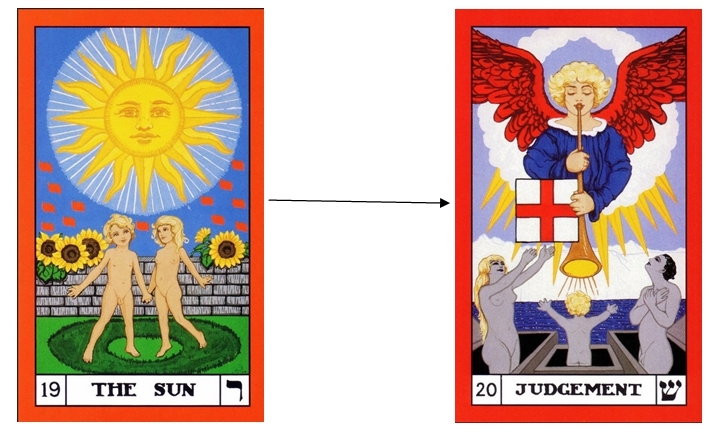
20.2 The Judgement Tarot Card Symbolism
This is the surrender and unification of our lower mind to our higher mind, surrendering and unifying our sense of who we are into a less individual, less personal and more universal and more neutral sense of self. The figures rising out of their tombs symbolise that which keeps us in a sense of being an individual worldly person with particular qualities like gender and age. Lower mind has “died” and is being “resurrected” in the service of higher mind. Our intellect and very limited individual sense of who we are have been dissolved and been brought back to life in a new form that express and serve a more collective sense of being a person.
20.3 Relevance to the Initiate
When we come to the path we probably have a very real ‘identity’, a sense of who we are as a person; our name, our job, our roles, our history, our beliefs, our attitudes, our hopes and expectations, our fears, our likes and dislikes, our loves and hates i.e. patterns of behaviour, feeling and thinking. These are all attachments that we have chosen or been given as we grew up and lived our life as a very personal individual.
Yet they are all illusions. They are limits that we hold on to in order to give ourselves a sense of continuity from one moment to the next. This creates and maintains a sense of our ‘self’ which gives us a (false) sense of existence and security. Yet this sense of “self” excludes us from a very wide variety of other patterns of behaviour, feeling and thinking. It makes us rigid and inflexible, it limits our ability to behave, feel or think in new ways or more universal & collective ways.
We may find that we cannot relate to, get on with, or accept others and their ways of behaving, feeling and thinking, even though each is simply a pattern in itself.
Giving up on our own individual patterns, our small sense of ‘self’ can set us free in a worldly sense; we can now behave, feel and think as we want to rather than how we have been taught or brought up. We can now find a more universal way of living, feeling and thinking that allows us a much wider range of expression and an ability to relate to a much wider range of other people and situations.
Giving up on our small sense of ‘self’ is not Enlightenment, merely a shift to a more universal sense of self, centring ourselves in higher rather than lower mind and yet still in mind. It may, however, make the process of letting go of all attachments easier and thus easier to prepare ourselves for Enlightenment to be given.
20.4 Potential challenges for the Initiate
We may want to hang on to our small sense of self. It may have been all we have known and may have (at least appeared to) have served us well for years. It may seem attractive to stay involved in being a particular person with a particular role or way of being. Yet it is still very limiting and its sense of security is very false and variable, it depends very much on staying in the same kind of environment and doing the same activities we have always done.
The Initiate may even become too detached from life and thus not interact and learn from others’ ideas and ways of being.
The Initiate may want to get back involved in the trouble and trials of a complicated sense of self again & we may believe that being a particular someone will be more satisfying.
20.5 Guidance for completing this Transition
By this stage we should know ourselves quite well. We should have looked at and possibly changed how we are in the world, what roles we play, what activities we do and learnt to let our interaction with the world flow without needing continual effort.
We should have looked at how we feel about ourselves and others and who we think we are as a personality, to express feelings and respond effortlessly and consciously and found a harmony and balance in how we see ourselves as a person. This stage is about letting that same flow happen in our thinking where we are no longer trapped in old ways of thinking & we can respond spontaneously and creatively in a wide variety of ways and be what a situation or others need.
Remember that your overall goal is to be free of all limitations of matter, personality and mind. Enjoy, but do not be satisfied with, the short-term, limited freedoms found by escaping from old ways of thinking and not having to have a limited sense of who you are.
Transition 21 : Judgement – The World
21.1 Summary of this Transition
The World represents achievement in the third tarot card sequence.
This transition is about realising and expressing our sense of self outside of our role in the world, outside of our personality and outside of our individual mind.
21.2 The World Tarot Card Symbolism
This card completes the physical, emotional and mental journey with the Initiate at ease with their interaction in the world, their feelings and personality and their philosophical outlook and higher sense of self.
They have worked through and completed the tasks concerned with their relationship with the world, their personality and their identity. The wands in the figure’s hands both point up and down indicating that there is union of our higher and lower selves and they can act as a conduit for expression of spirit into the world.
The four figures in the corners have only their heads showing and are separated from the central figure by the oval wreath – compare this to the Wheel of Fortune card where they are complete figures and more involved in the process of the card.
In The World, only showing the heads may symbolise that only the higher aspect of the figure has been retained, the rest not essential to the life of a spiritual person. Also, since in The World they are separate from the figure, the Initiate is aware that their nature is separate from even these higher aspects of personality and mind.
21.3 Relevance to the Initiate
No longer continually distracted or moved by creating and maintaining a limited individual sense of self it can be much easier to follow the inner process of The Path. If we can balance, harmonise and let go of our small sense of self, it will no longer have as much influence and control over us. We can focus on our meditation and on development of our personal qualities and resources to better follow The Path and to help it spread.
We can also be much more adaptable to be what other people need from us whilst still remaining true to the principles of The Path. If we do not need to be a particular someone then perhaps another person can more easily give up their old entrenched way of being and open up to new learning.
The Initiate has resolved old mental conflicts. They have changed subconscious reactive ways of thinking and being into conscious, more philosophical thinking. They have integrated the old and the new into a humble sense of self and then given up even that sense of self. They can become a channel to higher energy and wisdom rather than an obstruction or filter.
21.4 Potential challenges for the Initiate
This transition is about accepting the new higher sense of self. It may be difficult to find enjoyment in being a simple and yet effective person, difficult to find happiness by being more in every moment. The Initiate may want to get back involved in the trouble and trials of a complicated sense of self again. We may get attached again to the false security of being a particular someone.
Or the Initiate may even become too detached from life and thus unable to apply their self, and no longer learn from interactions with the world and others. They may not wish to contribute to letting insight and wisdom flow out into the world.
The the aim is to re-engage with others and the world, but the danger remains of becoming trapped again into set ways of thinking or a sense of being a particular individual.
21.5 Guidance for completing this Transition
Making this transition is about being able to stay in or close to a point of balance. Remember The Path is about finding that which is still and unchanging and avoid filling up our time with too much thinking or creating a sense of whom we are or what role we play. What is to be discovered inside meditation makes being someone in the world pale into insignificance.
Learn to see and enjoy the great variety that still exists in the moment-to-moment changes of our sense of who we are as we adapt to what is required of us. Discover the more subtle variations in our mental states that can happen with very little input from the external world or others.
Learn that control comes through acceptance, seeing our place and role in any interaction and remembering or realising what we truly want and then respond and act with insight.
The external world and people in particular, can be very good teachers of where our attachments and fears lie, and can provide wonderful opportunities for growth into new awareness of the limits of our small self and behaviour that helps us break out of those limits so do not become disengaged with the world and others around you.
Remember that we experience and learn more if we let insight and wisdom flow through us rather than not engage at all or try to hold on to what we have experienced or learnt. No matter how big the container, it will still quickly fill up if it tries to hold onto the flow of energy or life.
This completes the third sequence of Tarot Cards. Thinking and sense of self should now flow easily in balance and leave the Initiate freer to focus on their path to Enlightenment.

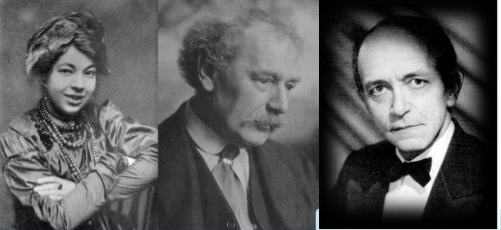


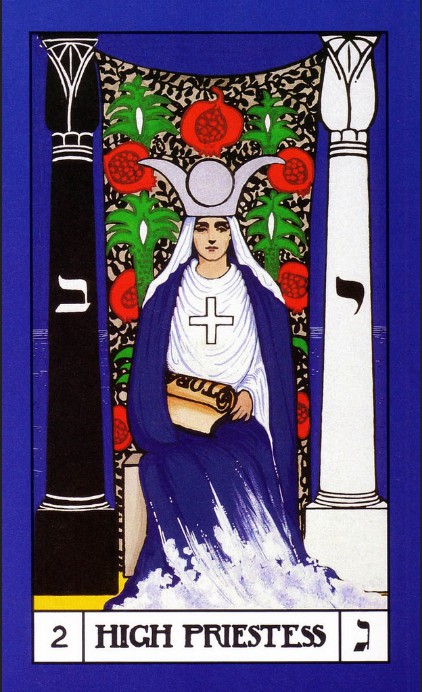
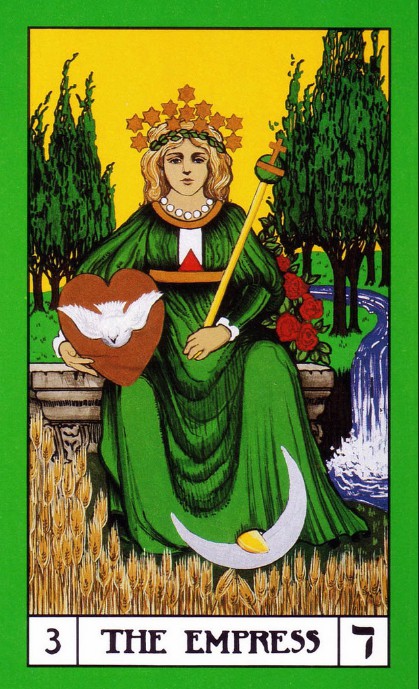
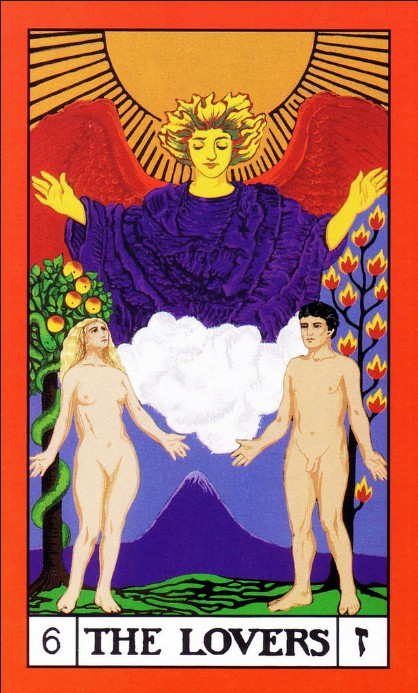
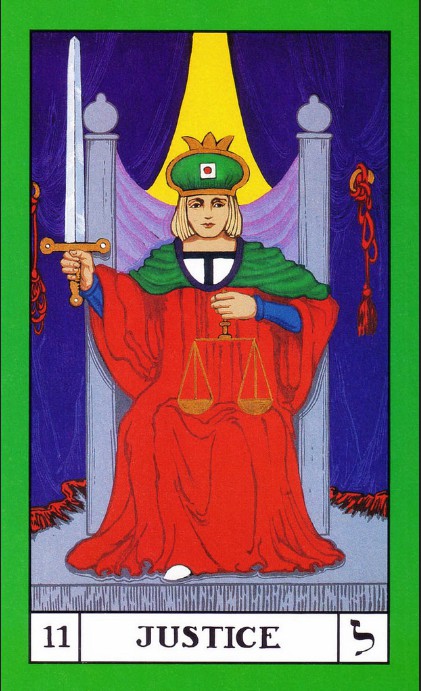
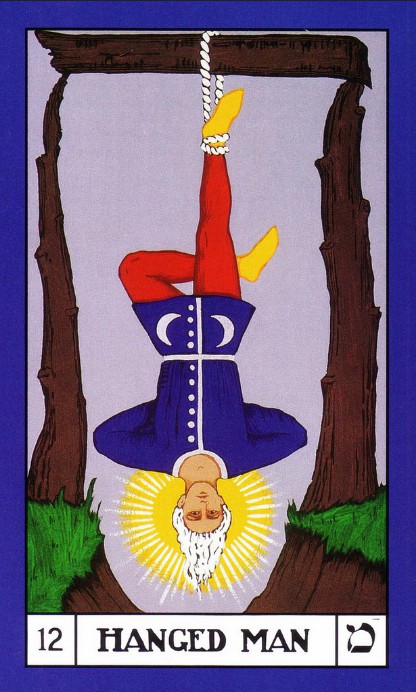
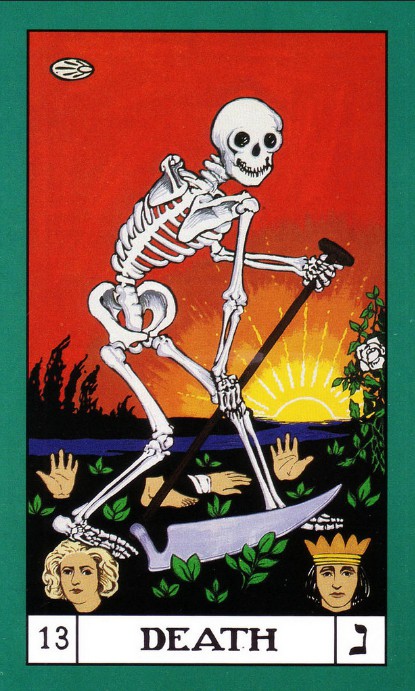
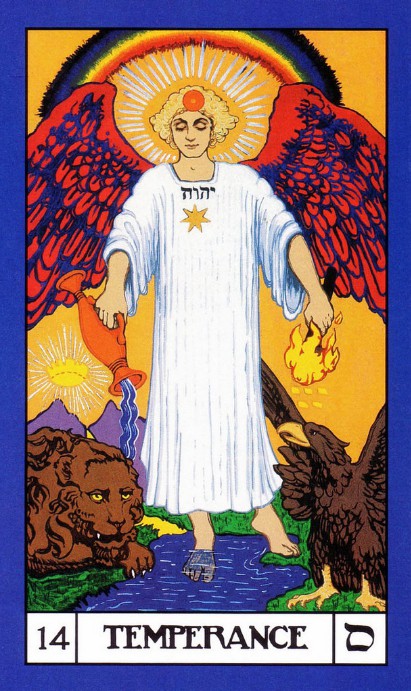
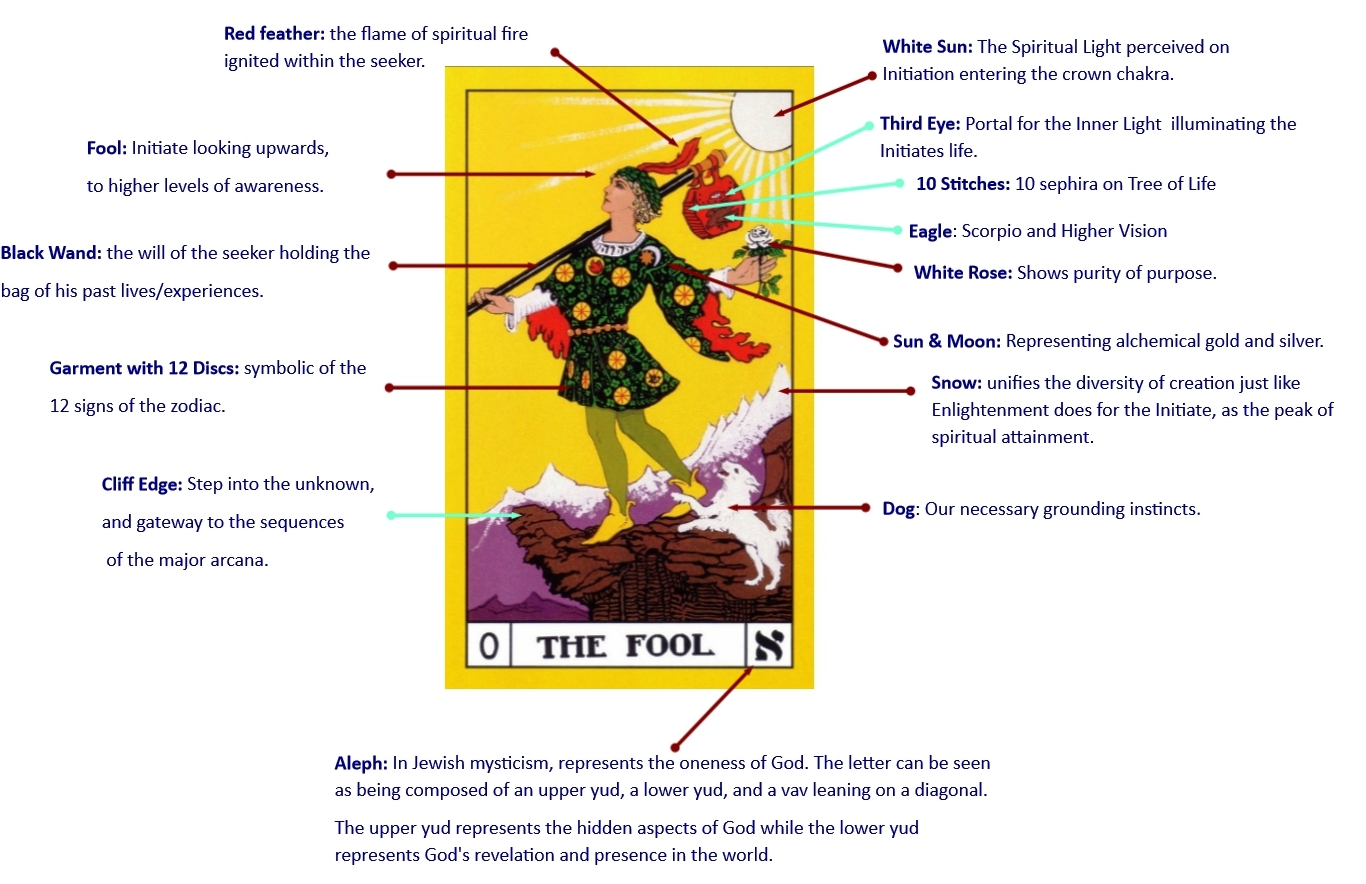
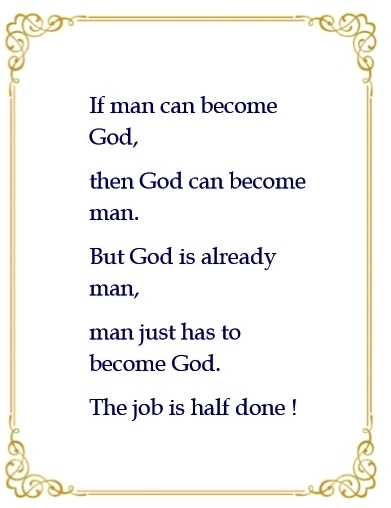
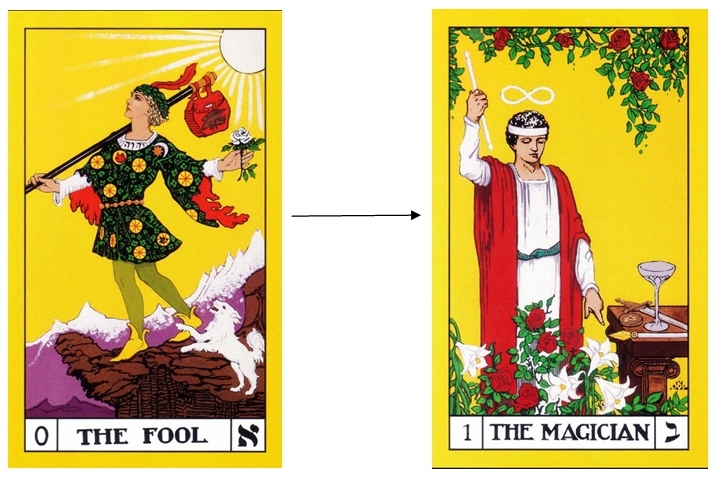
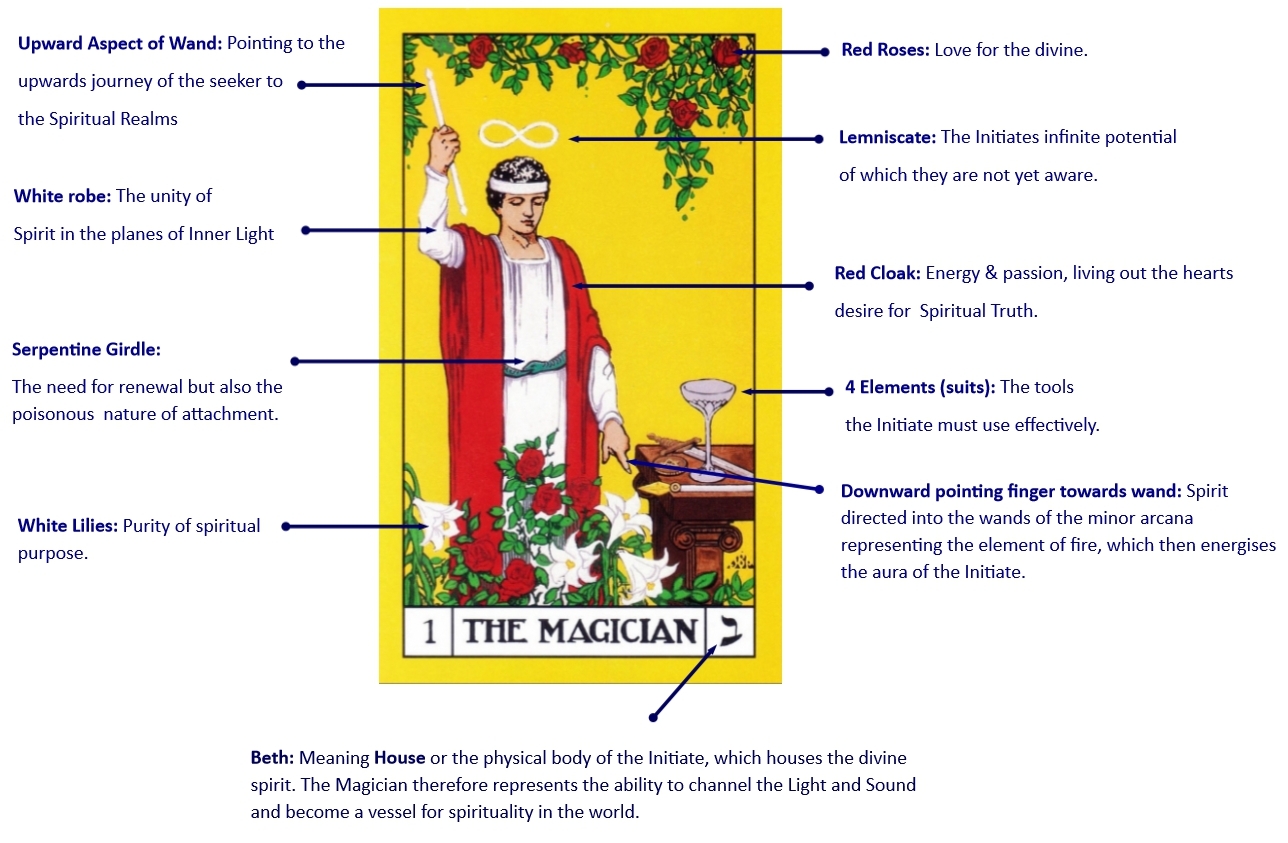
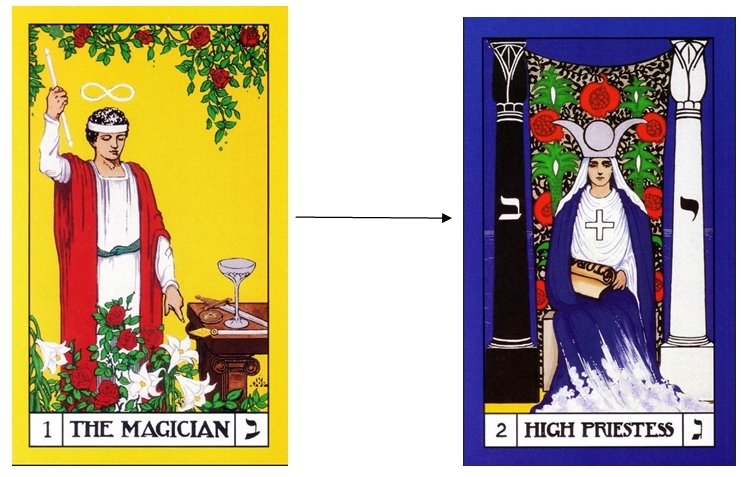
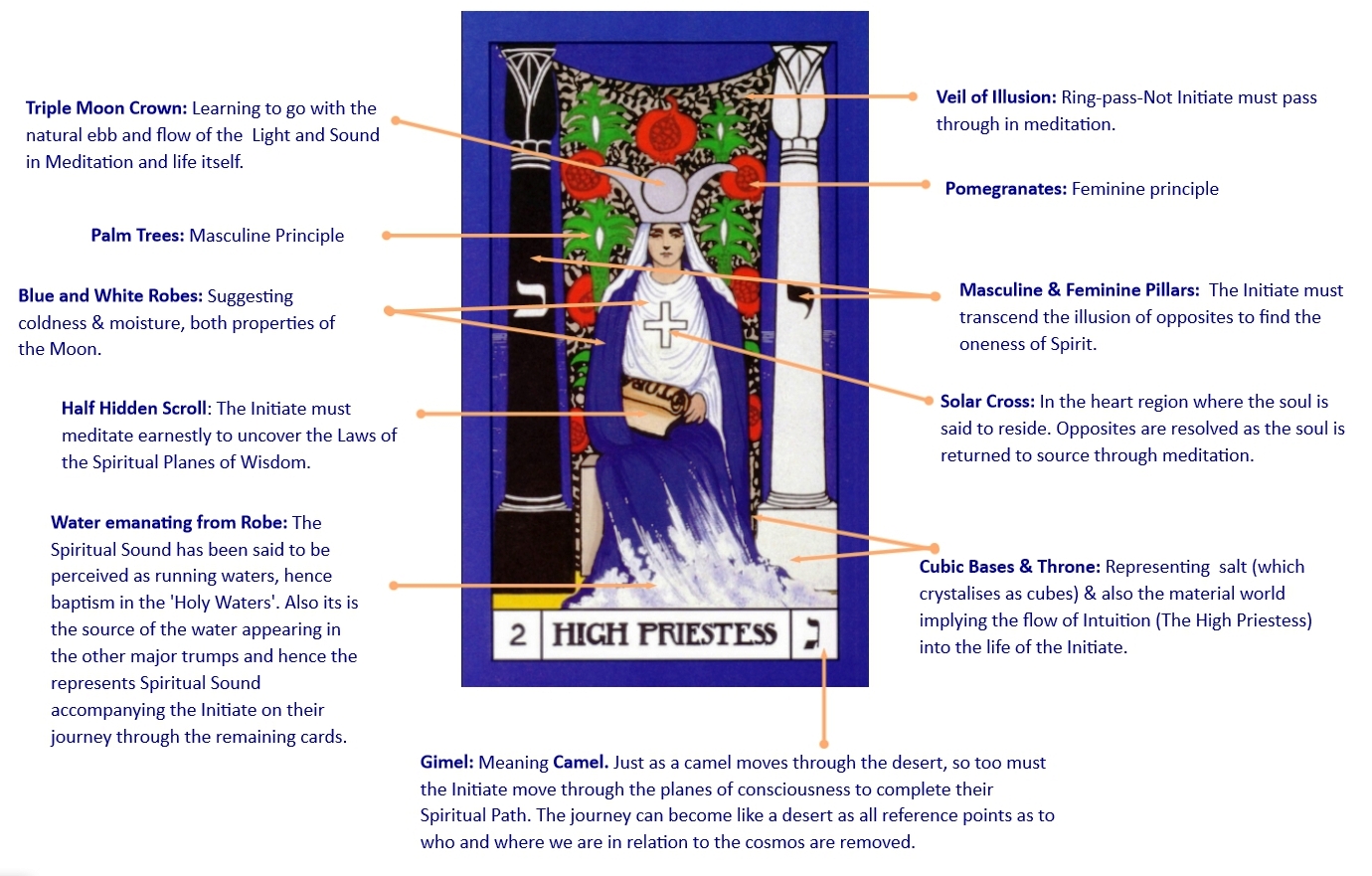
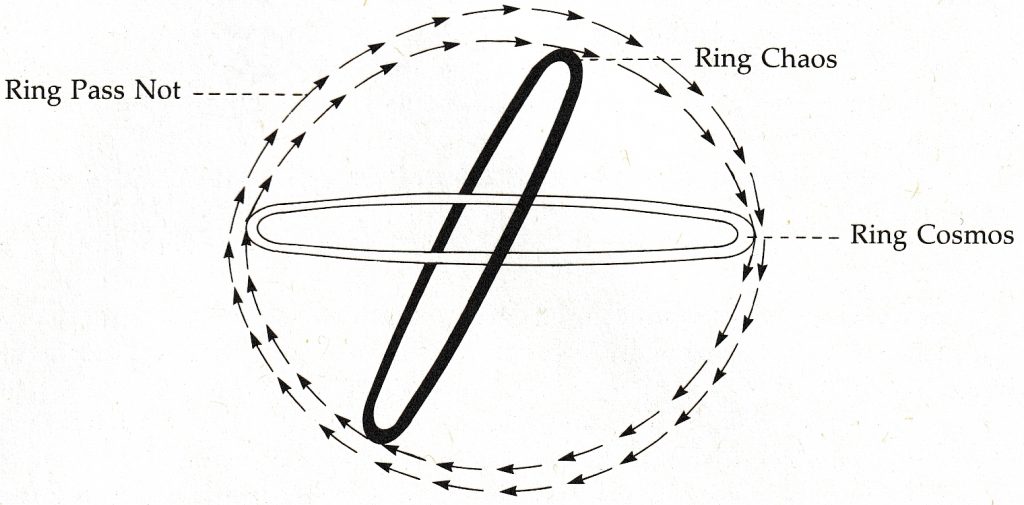
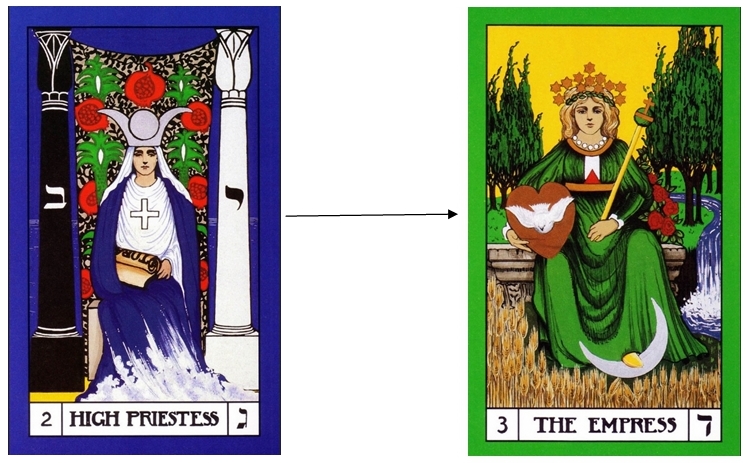
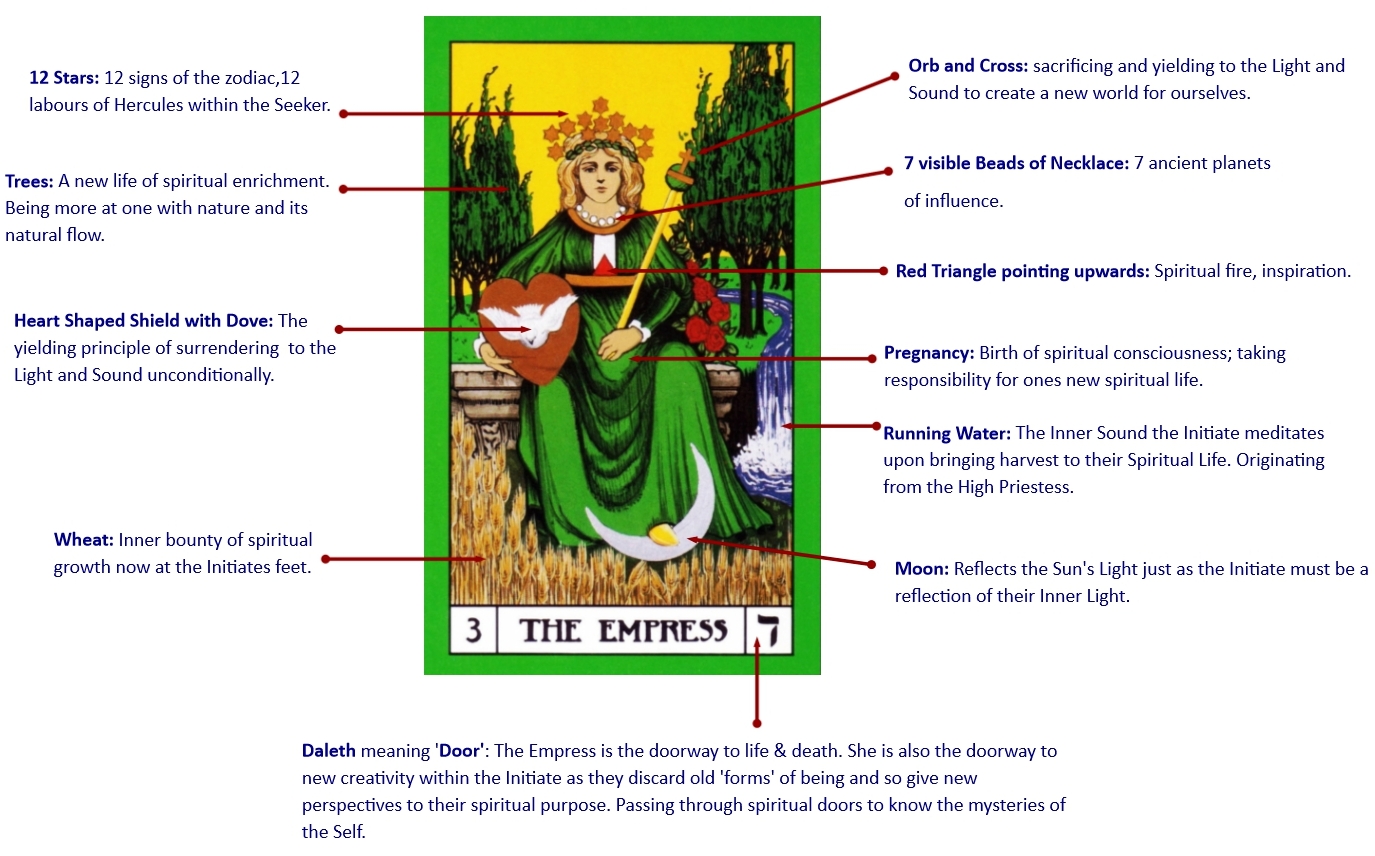
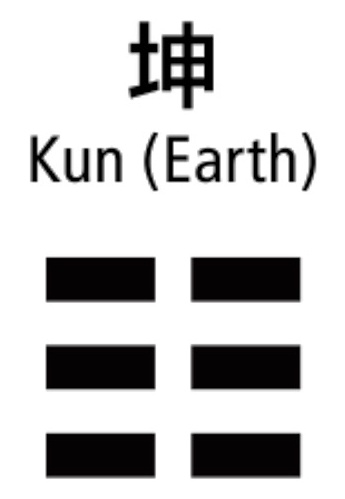
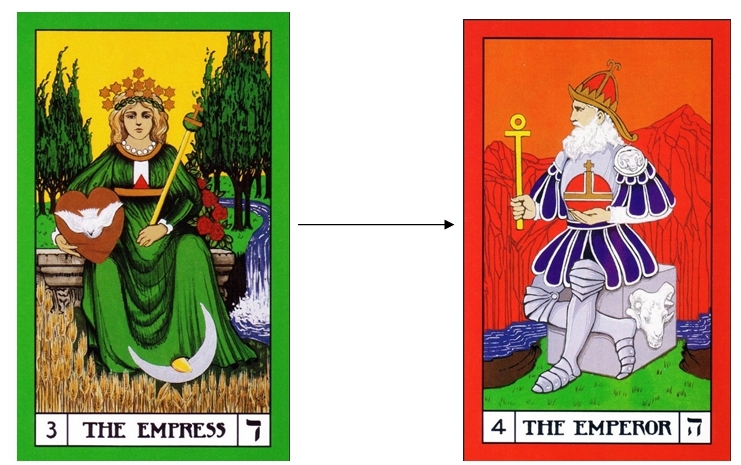
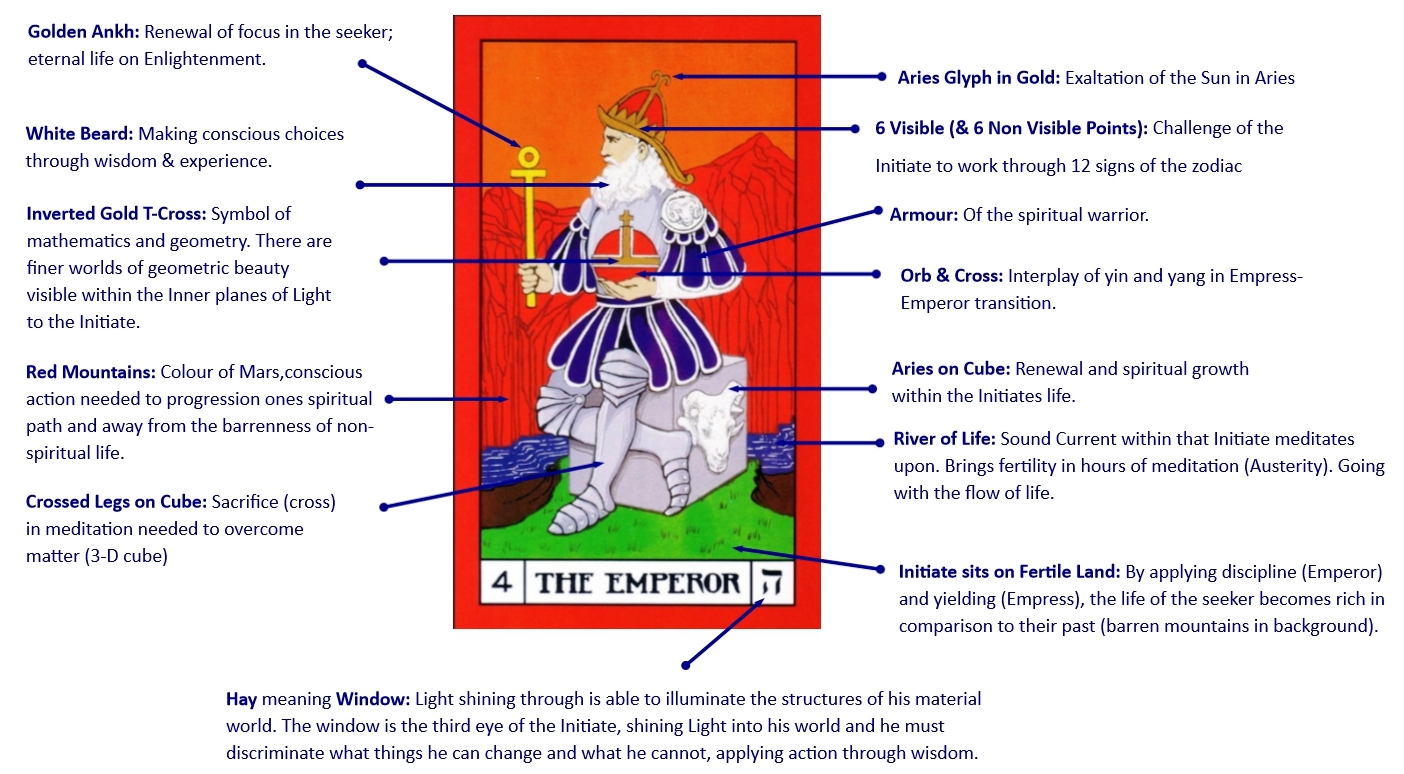
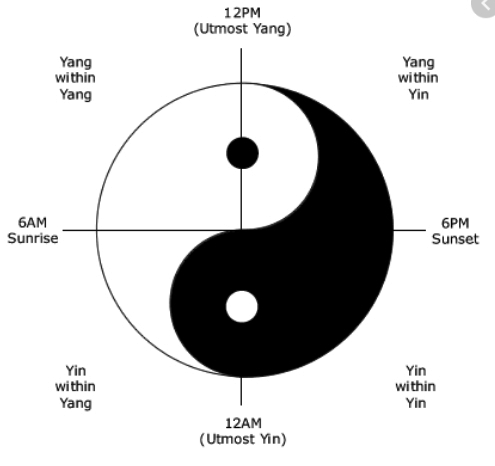
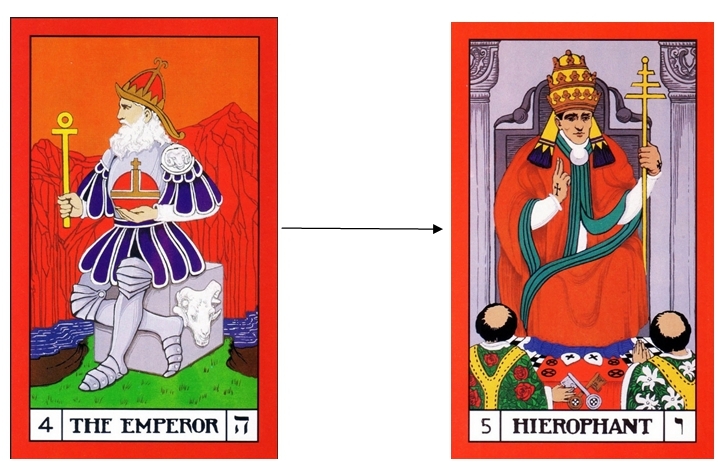
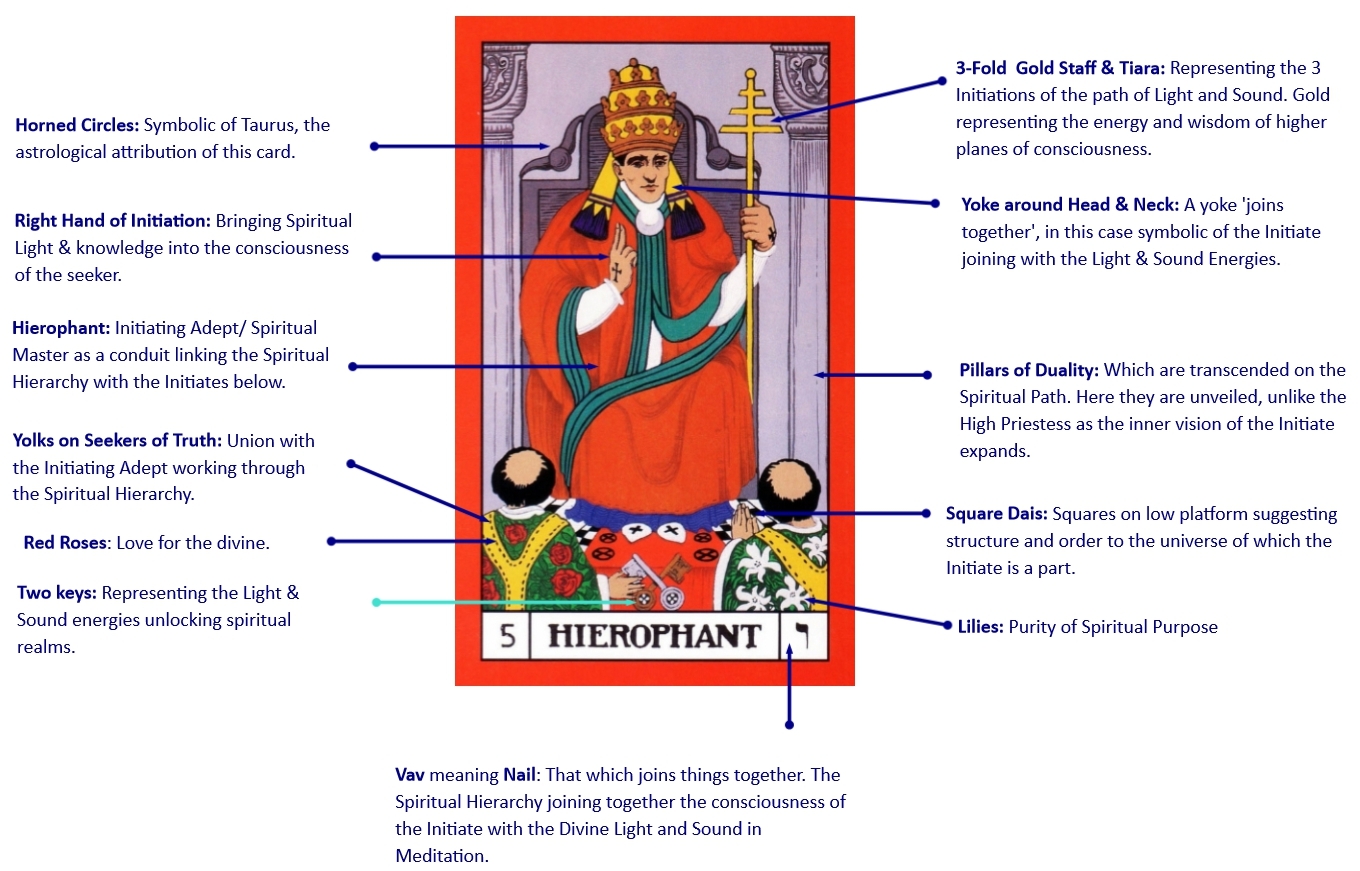

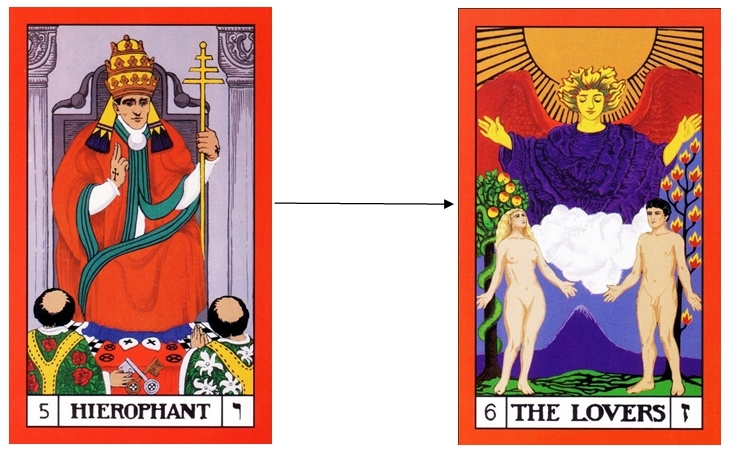
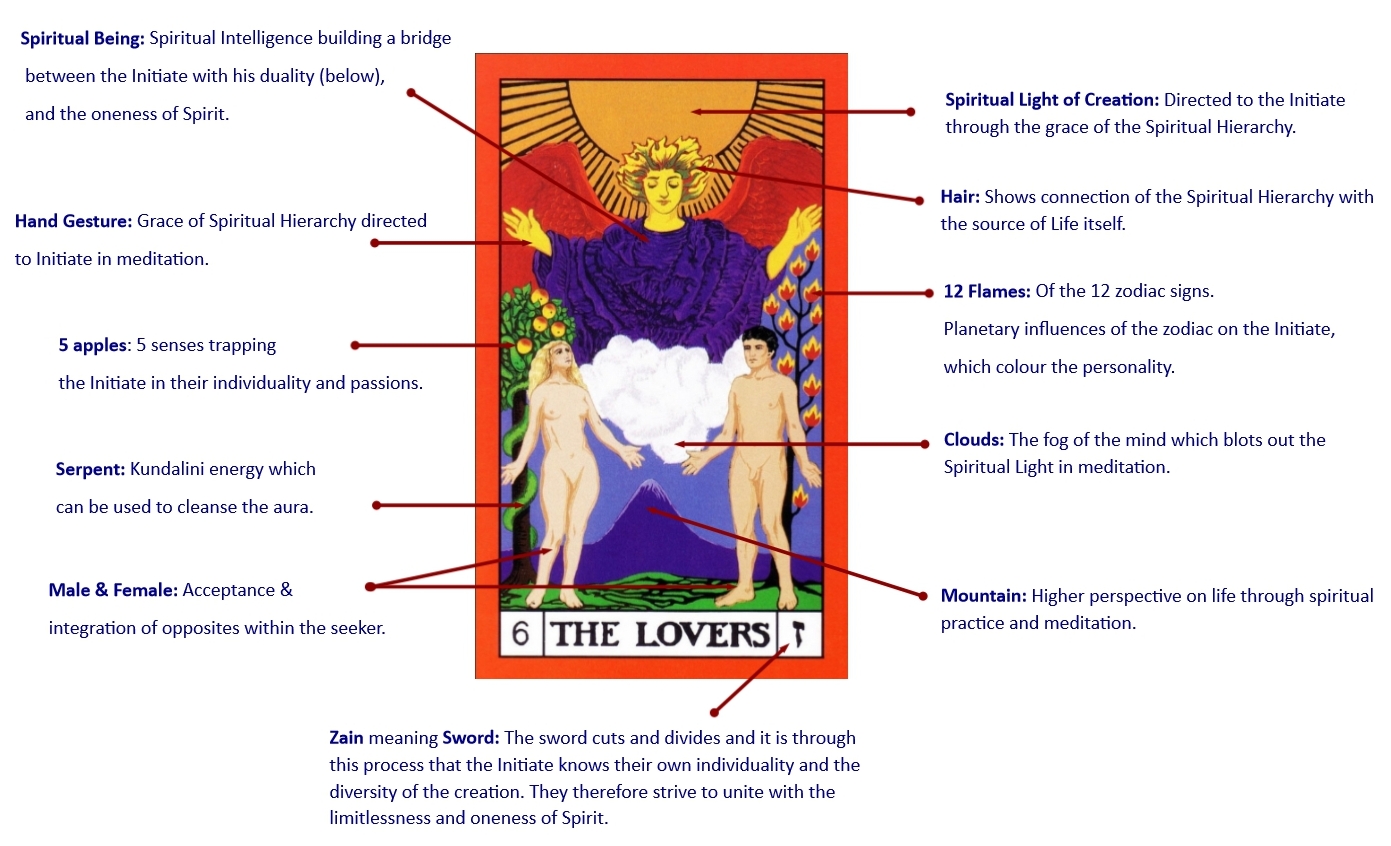
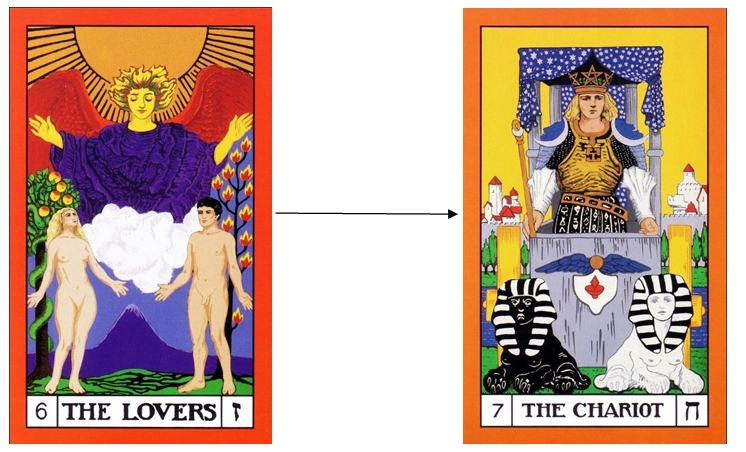
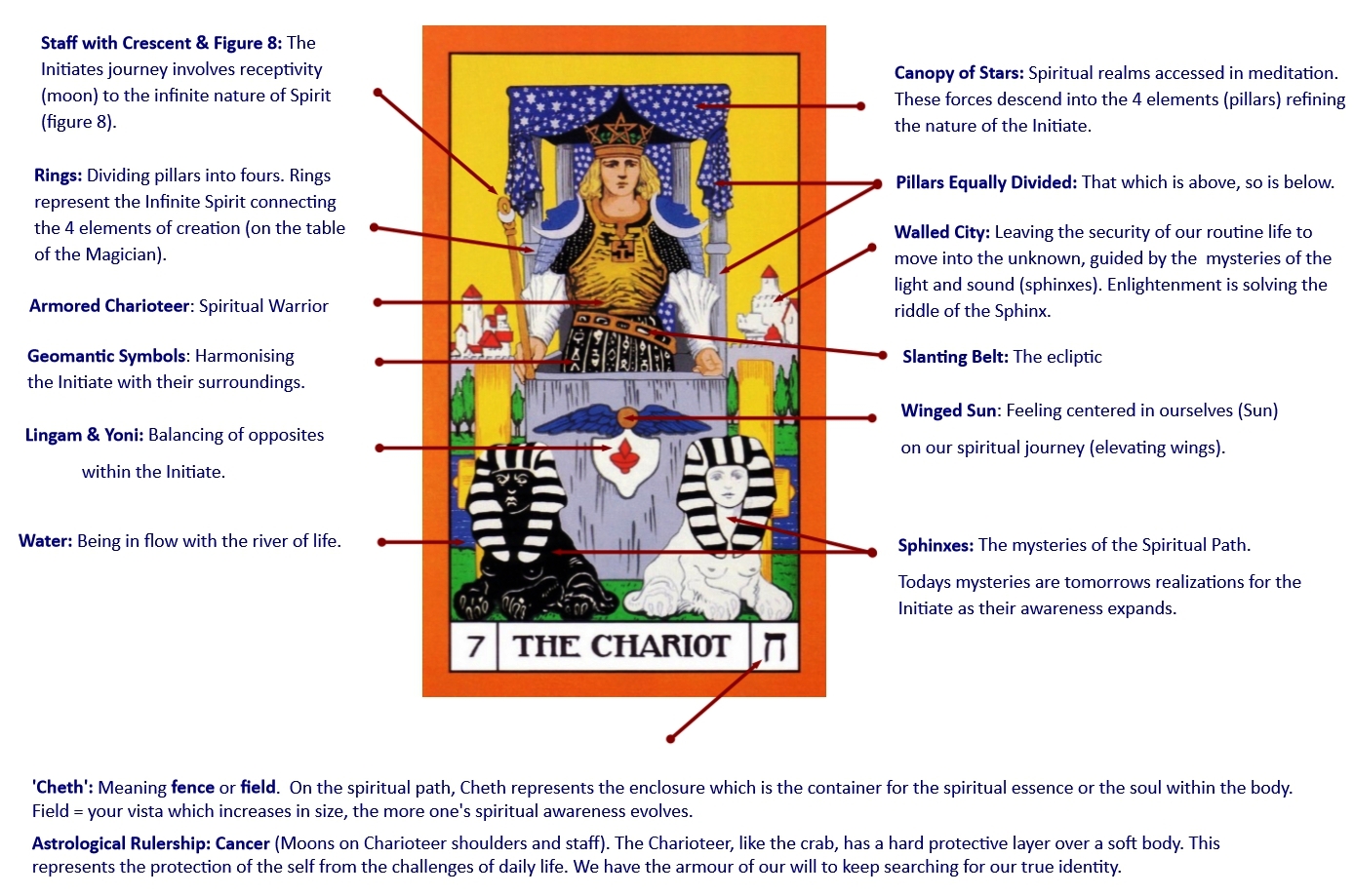
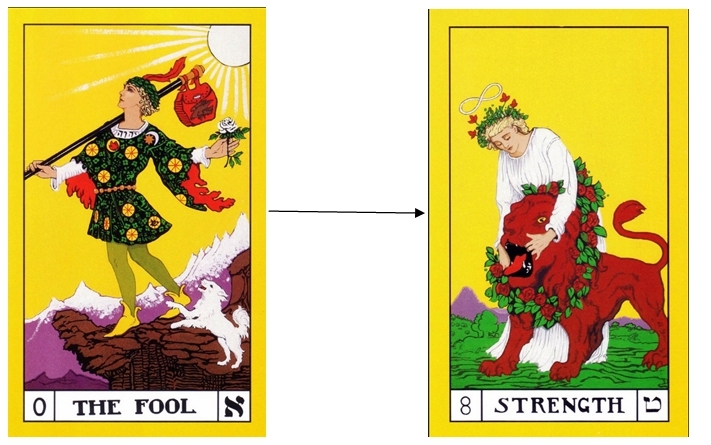
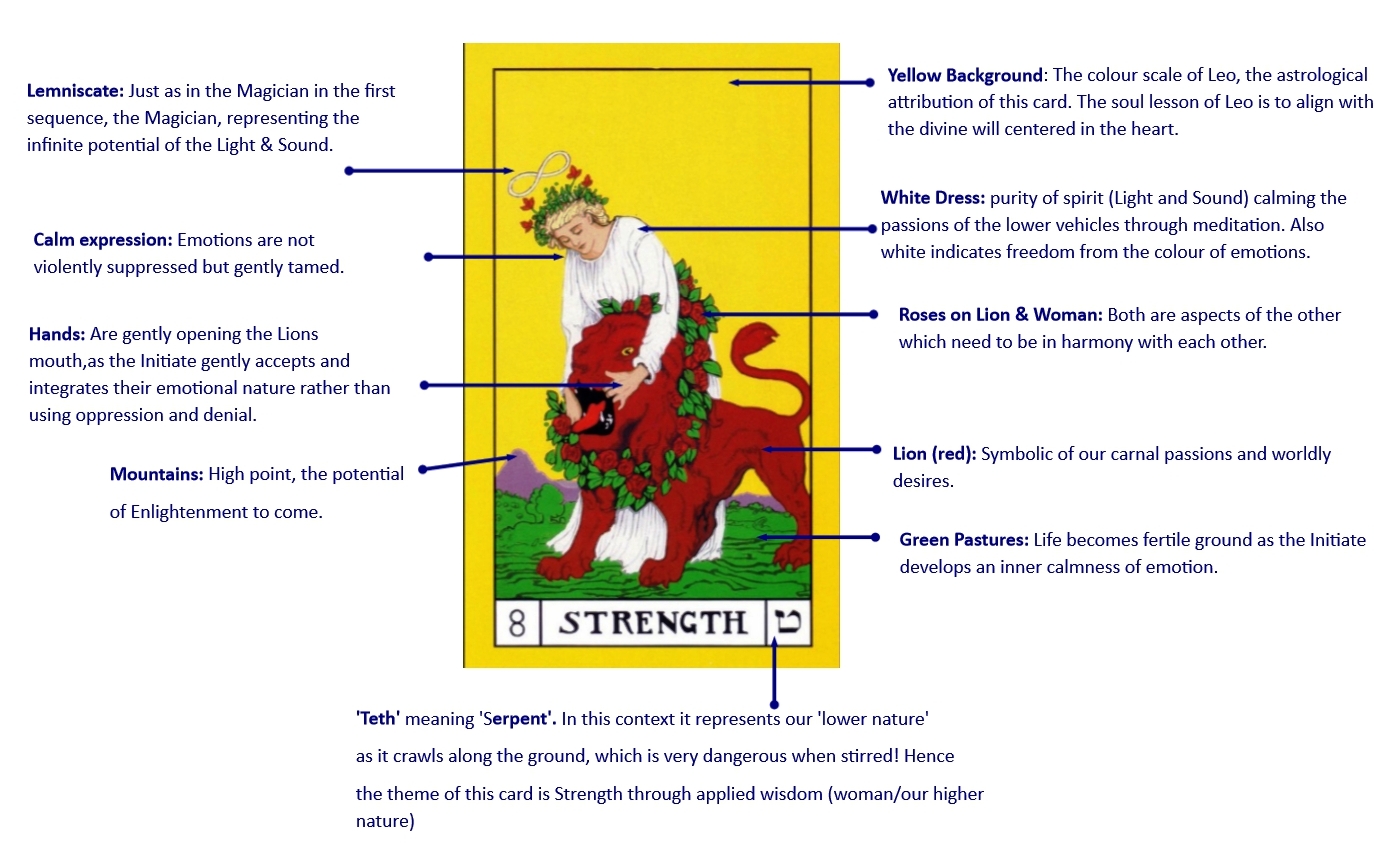
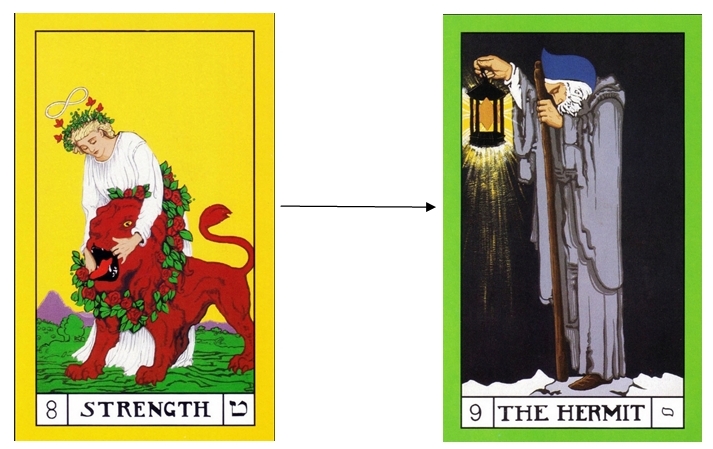
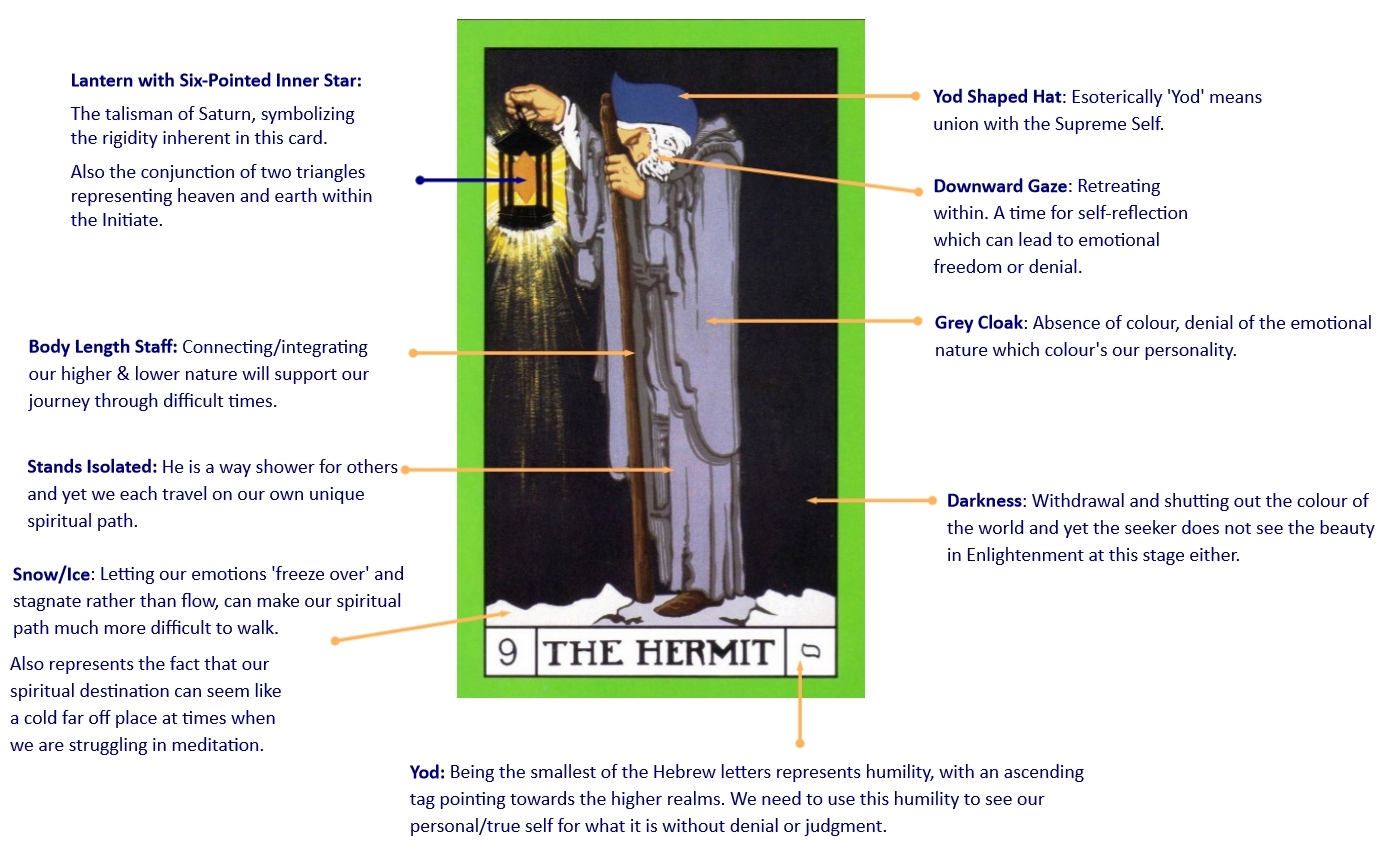
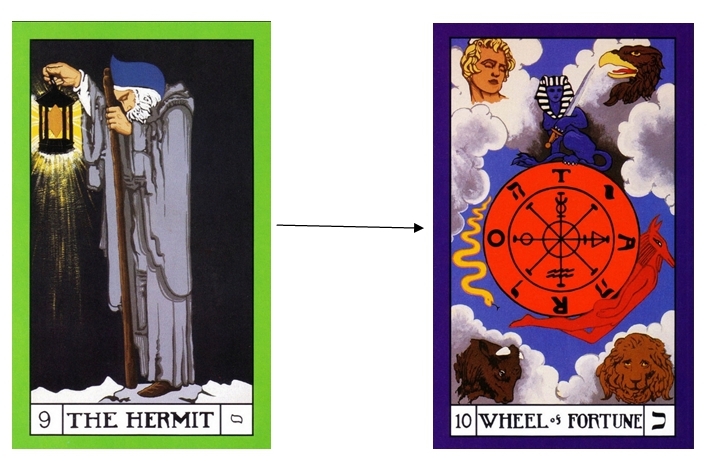
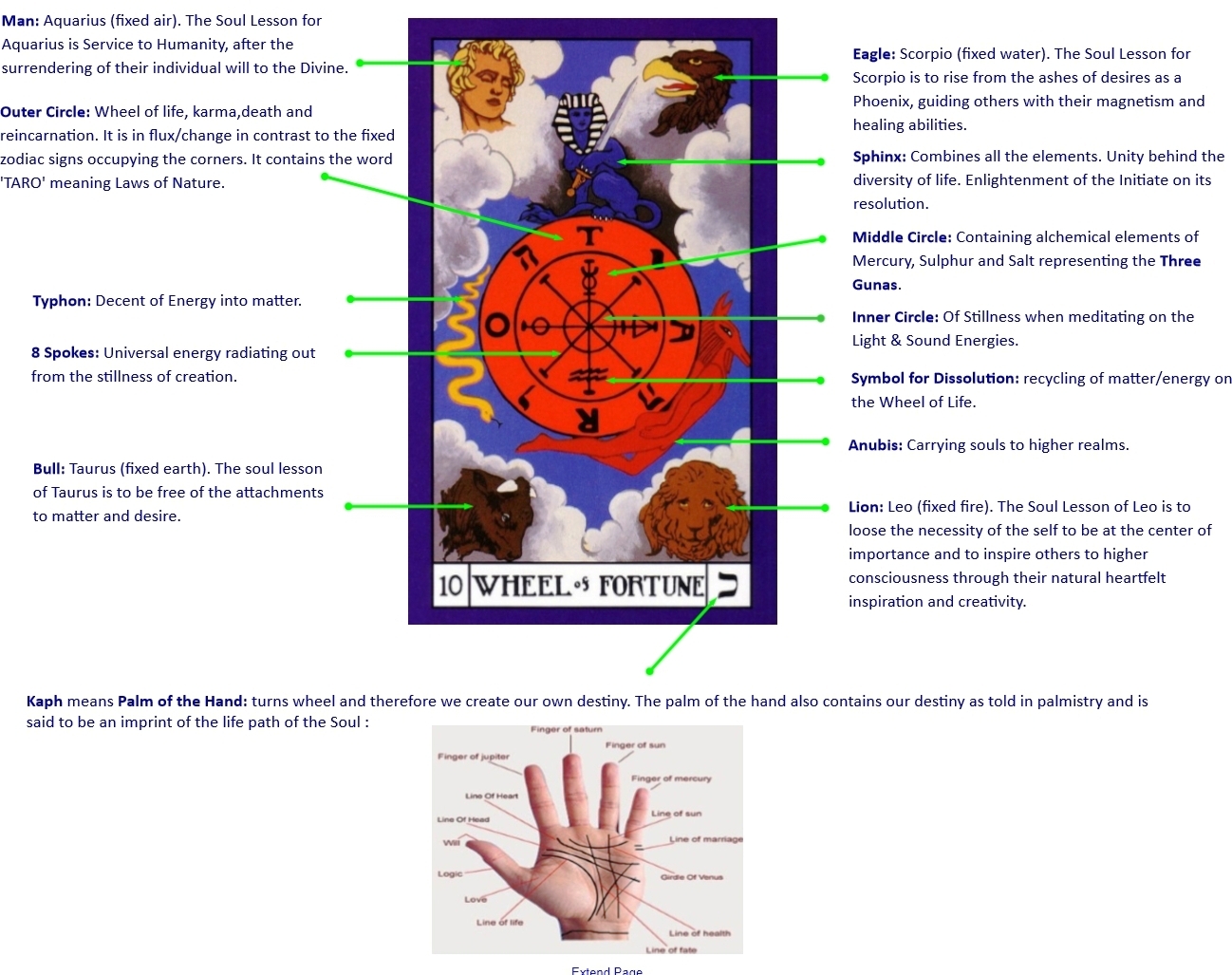
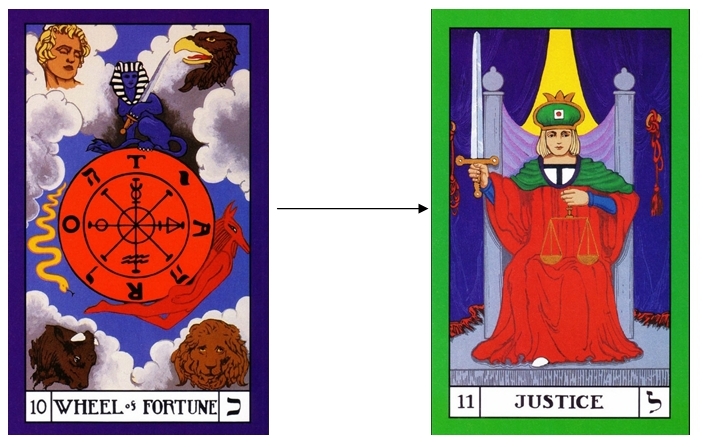
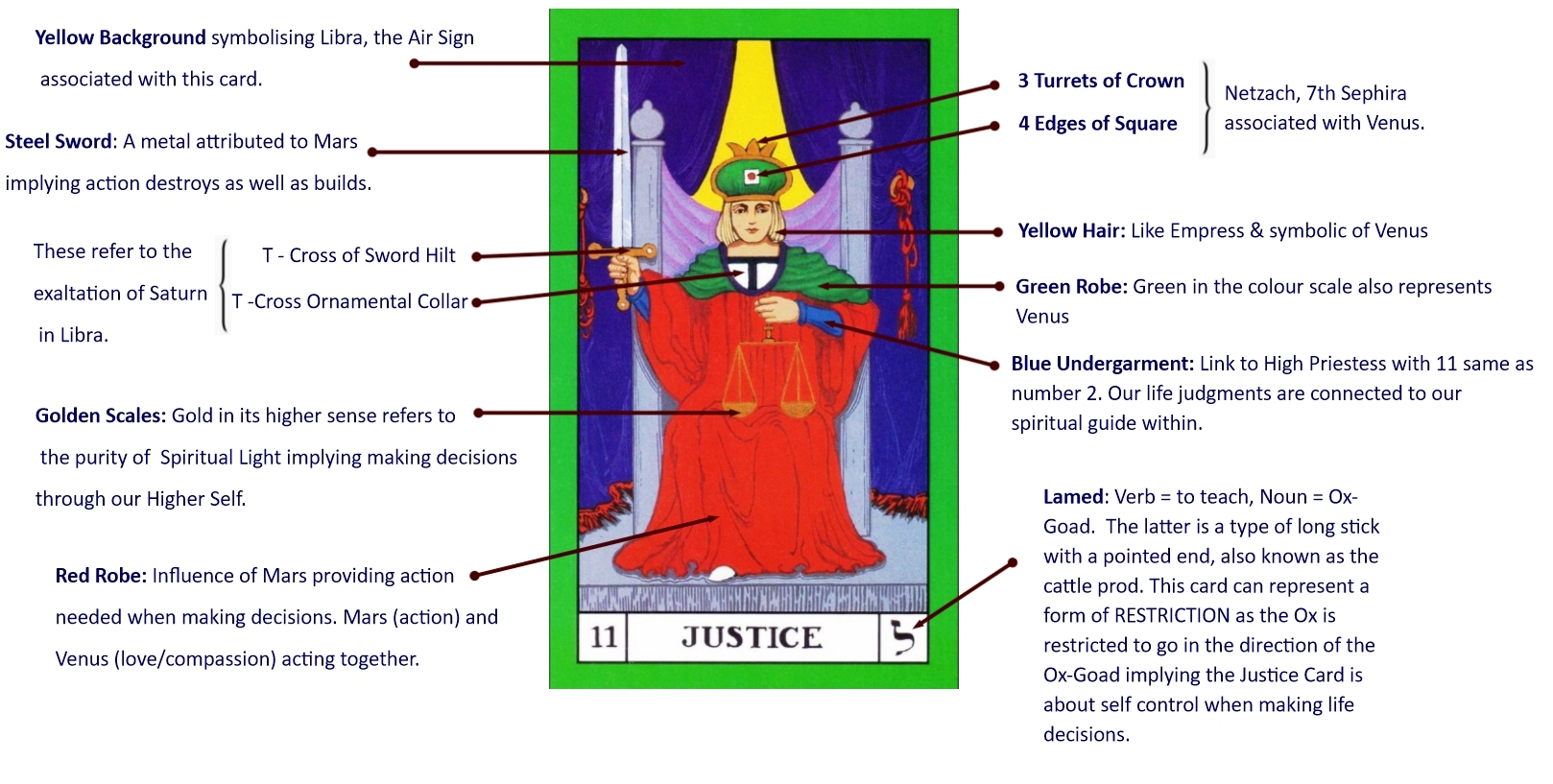
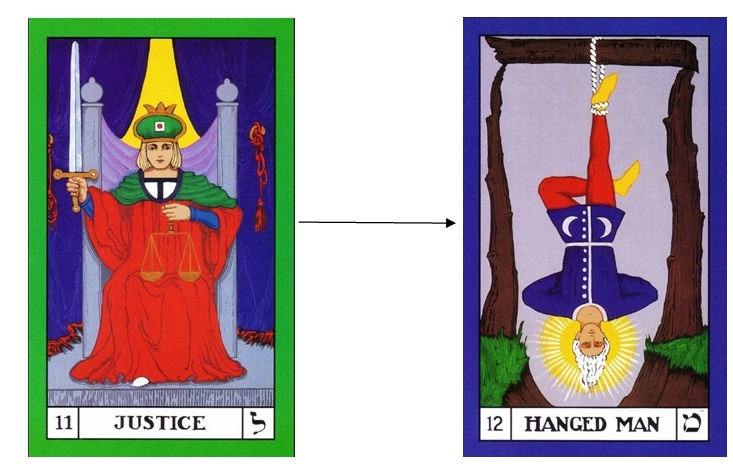
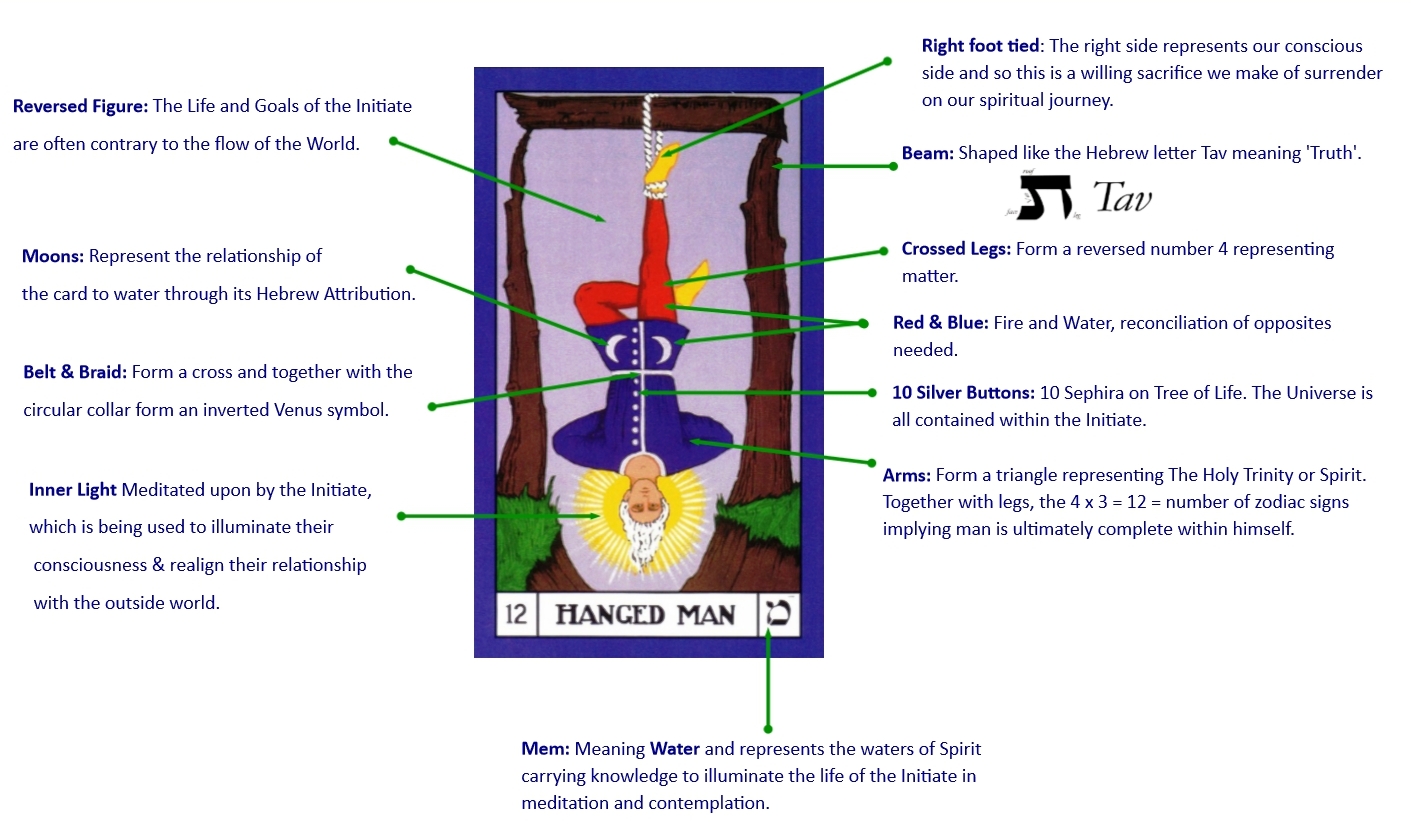
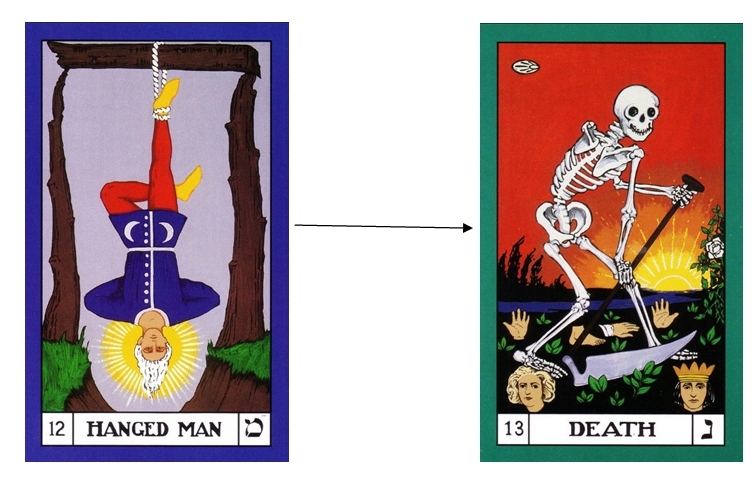
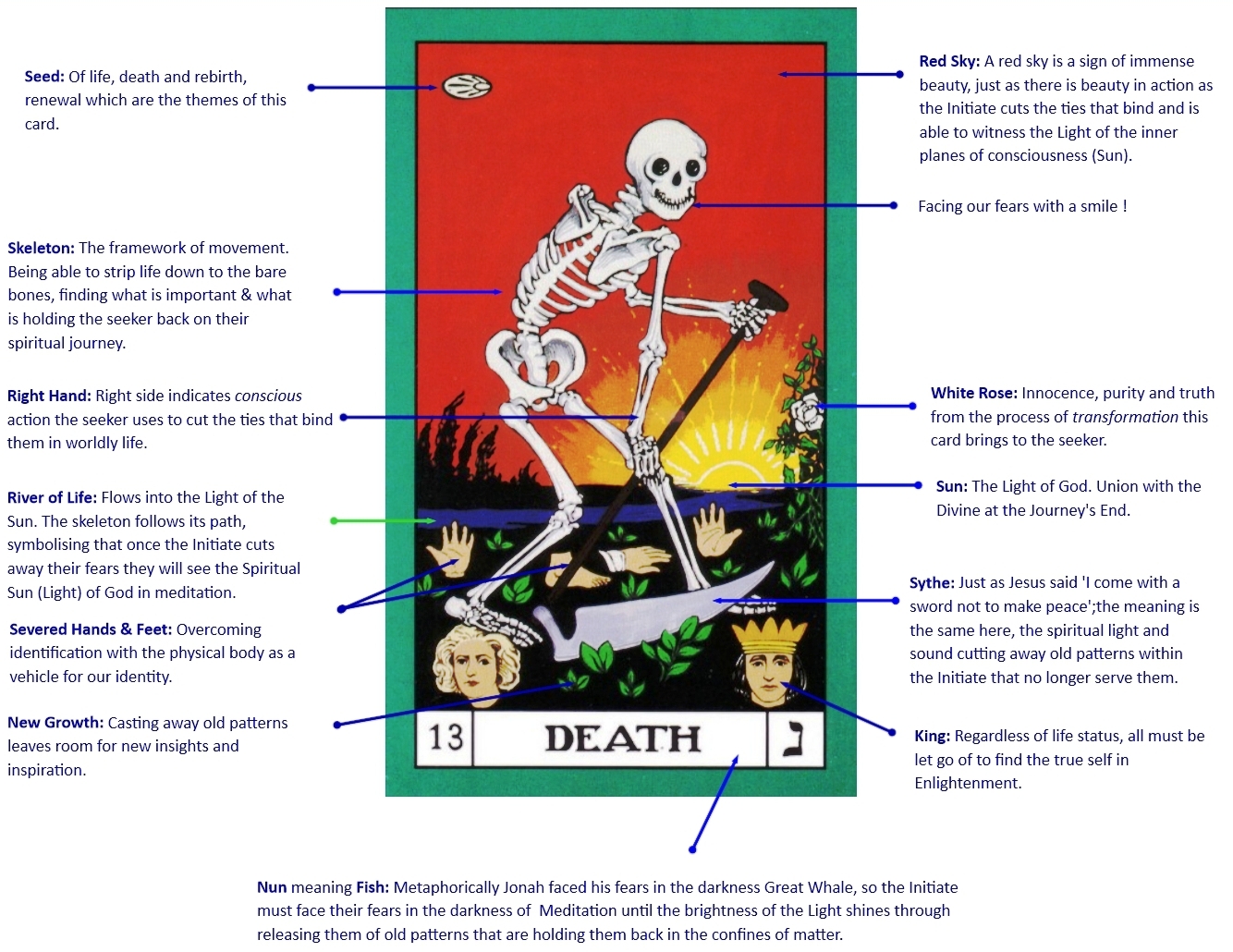
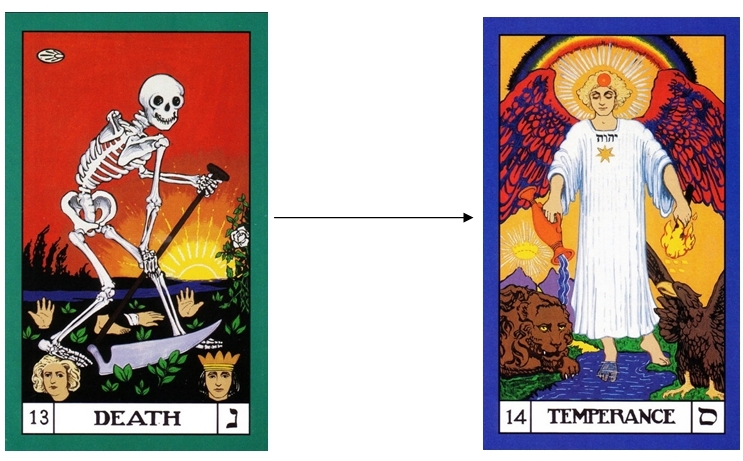
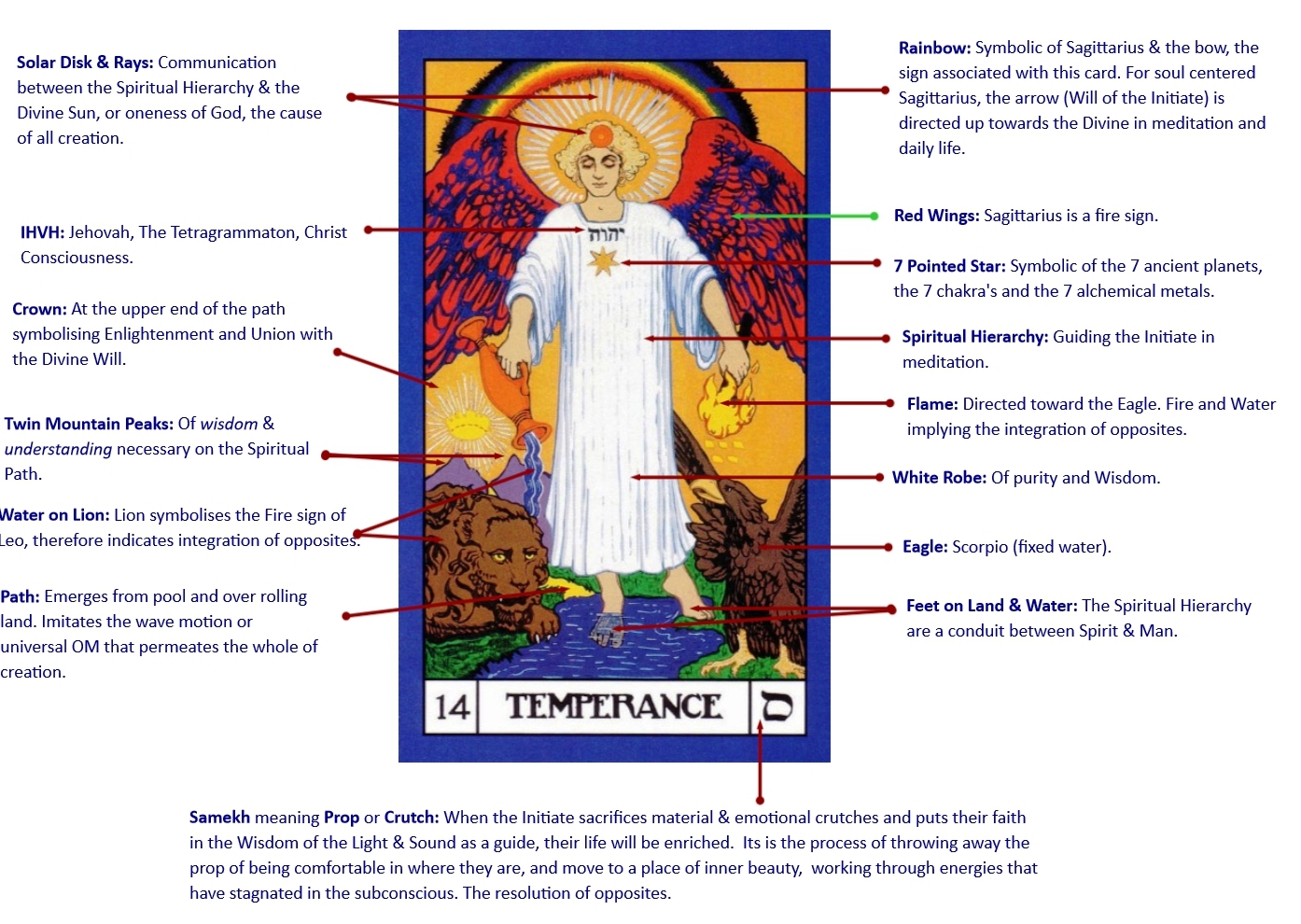
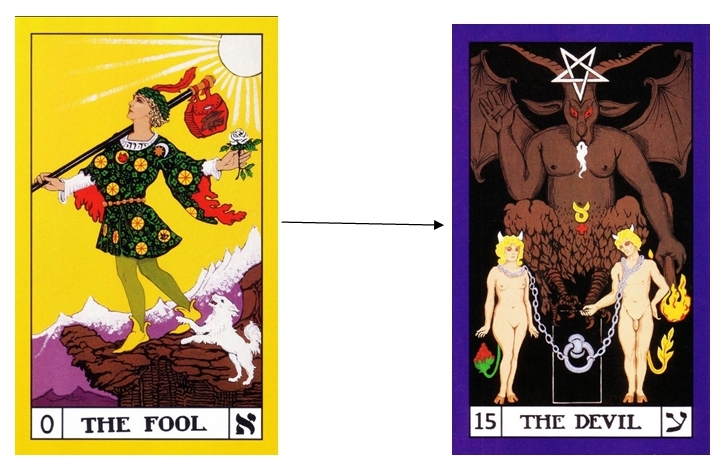
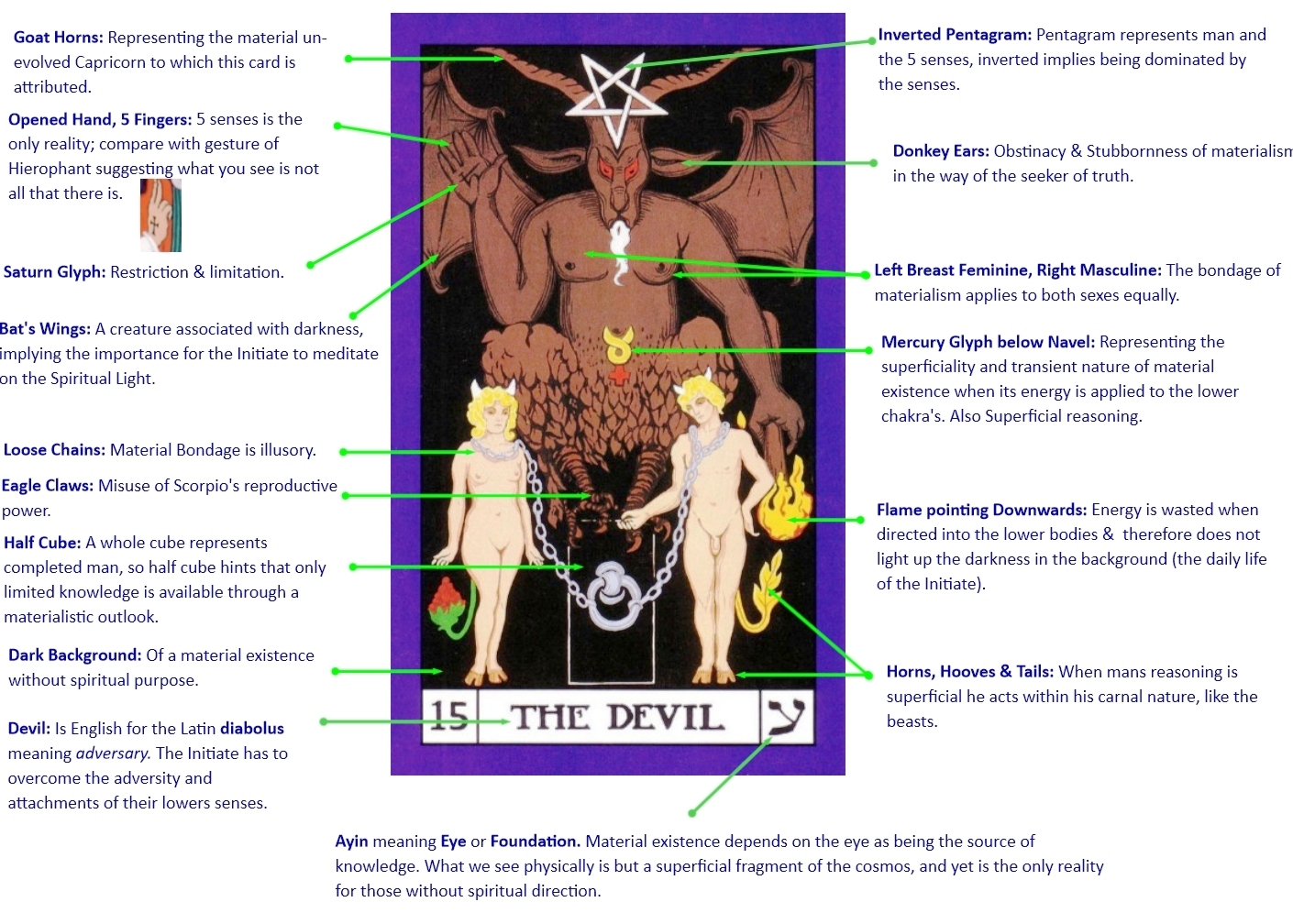
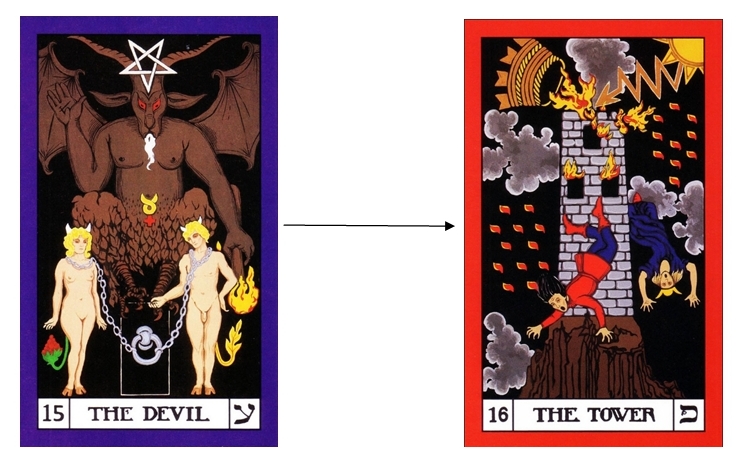
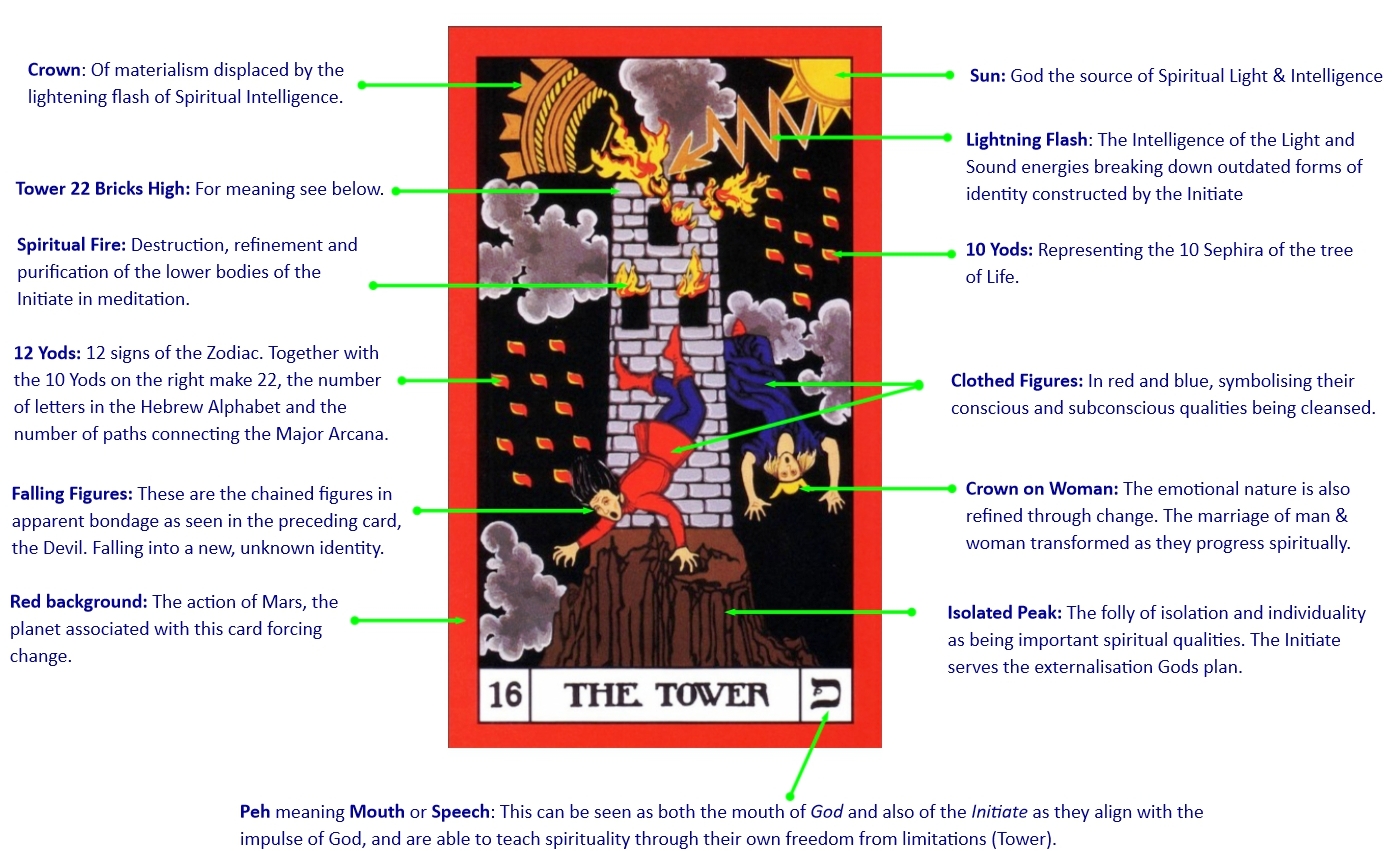
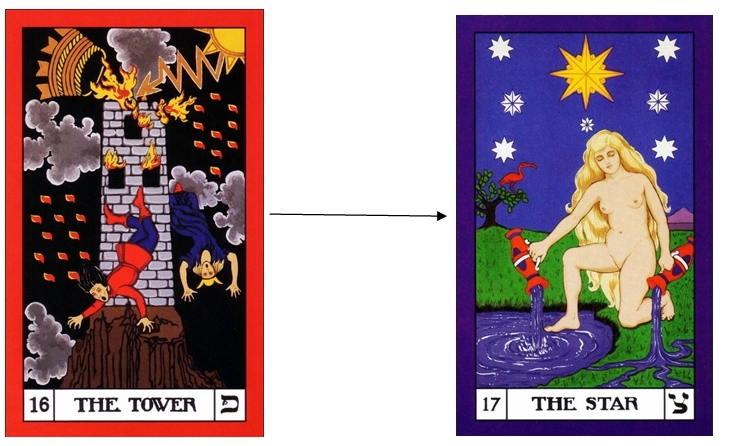
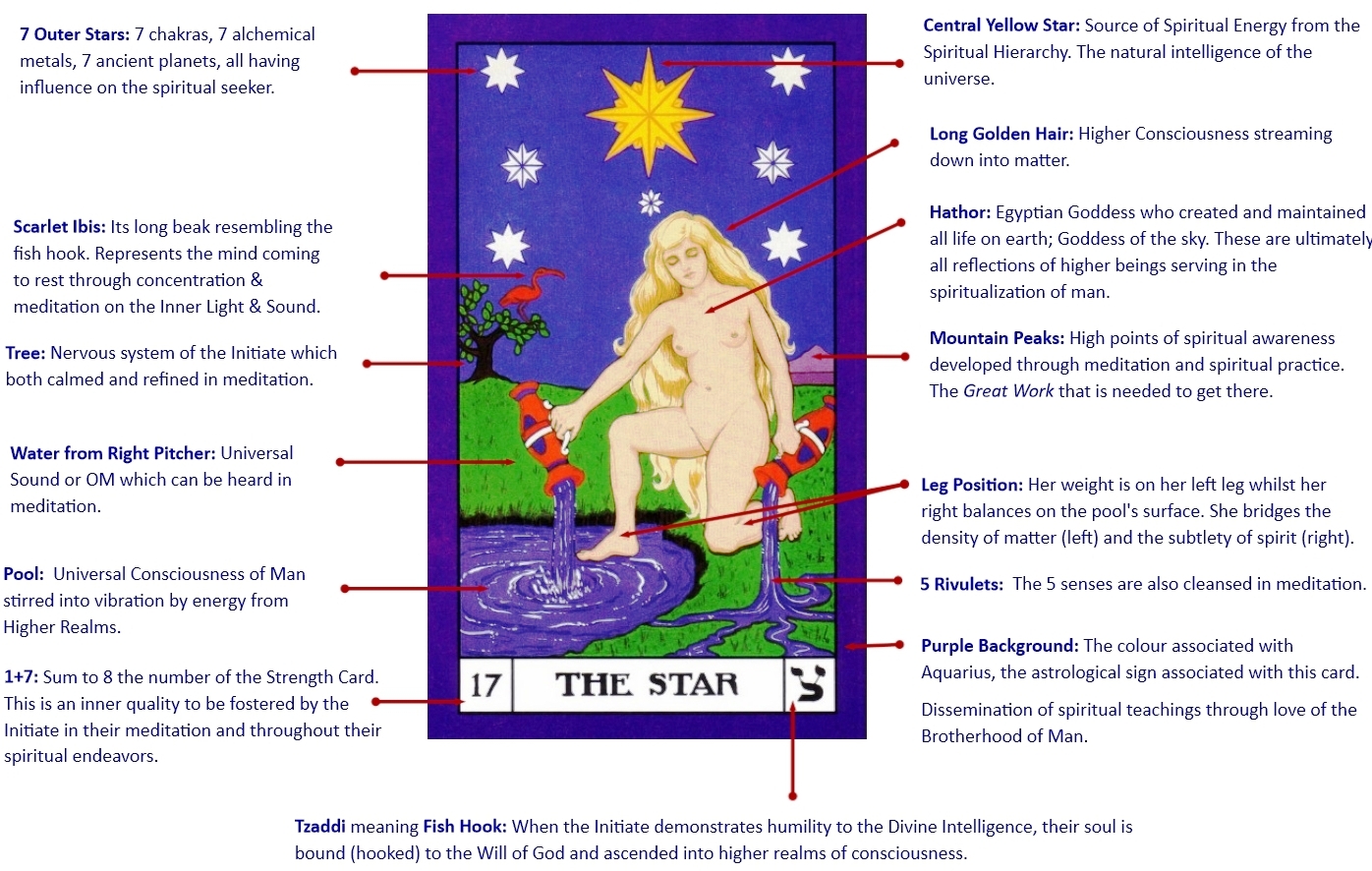
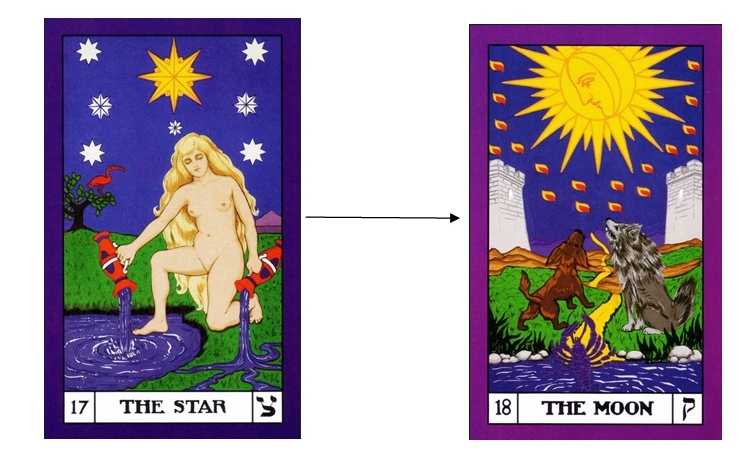
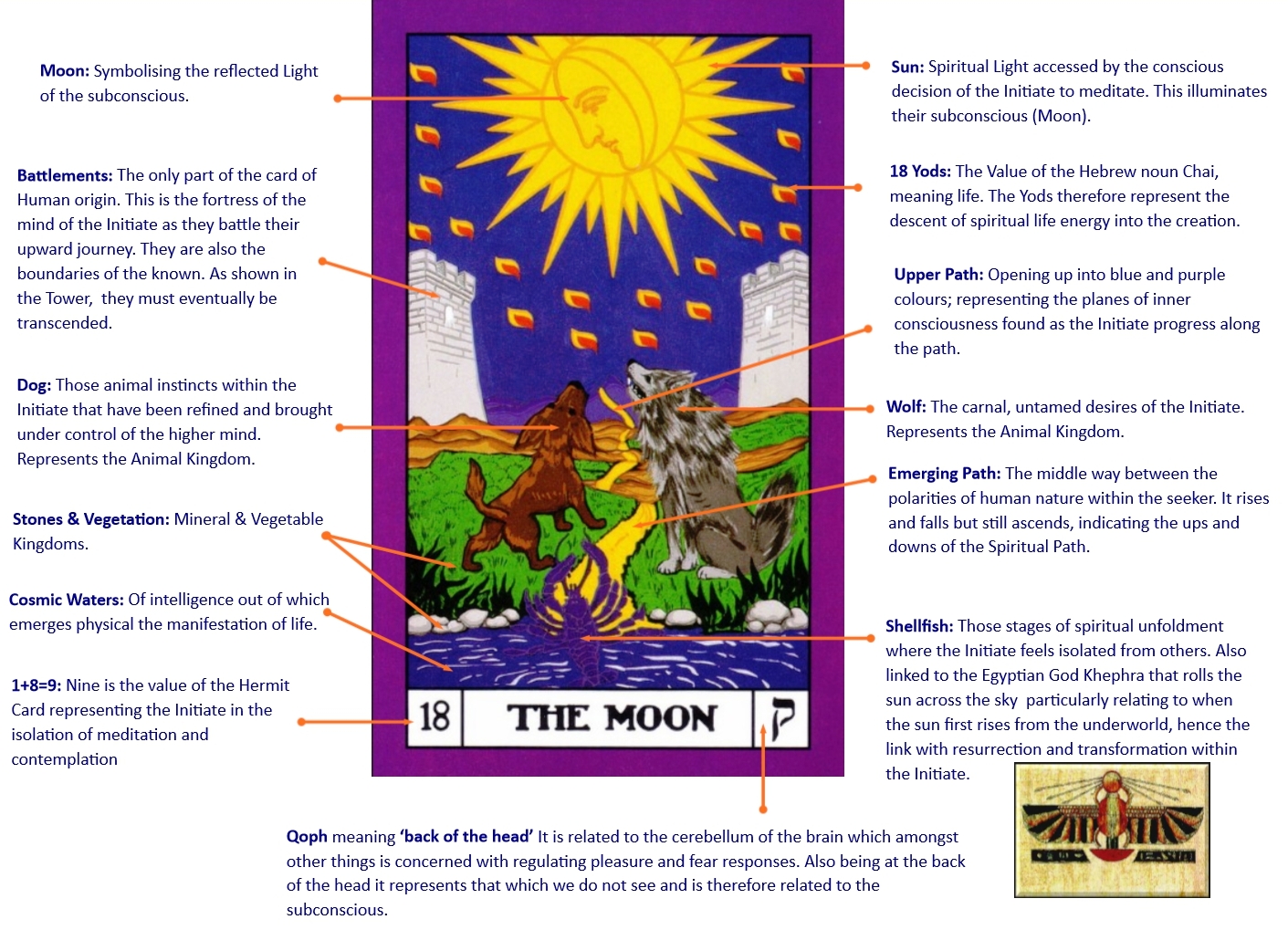
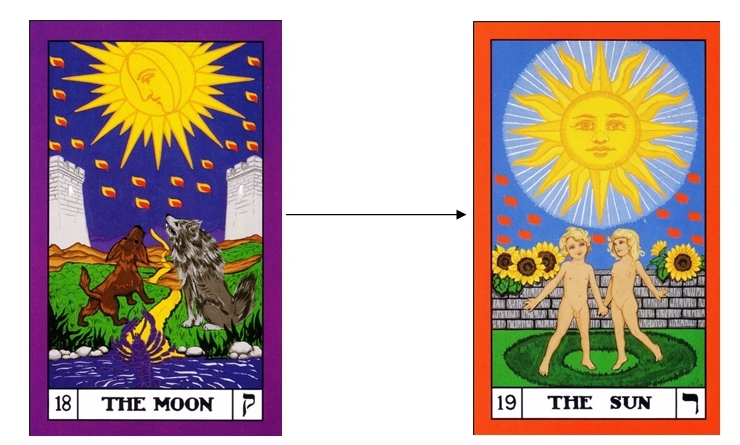
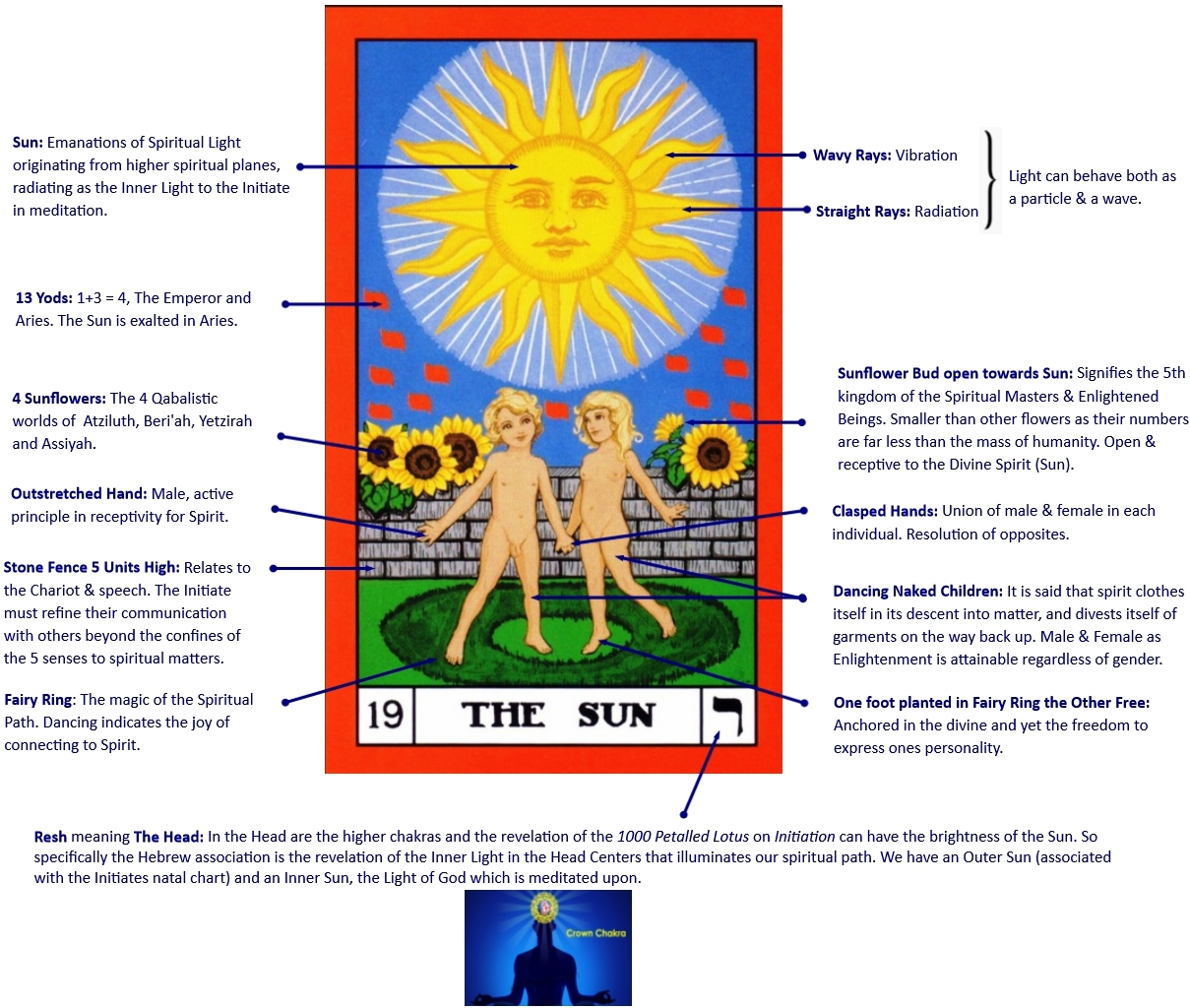
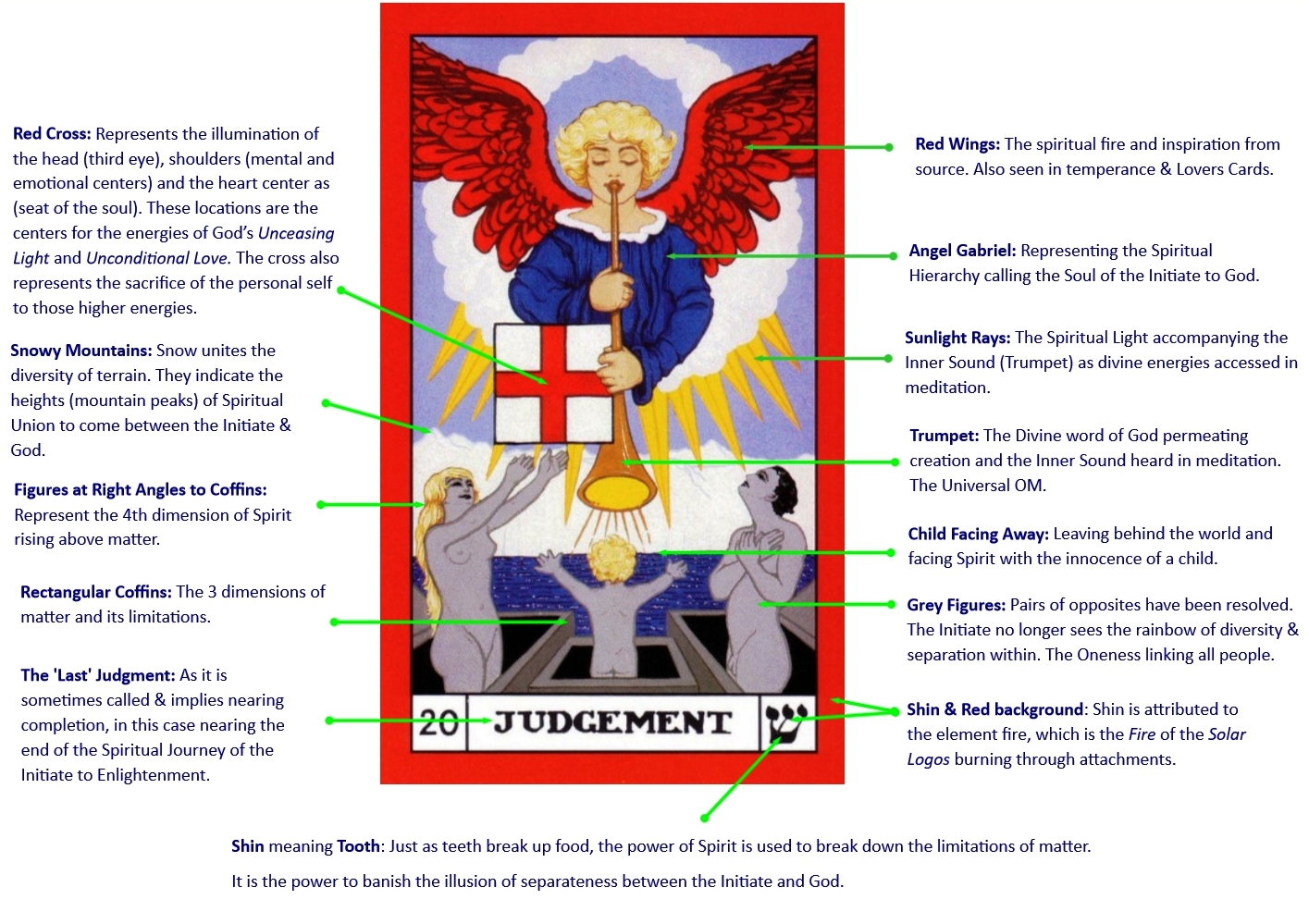
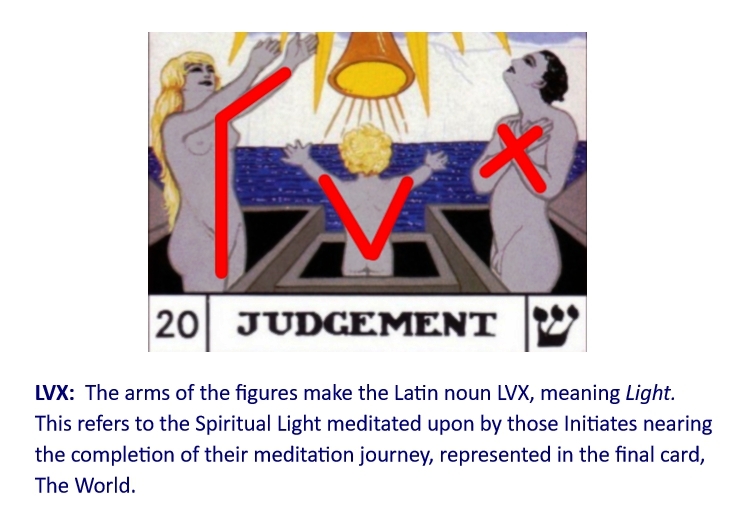
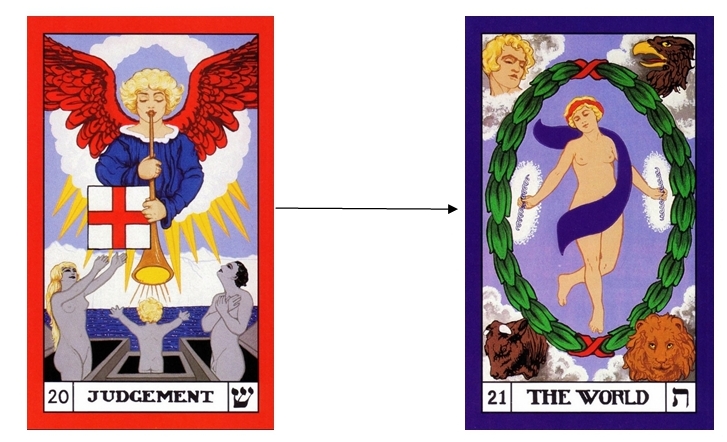
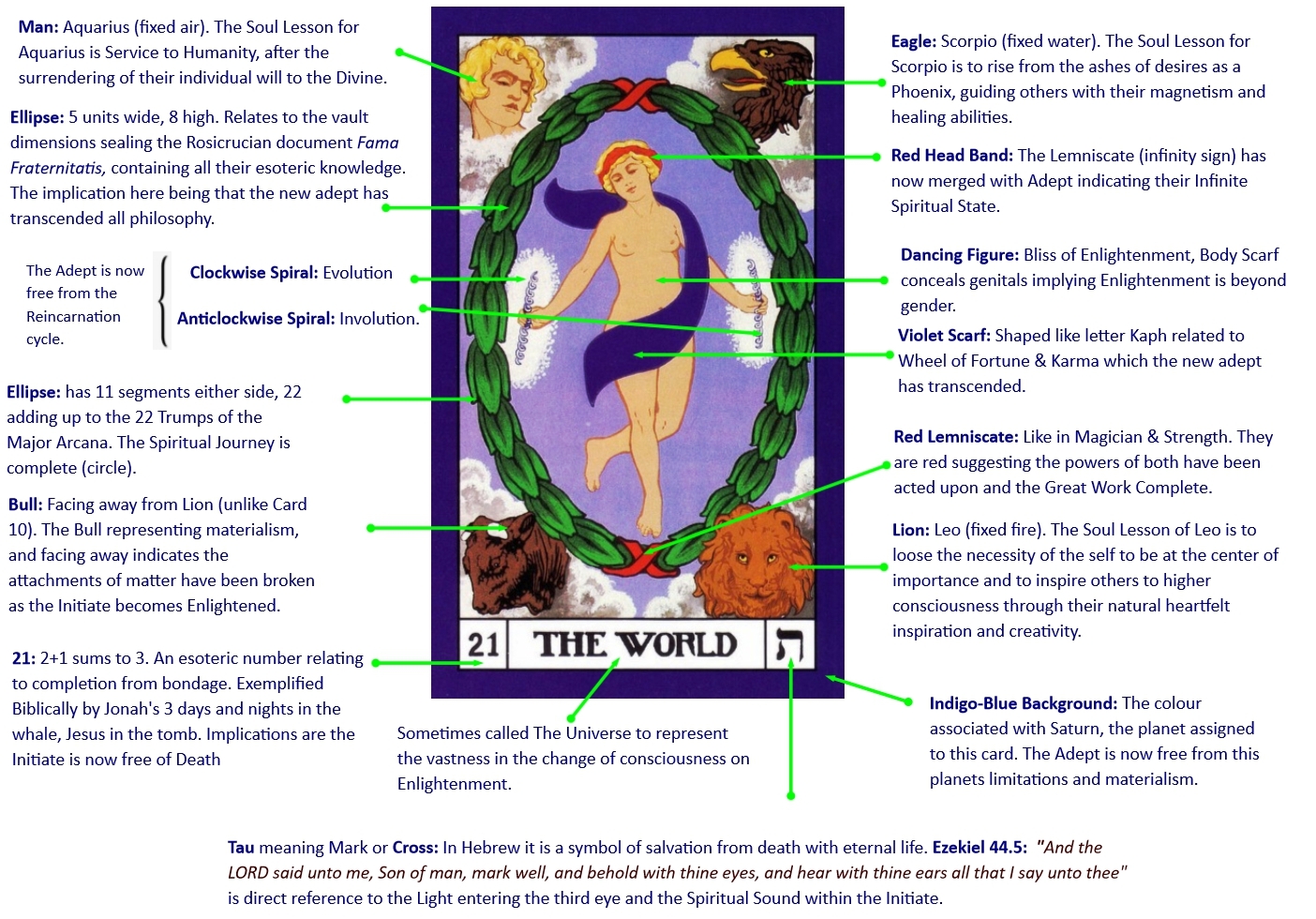
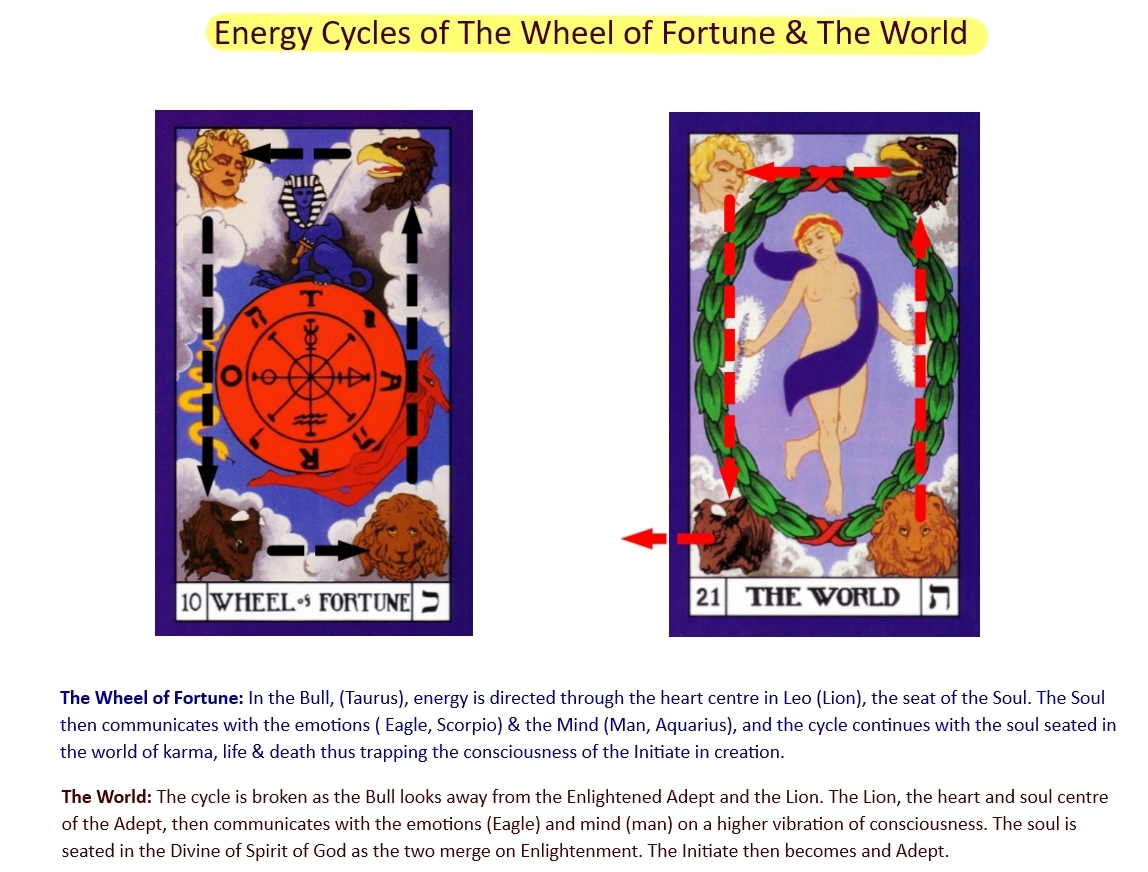
I was a member of B.O.T.A. and a co-founder of the Fraternity of The Hidden Light. This is the best analysis of the Major Arcana that I’ve ever read.
I’m in the process of the study of the course and this article feels like an expansion of it
Thank you so much for the effort of writing it and share it
Wondering who was the writer of this to give credit
Can I just say that I LOVE this and the person(s) that made it possible for me to see this?